Update Sept. 19, 2019
City Council Considers New IPL Rates
The Independence City Council is closing in on potential major changes in IPL rate reductions - the first significant rate change since 2008.
Key features of the new IPL rates would be a 6% across the board rate reduction (already approved by the City Council), consolidated rate categories from 22 to 12, a higher monthly minimum bill/customer service charge and adopting a flat energy rate with some differences between winter and summer seasons.
Here’s slides from the Sept. 19 presentation at the Public Utilities Advisory Board.
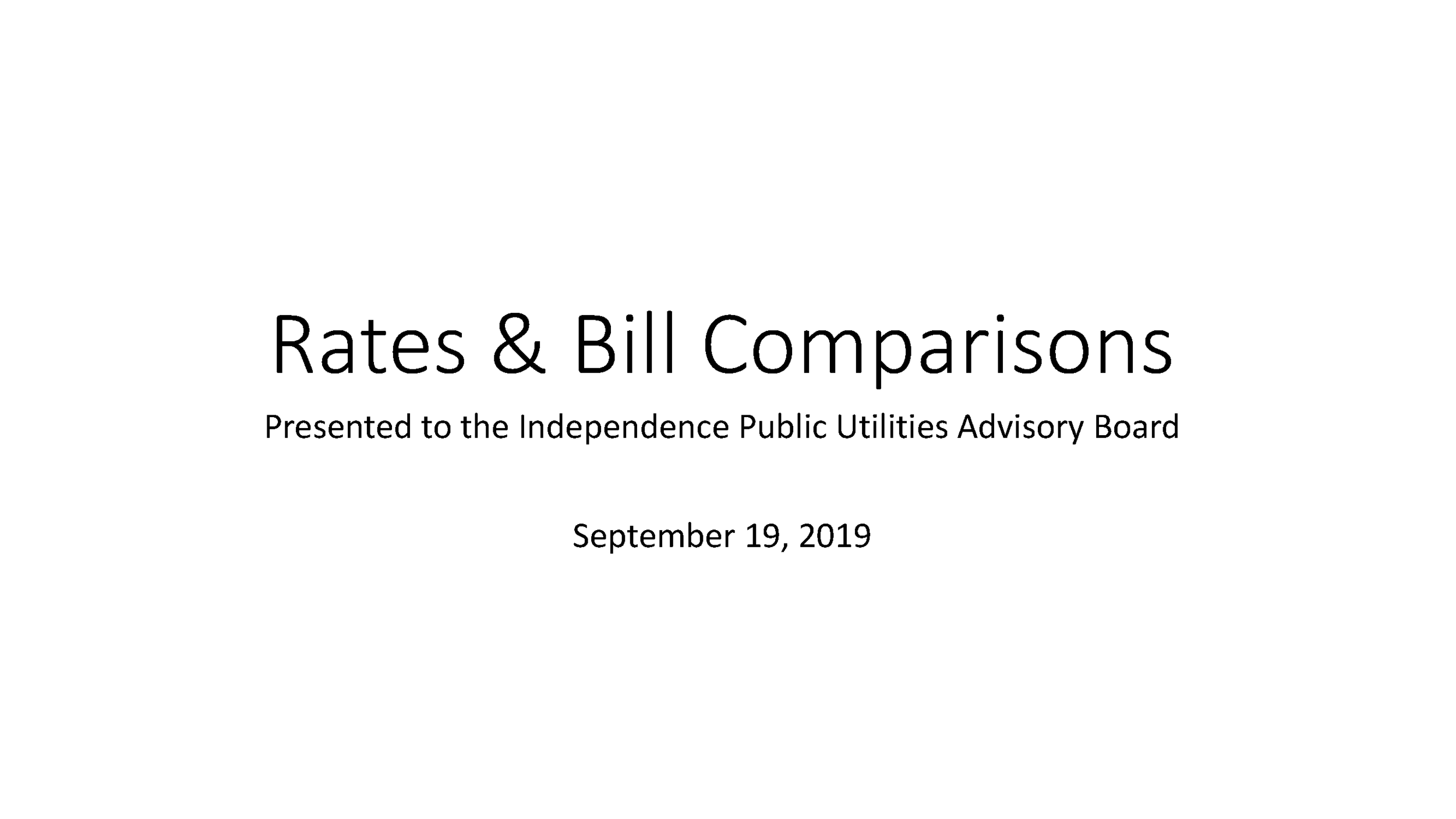
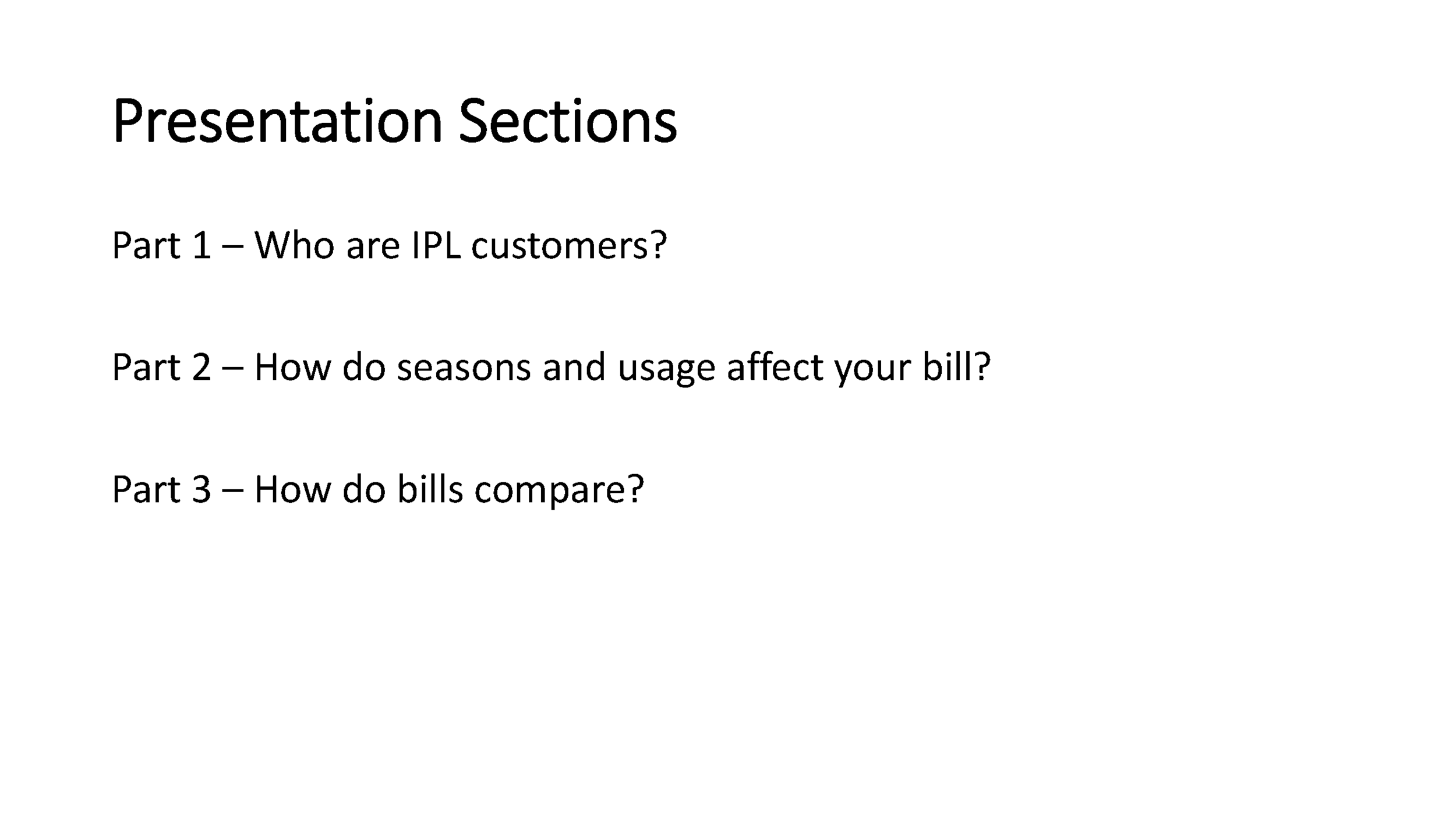
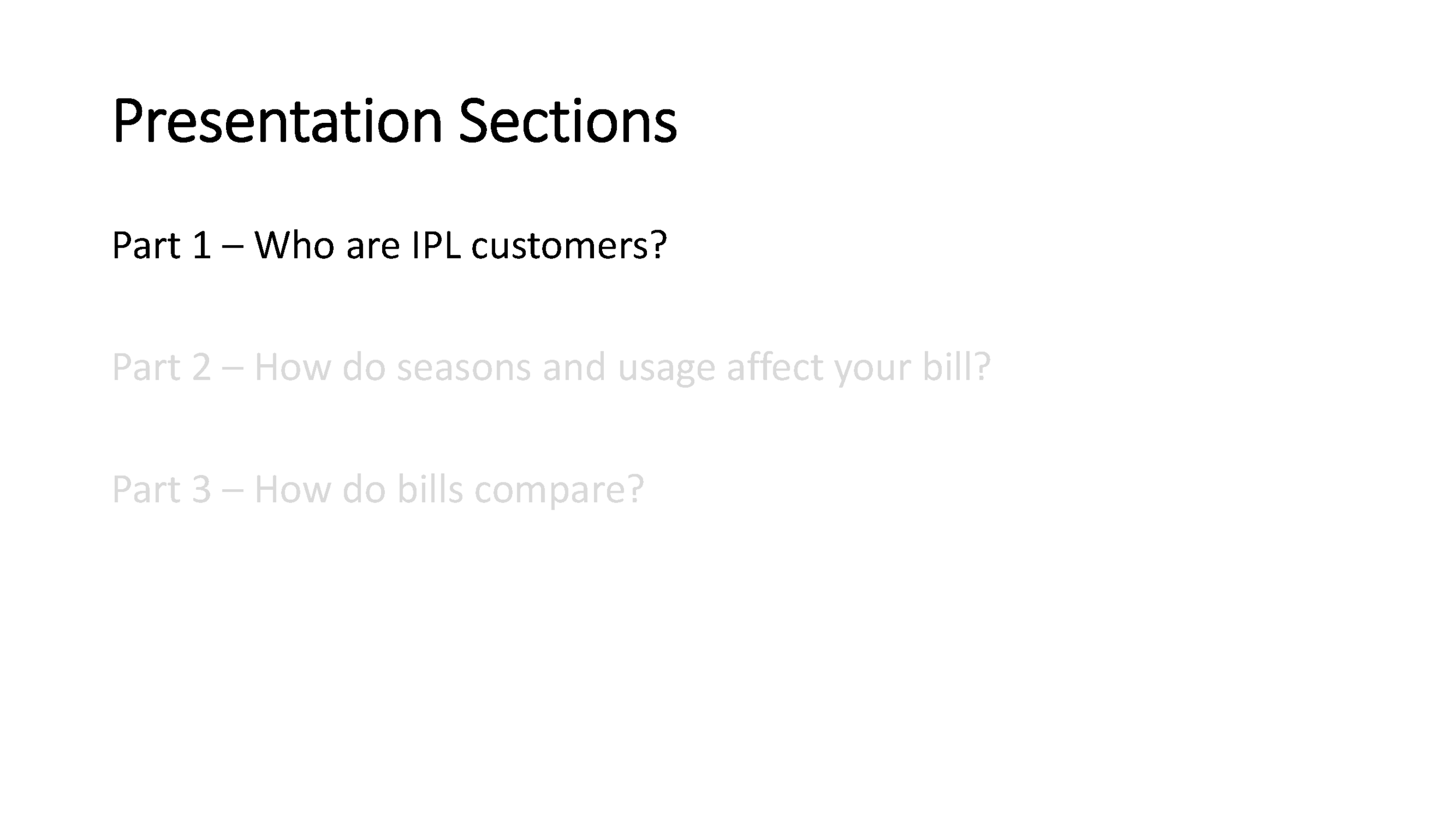
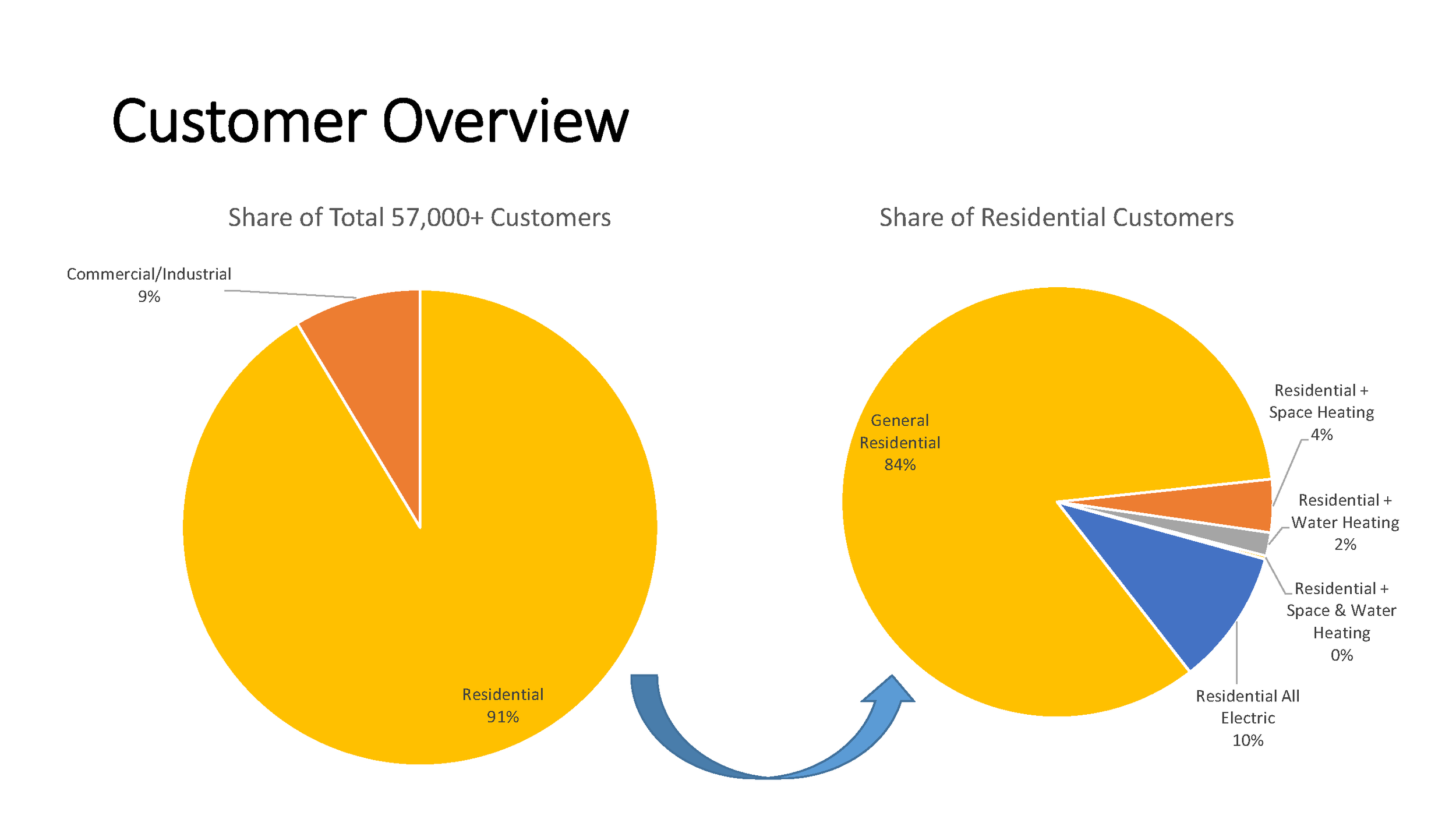

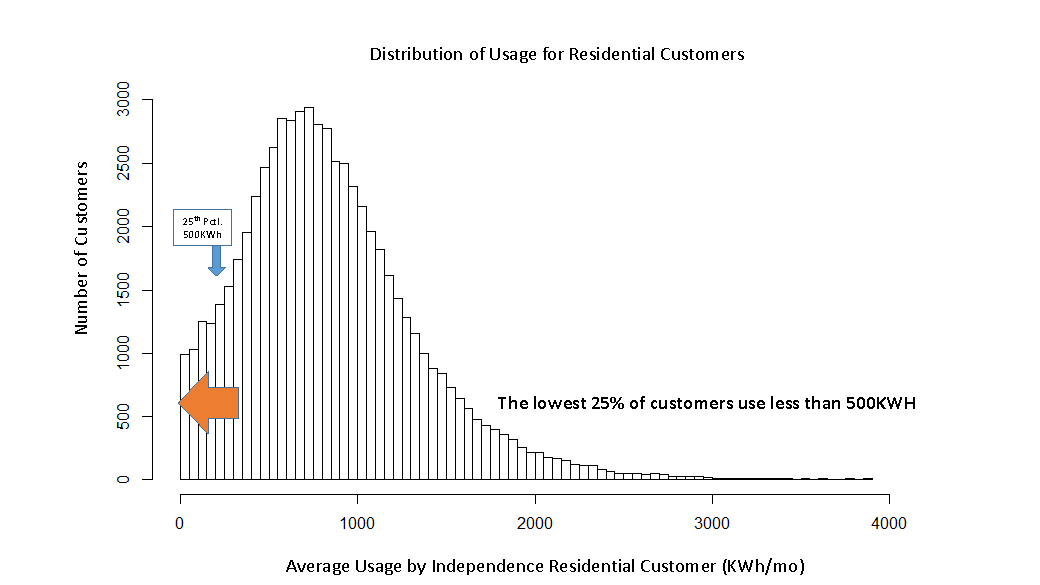

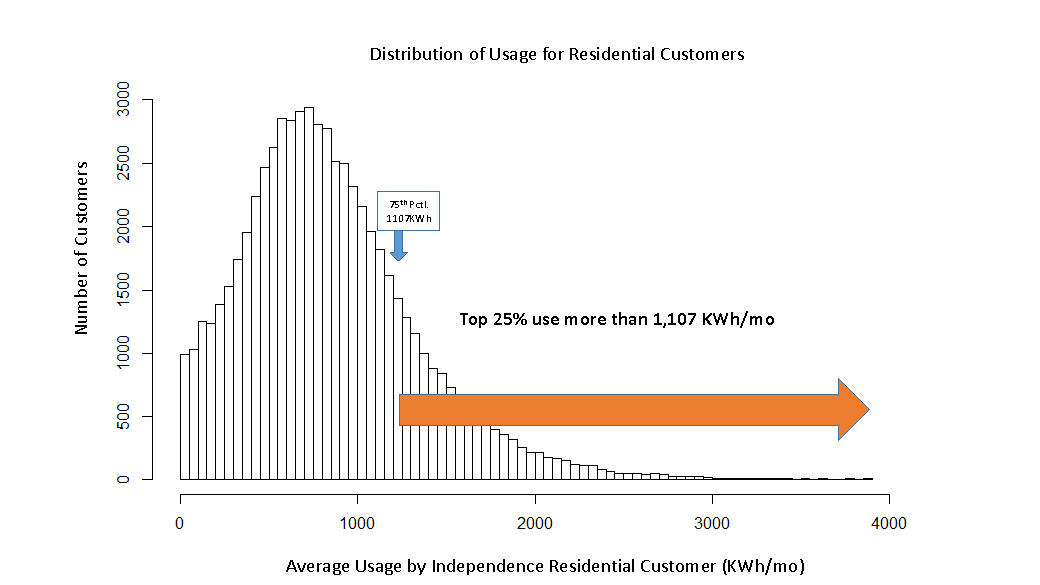

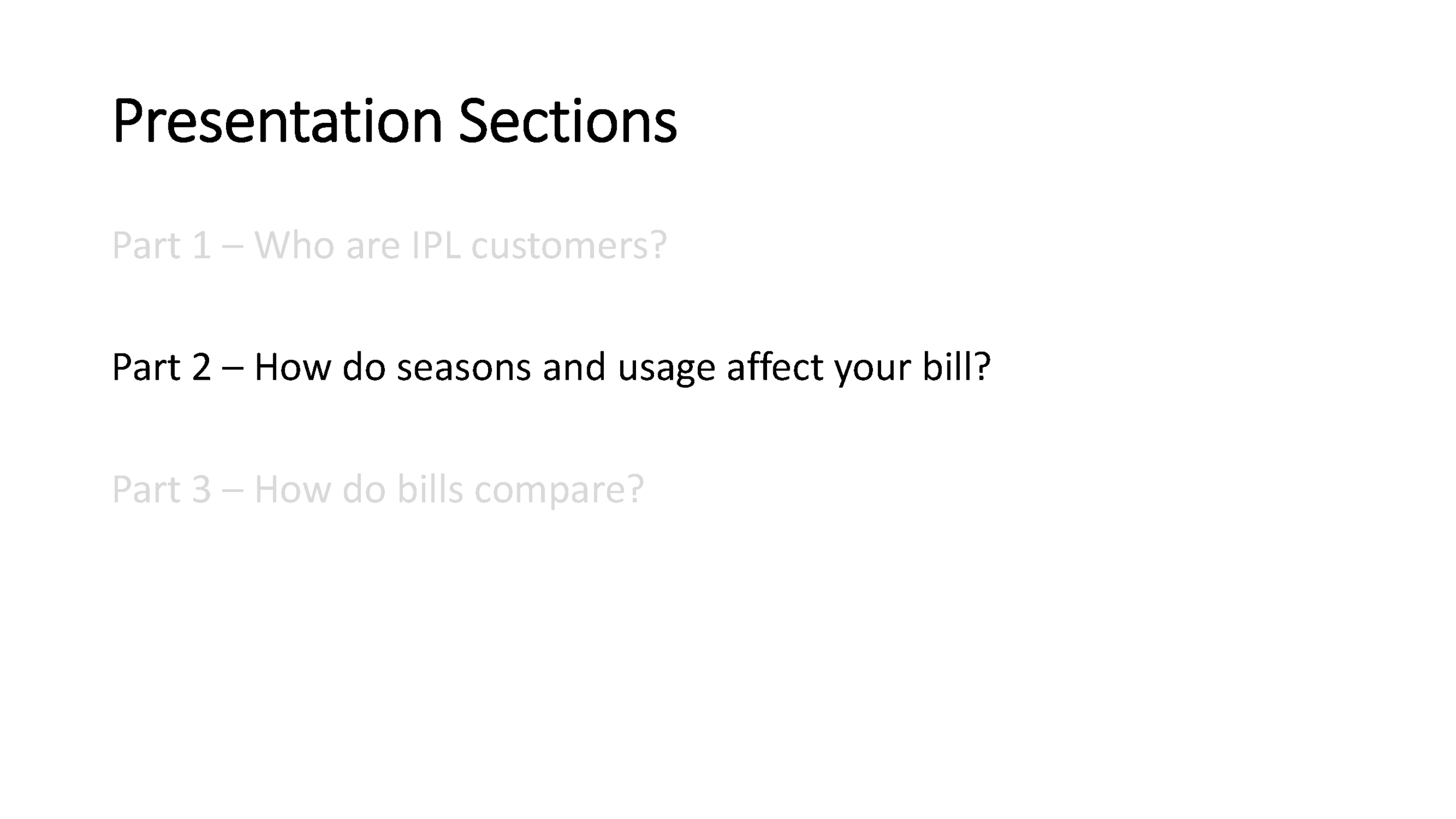
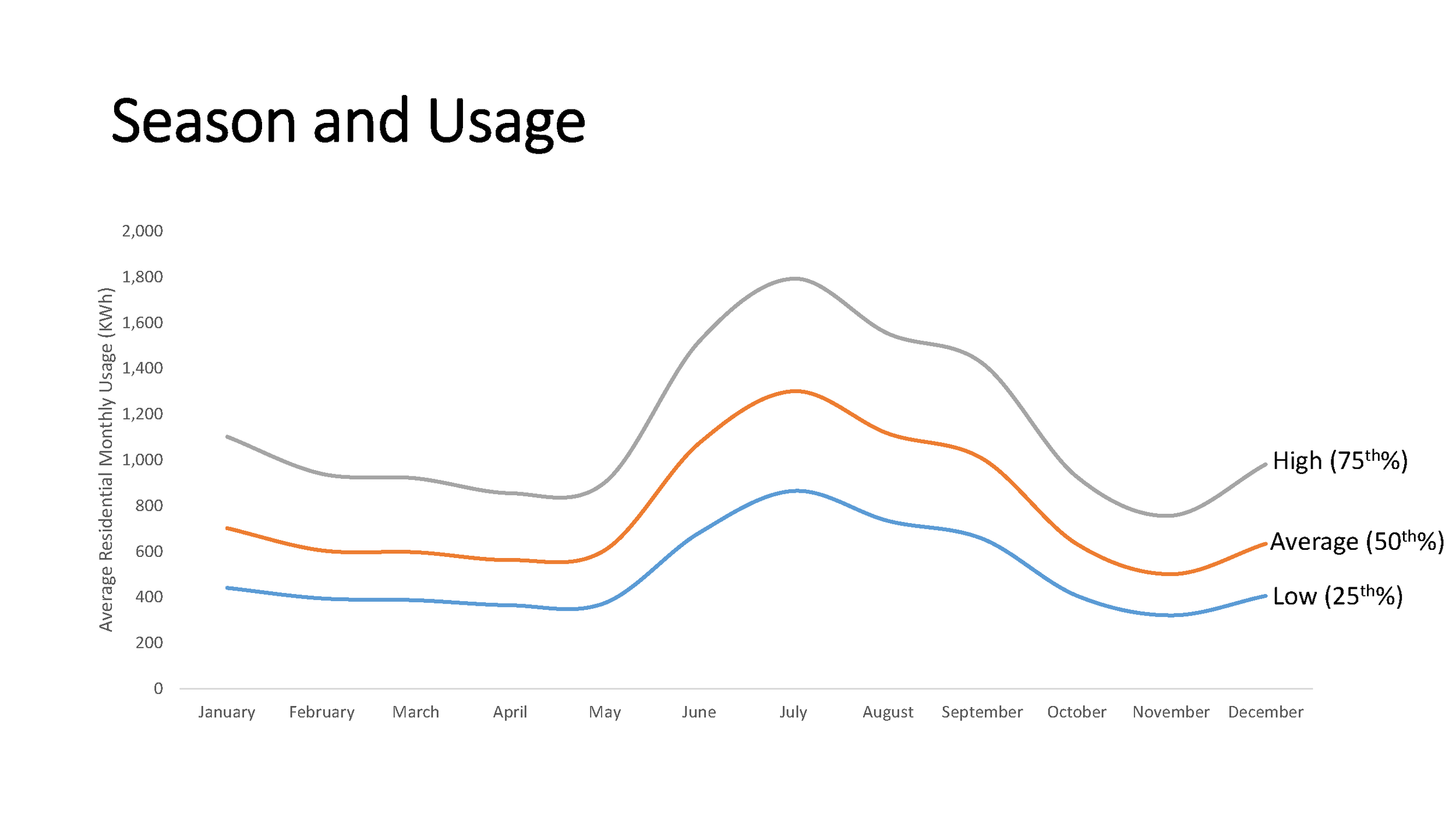
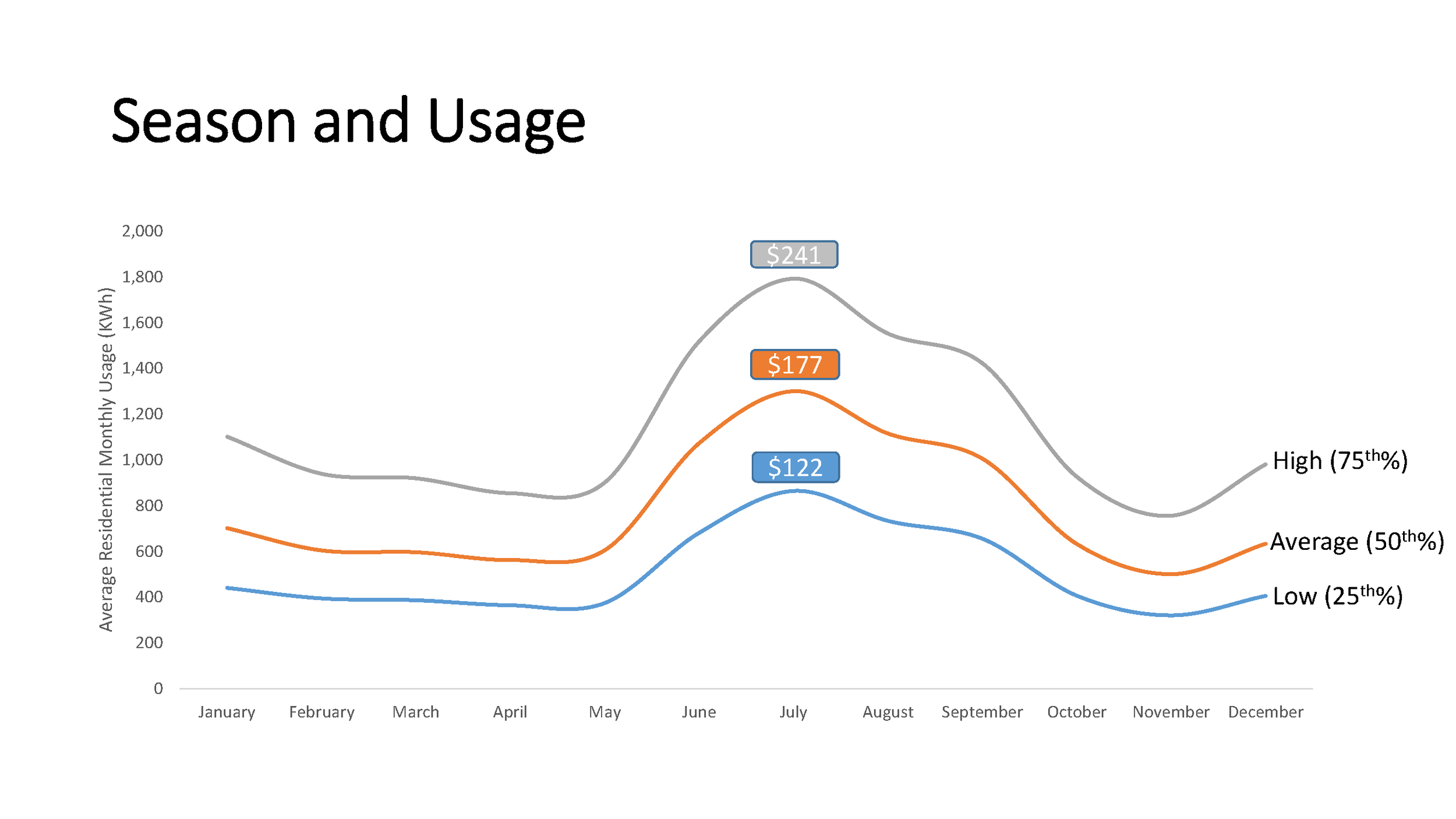
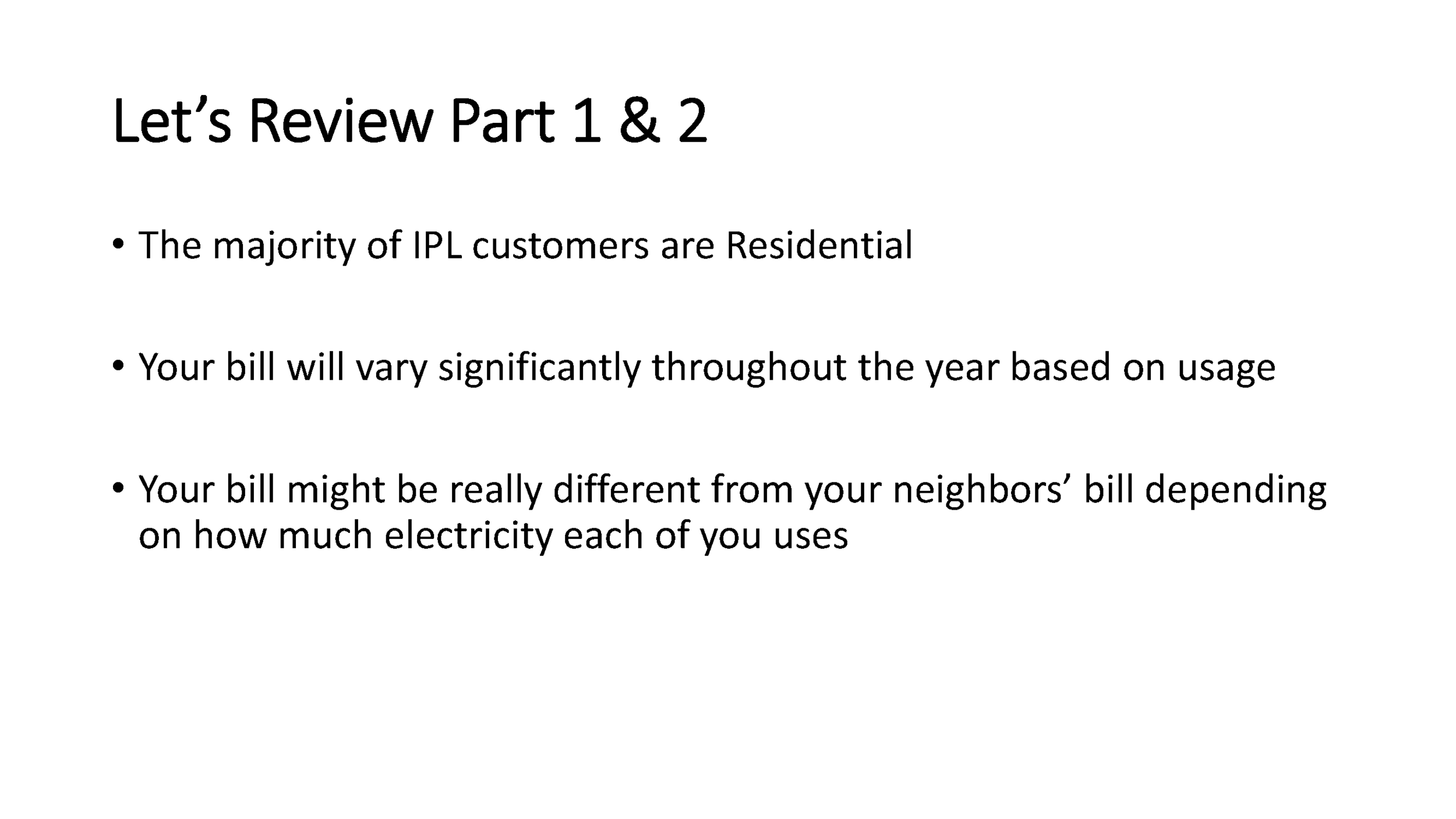
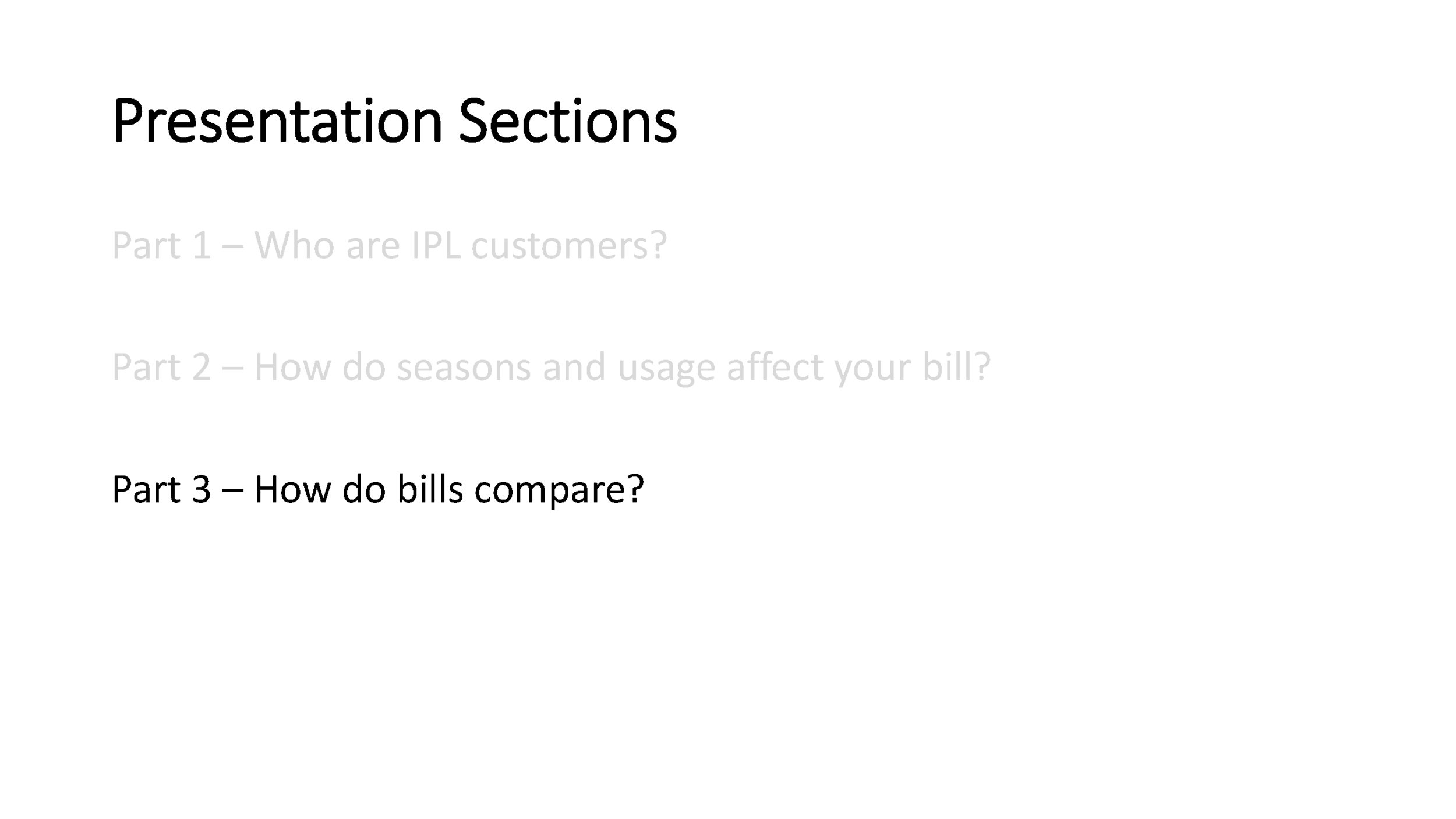
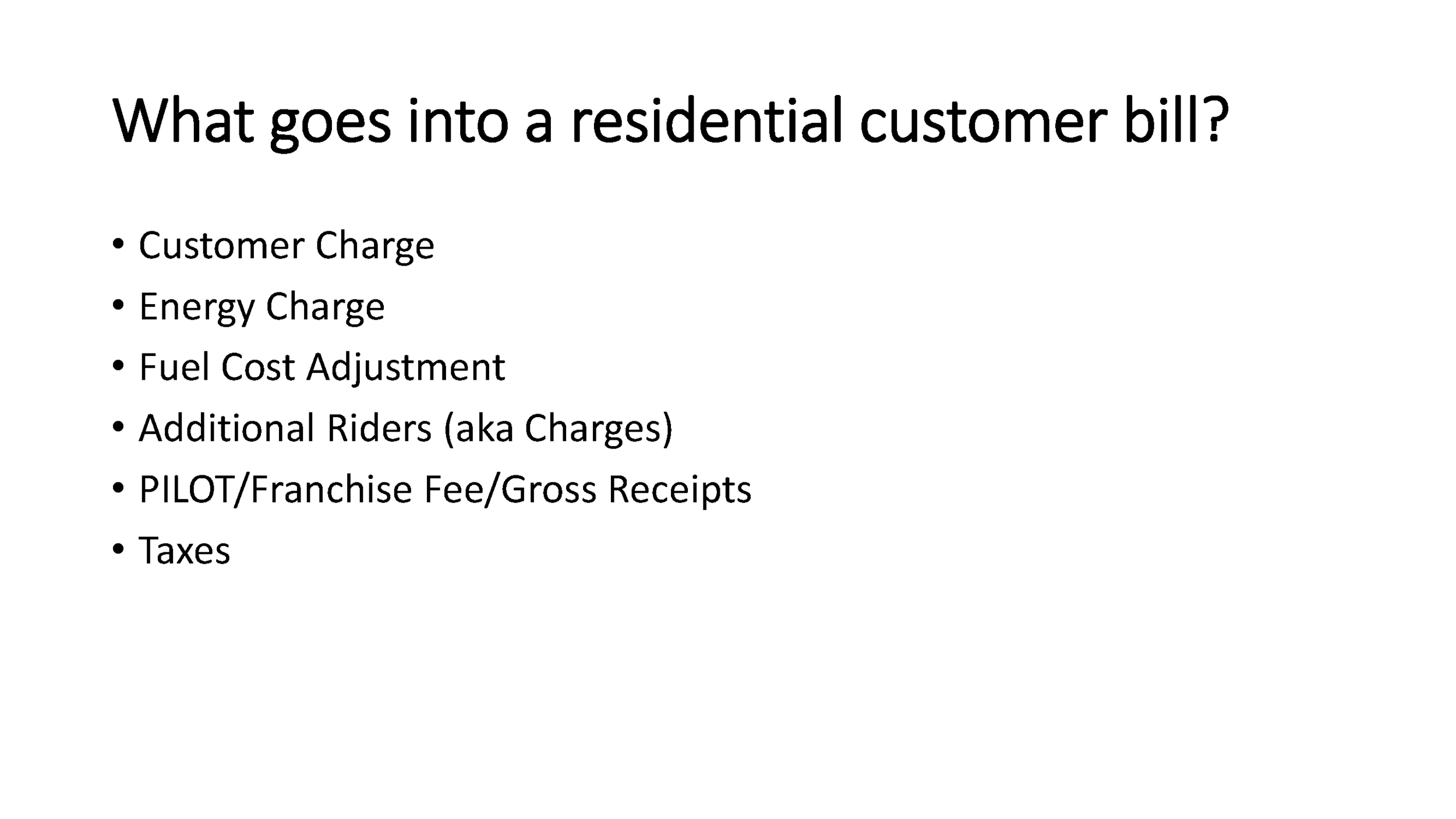
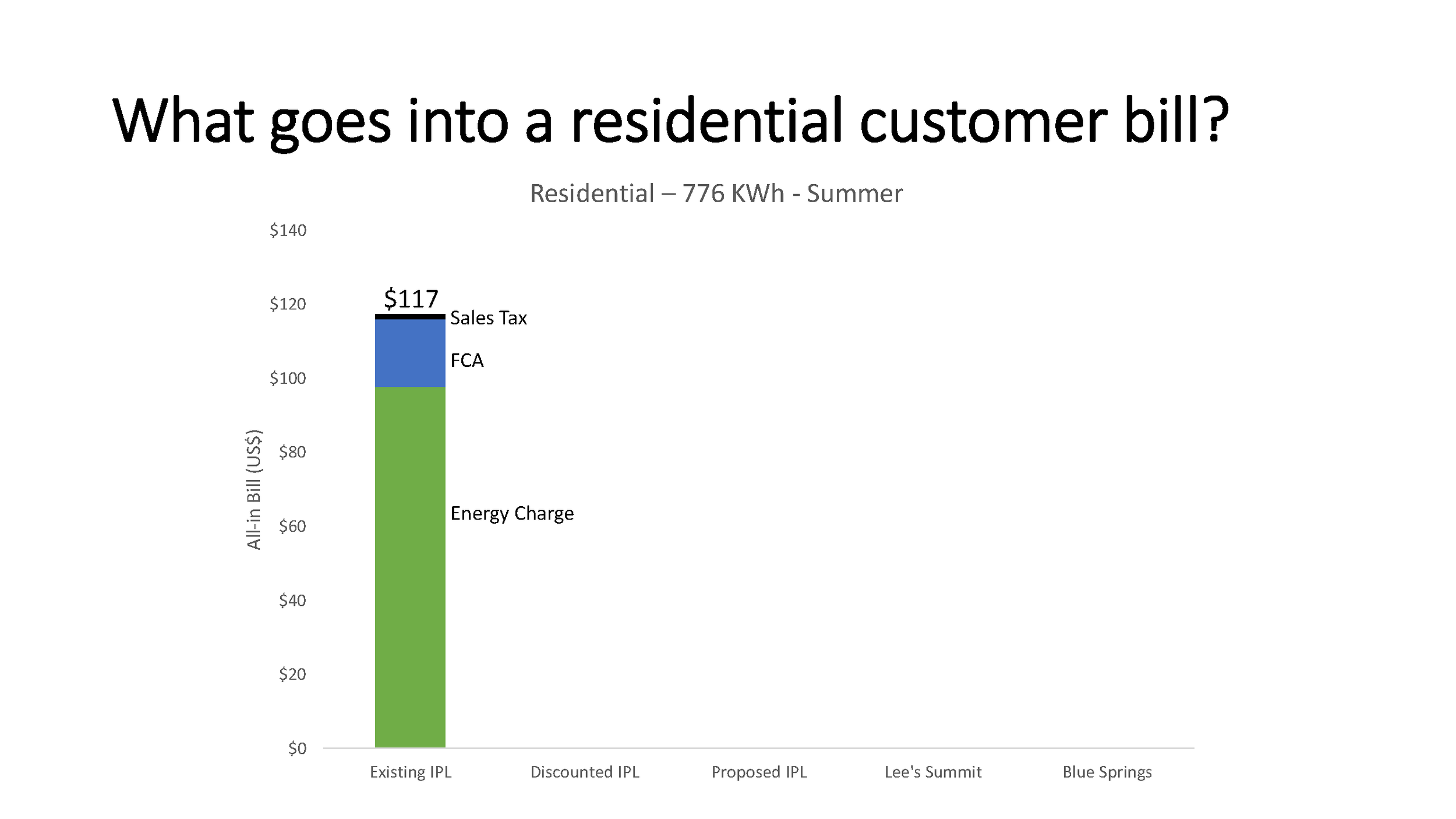
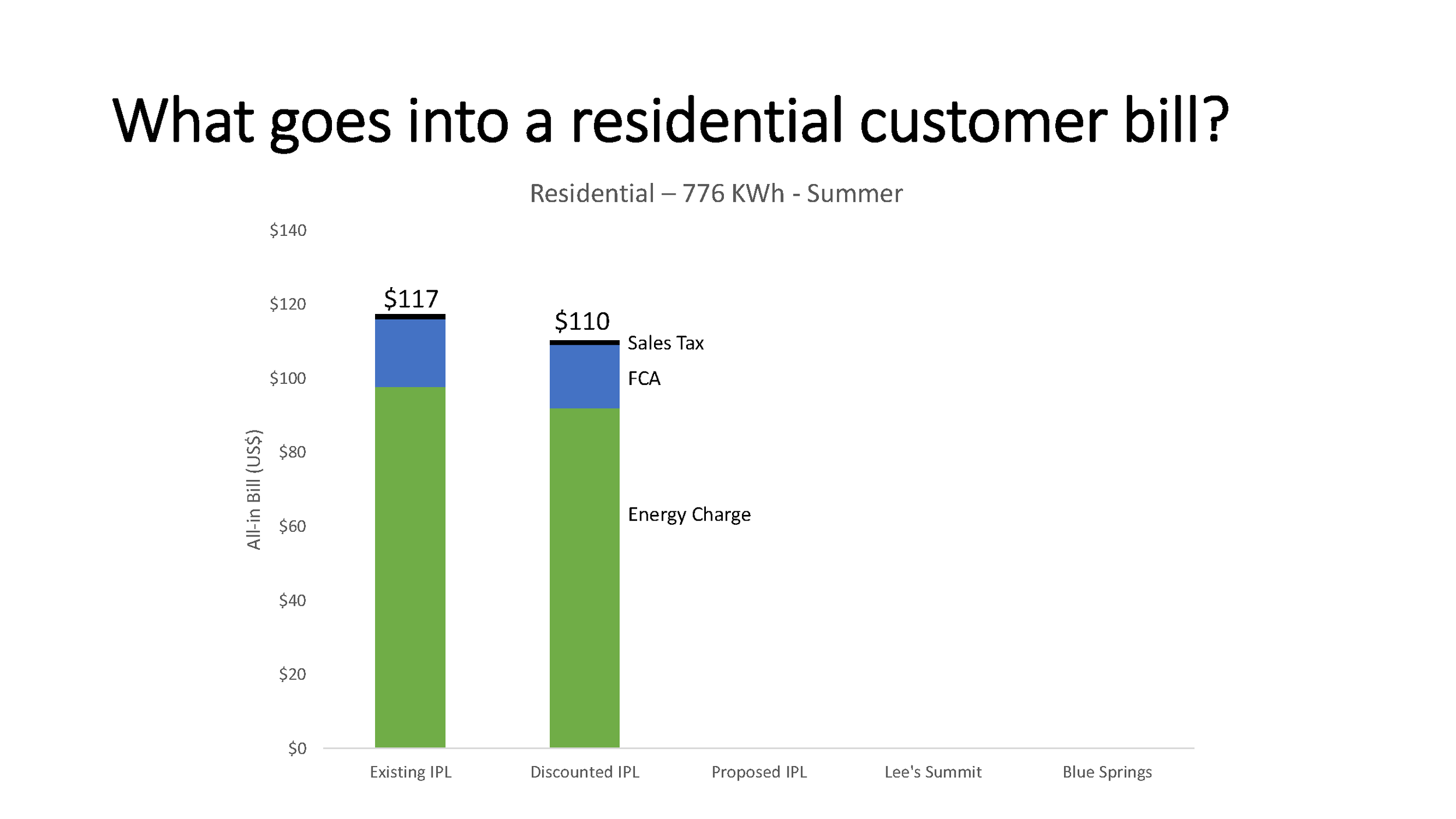
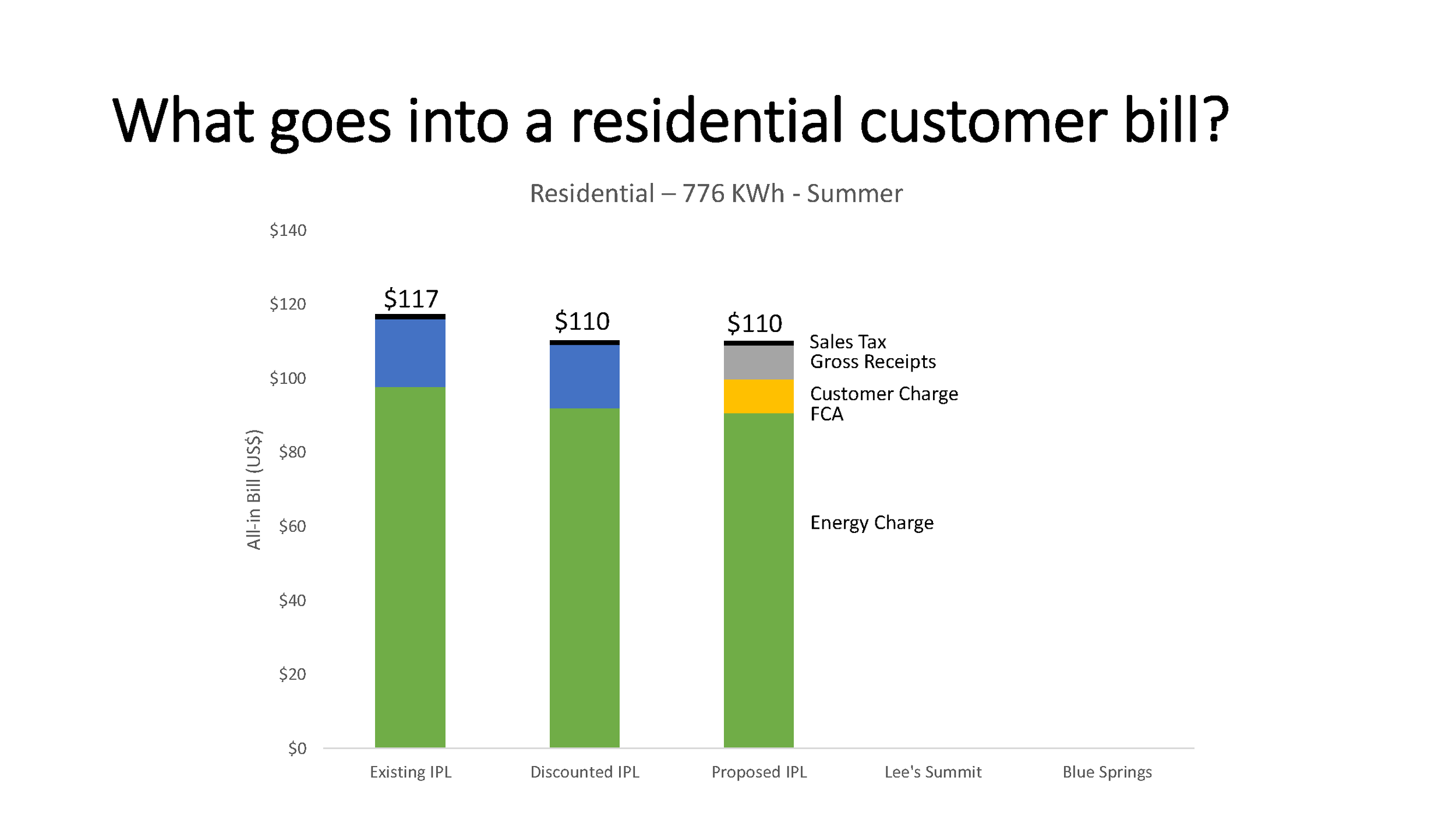

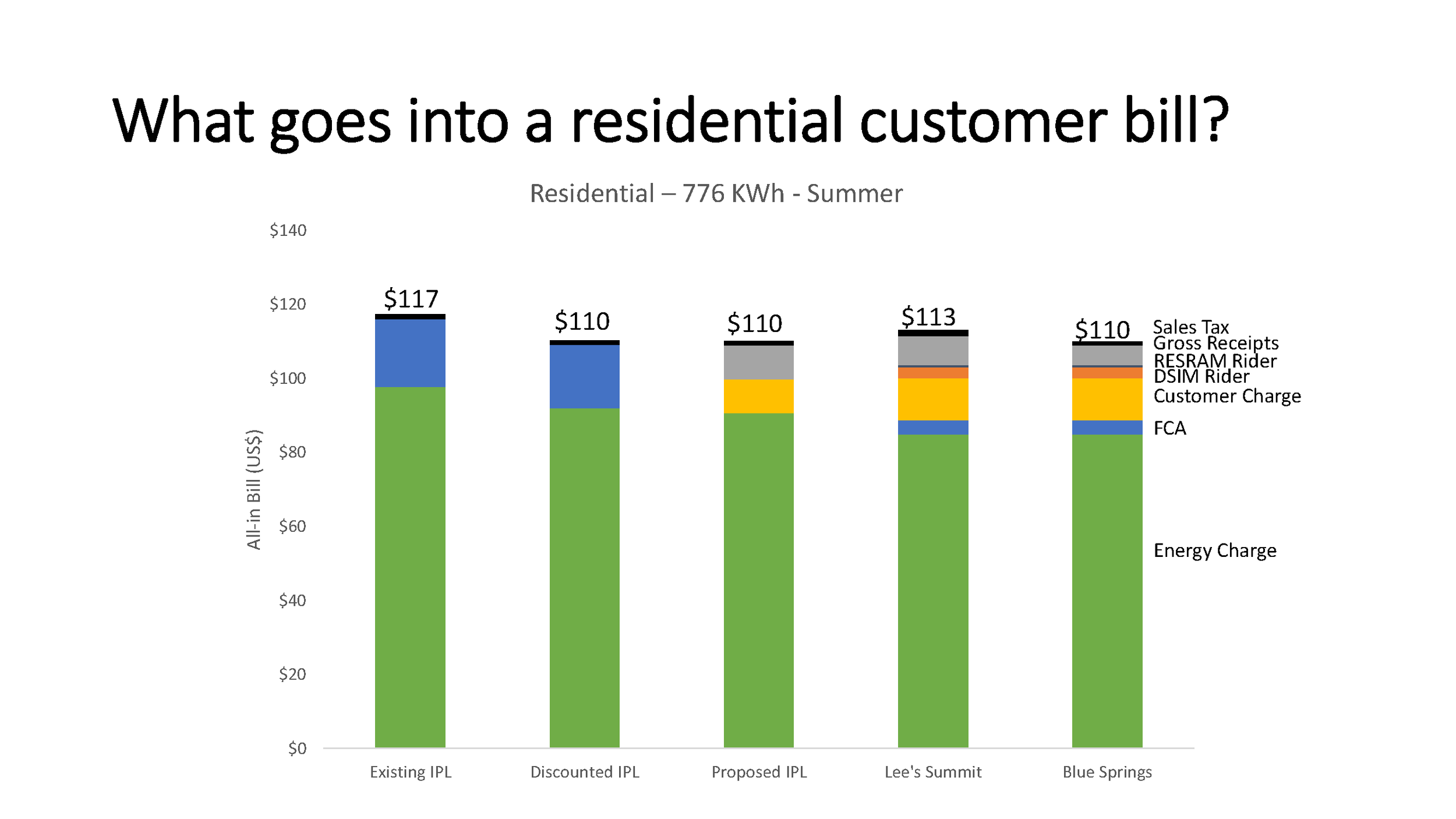
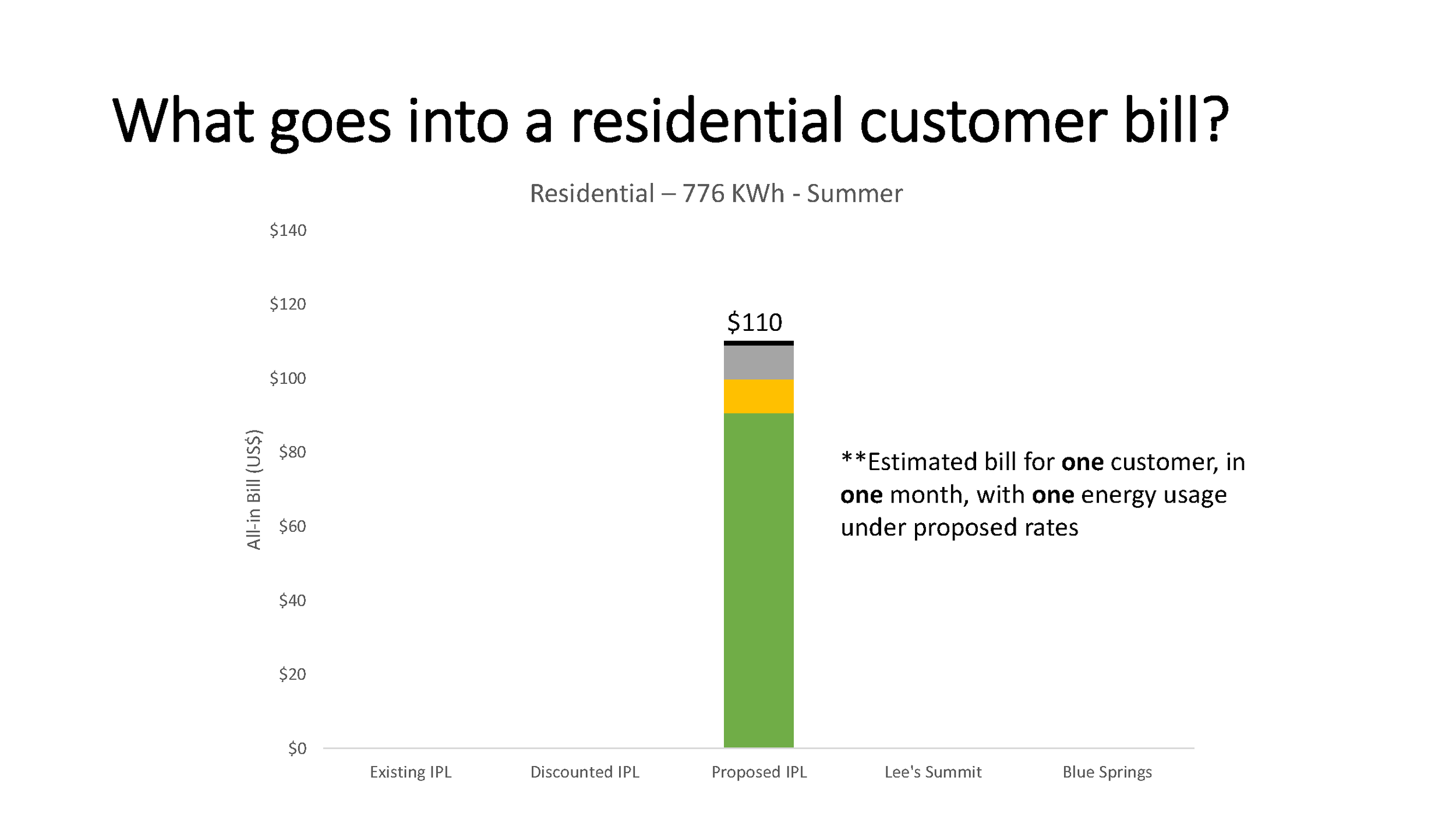
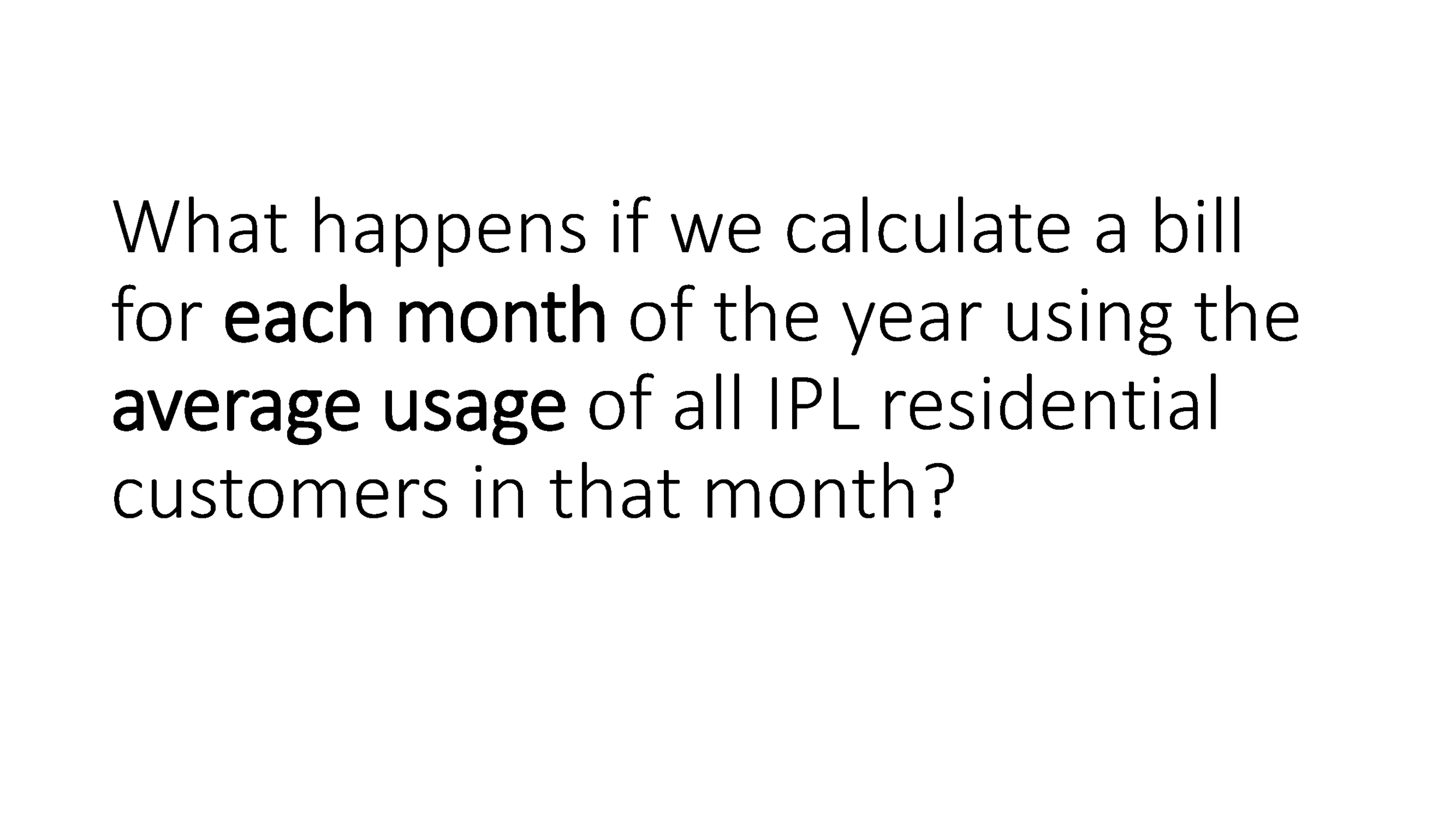
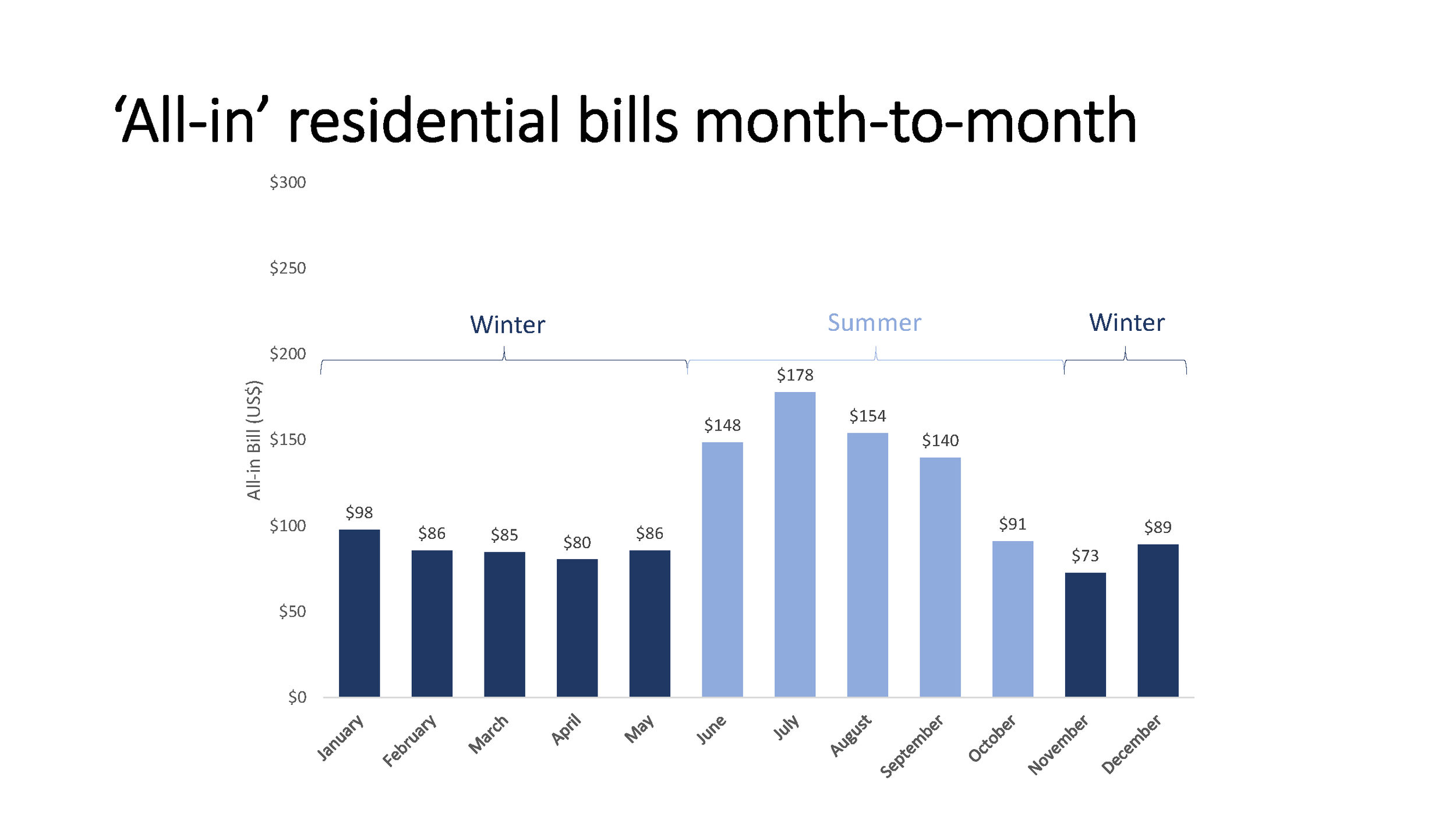
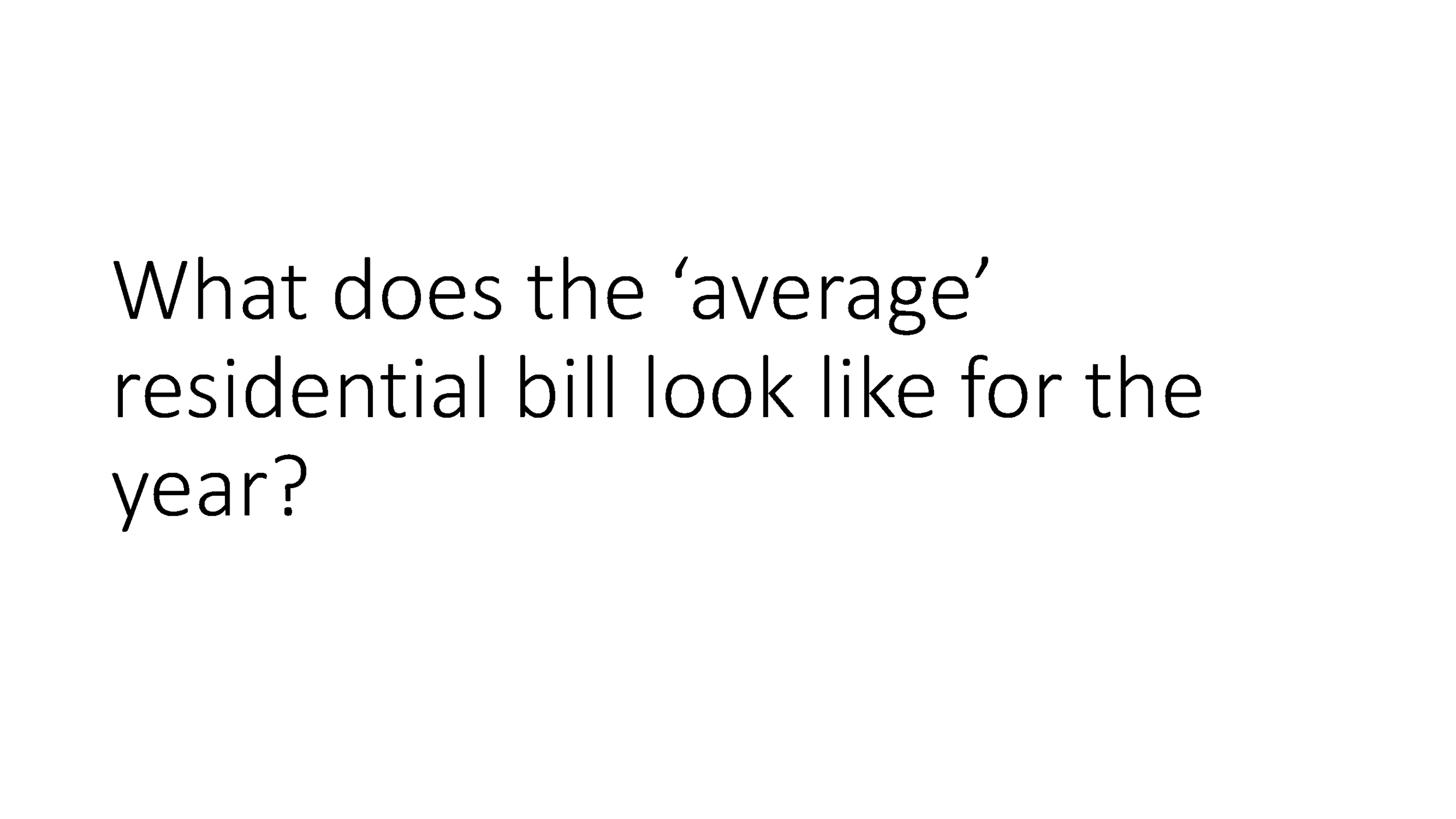
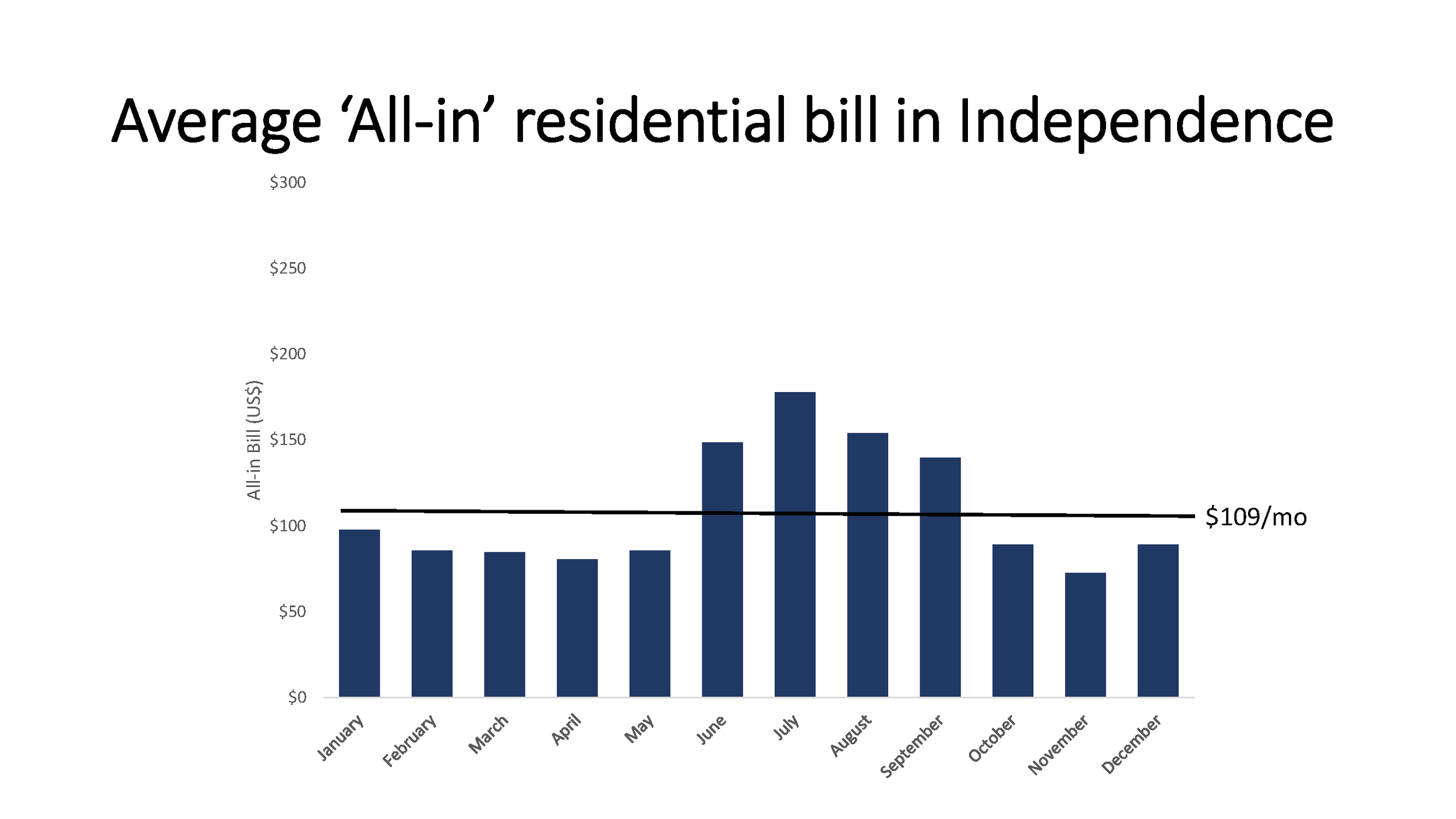
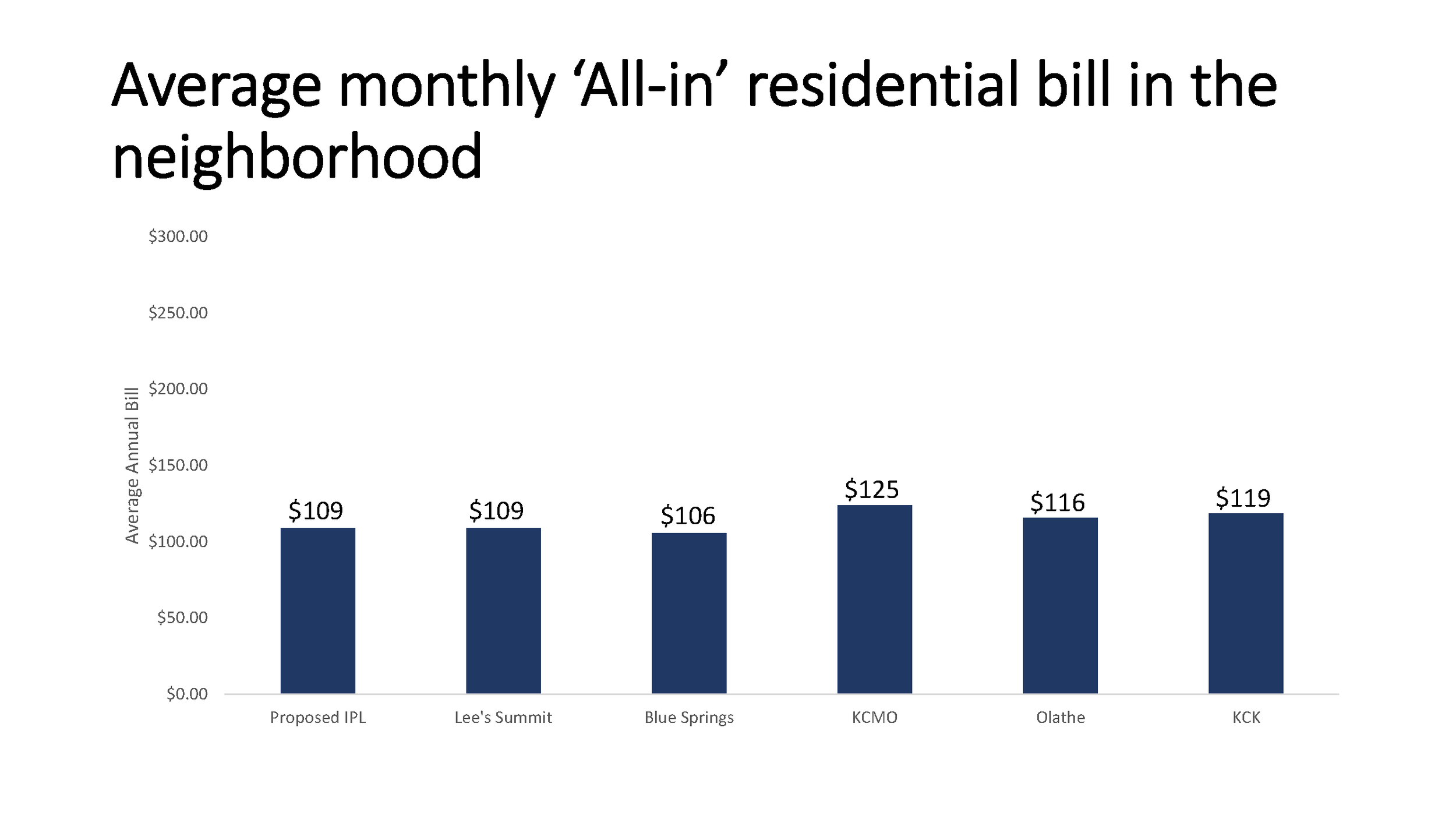
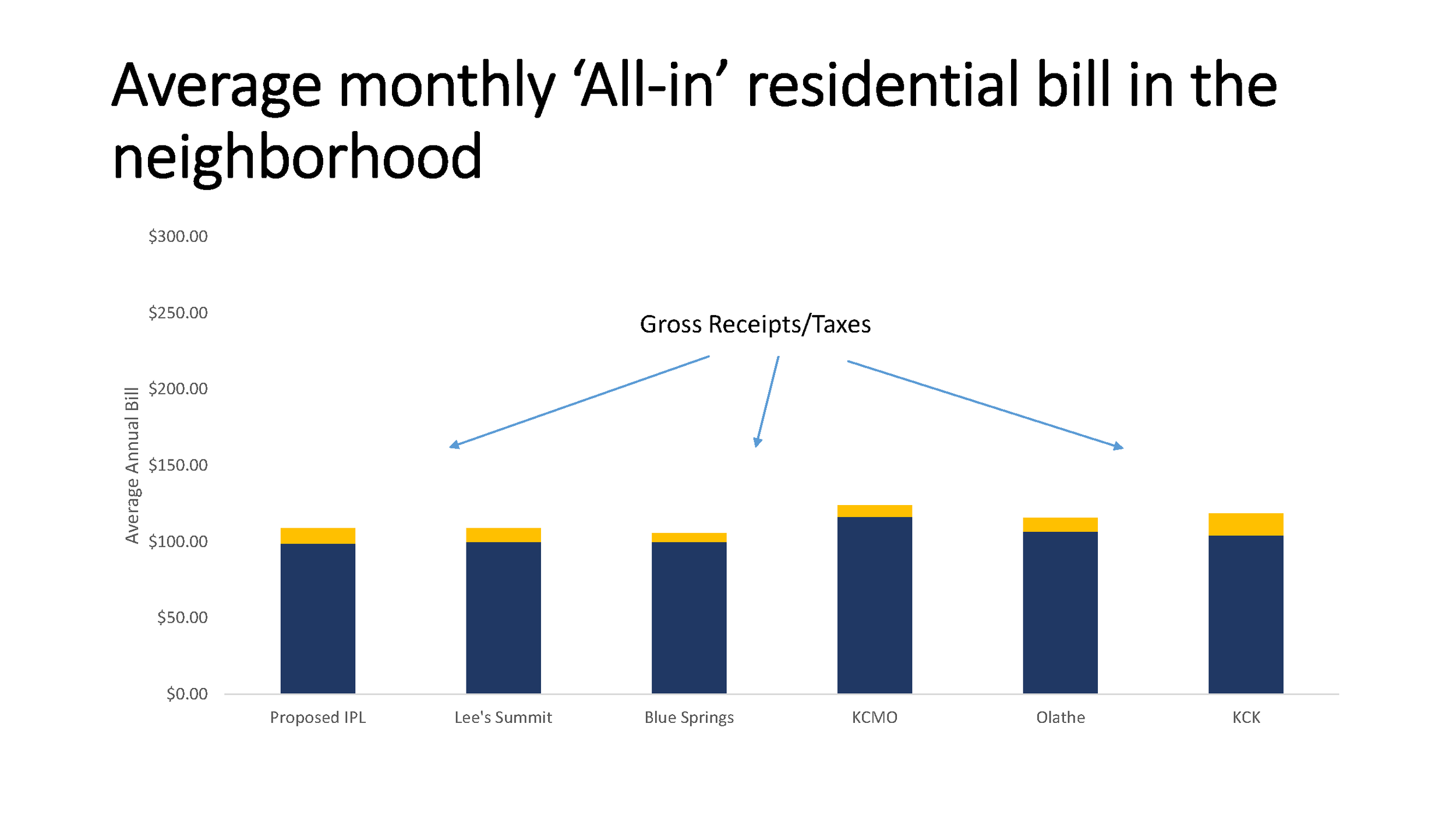
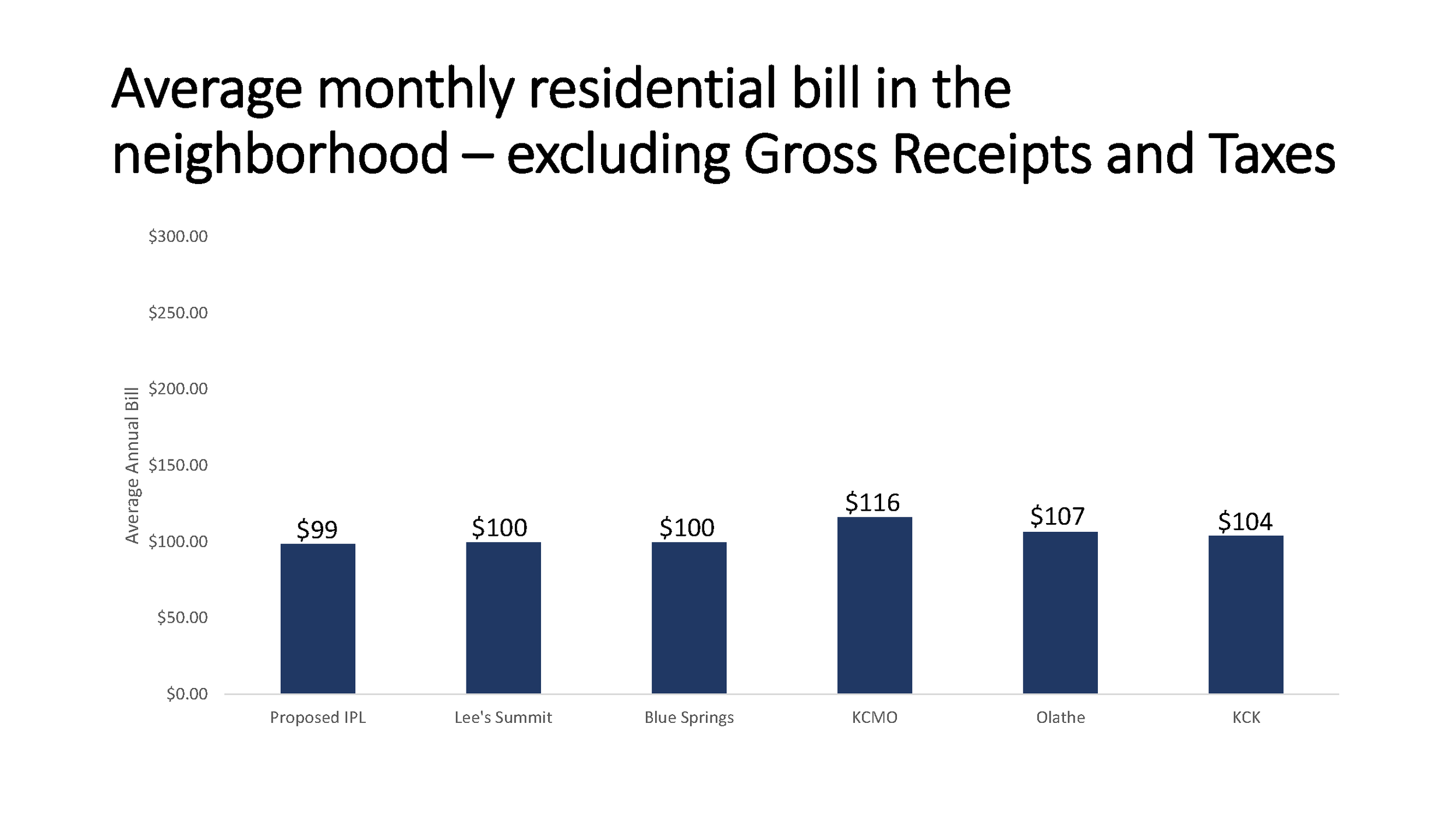
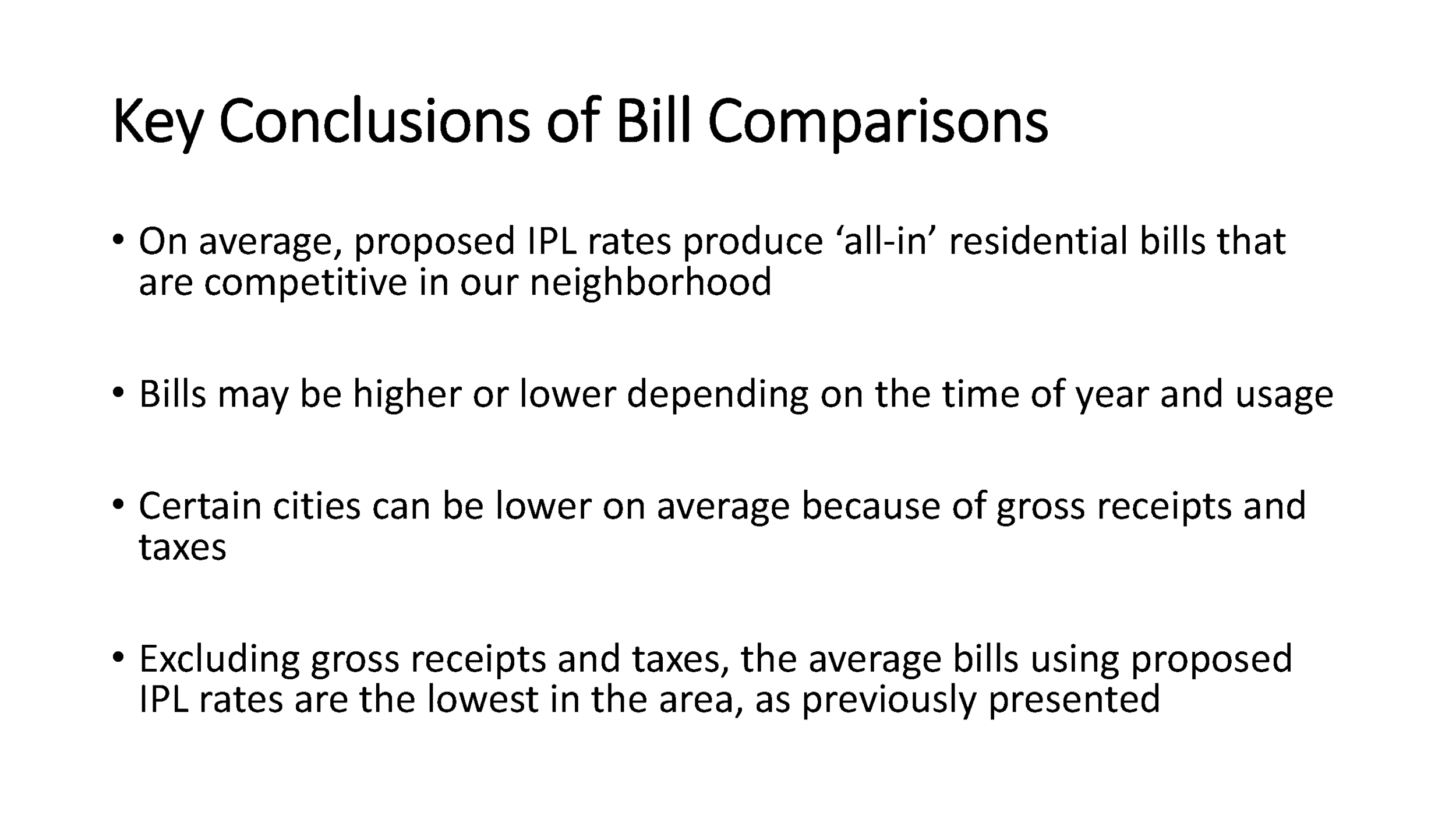
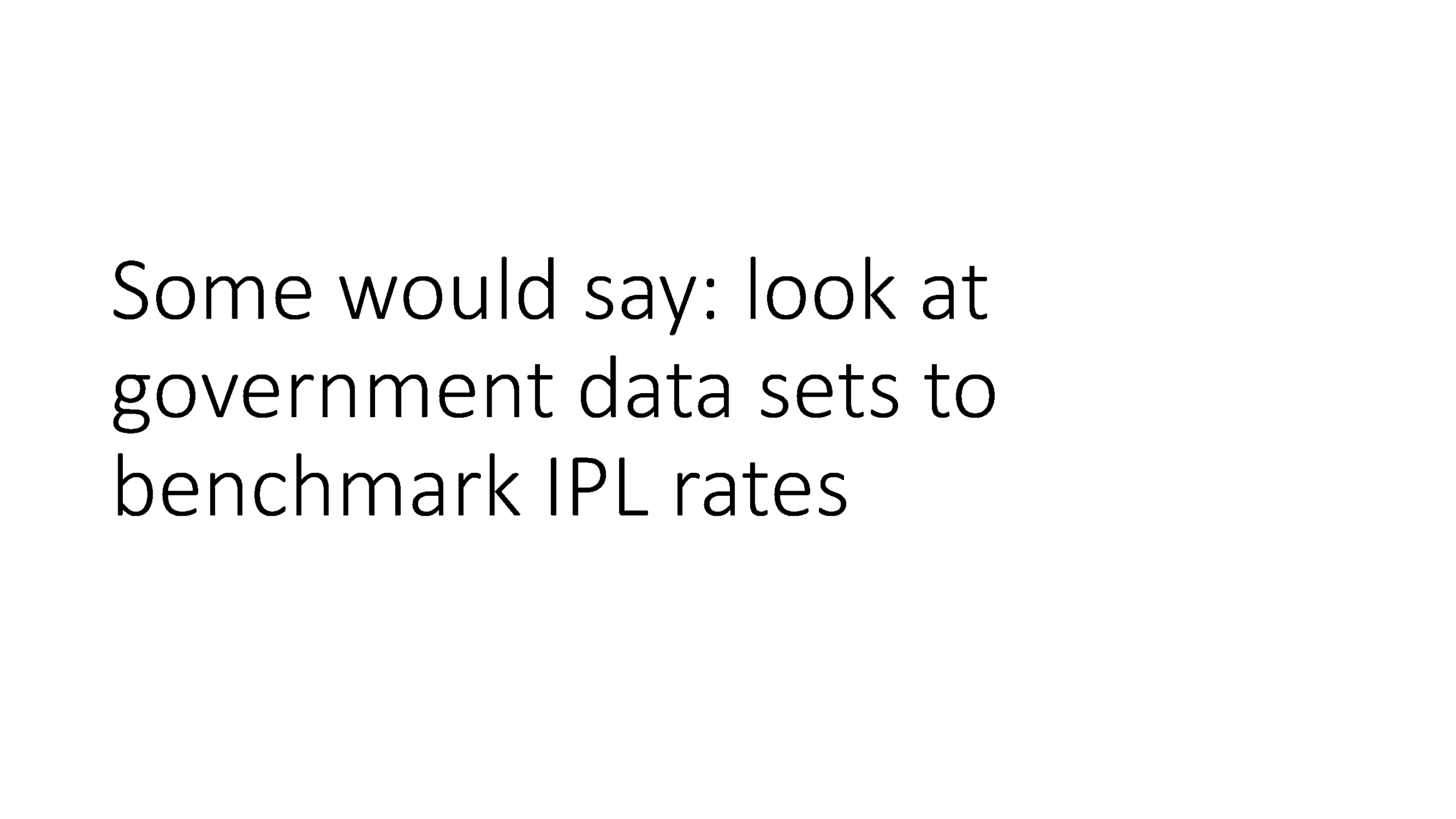
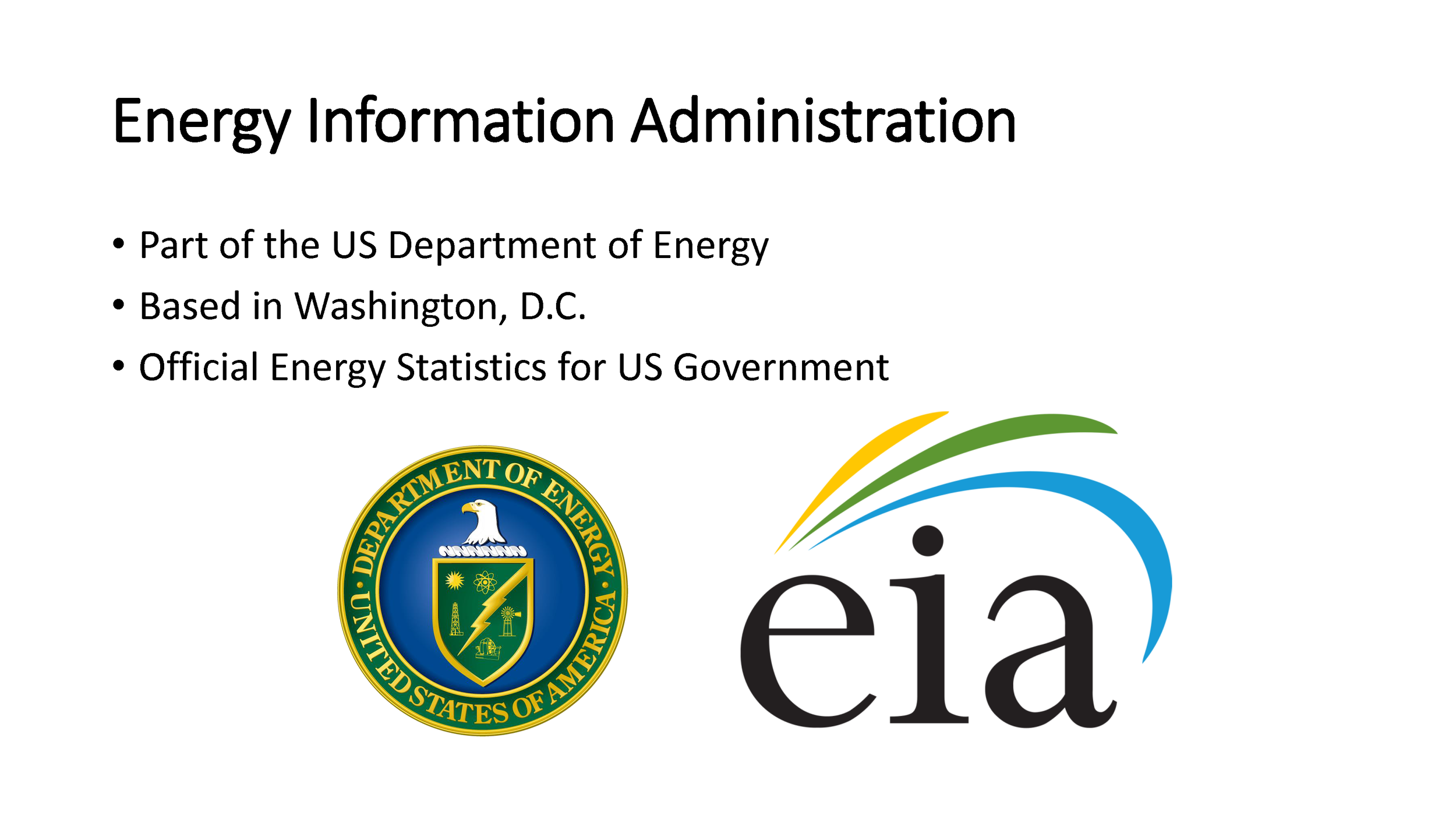
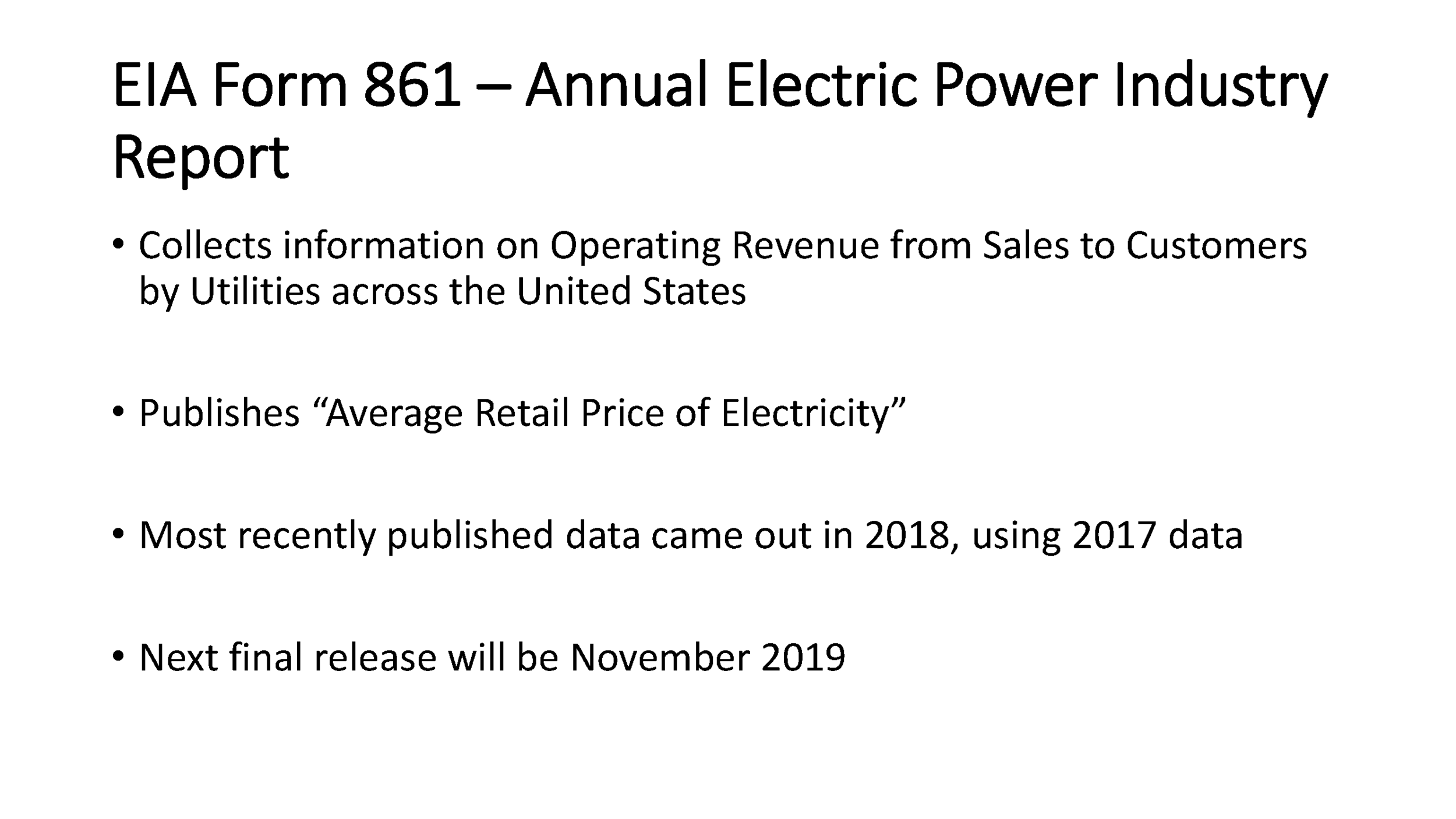
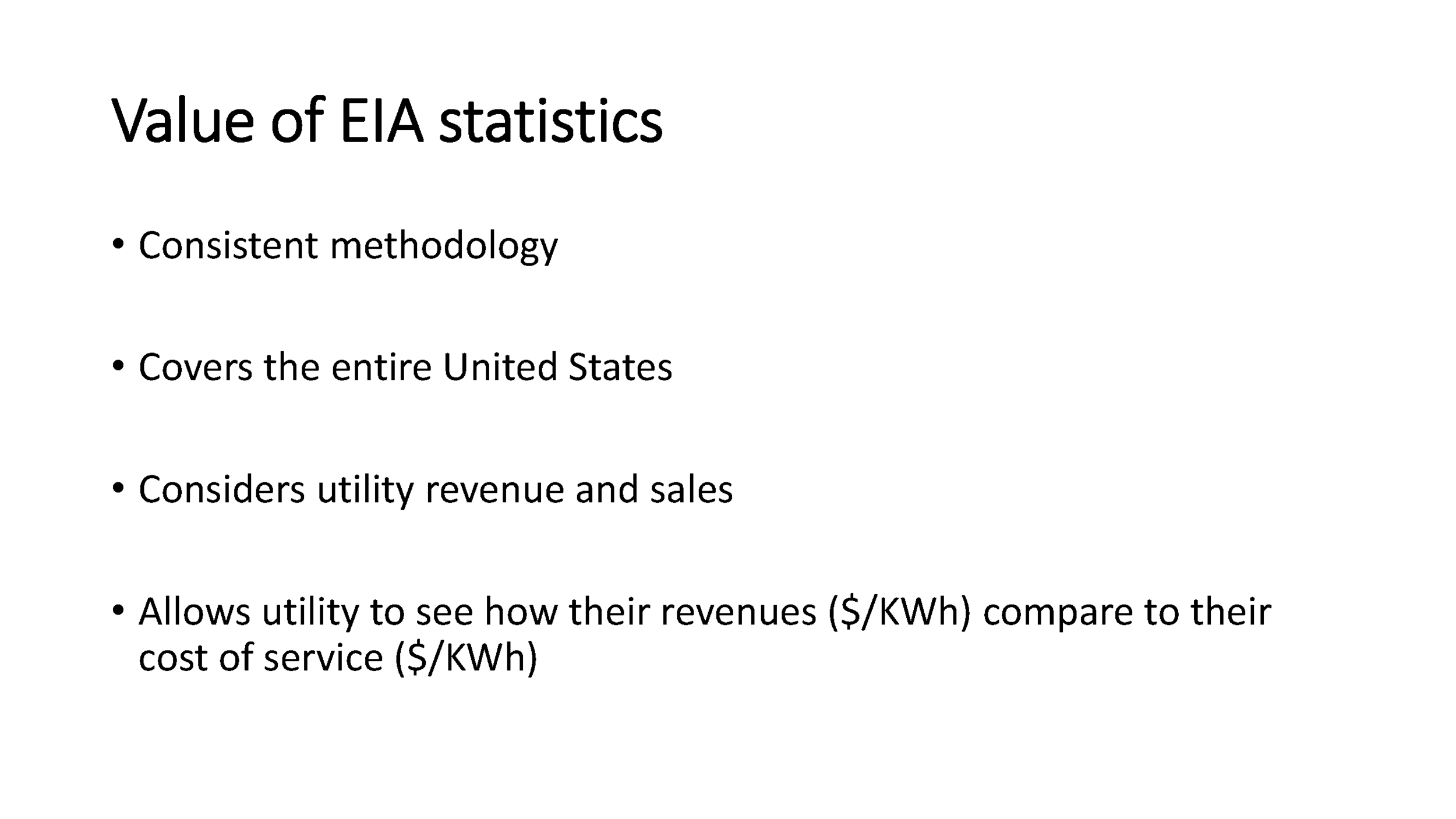
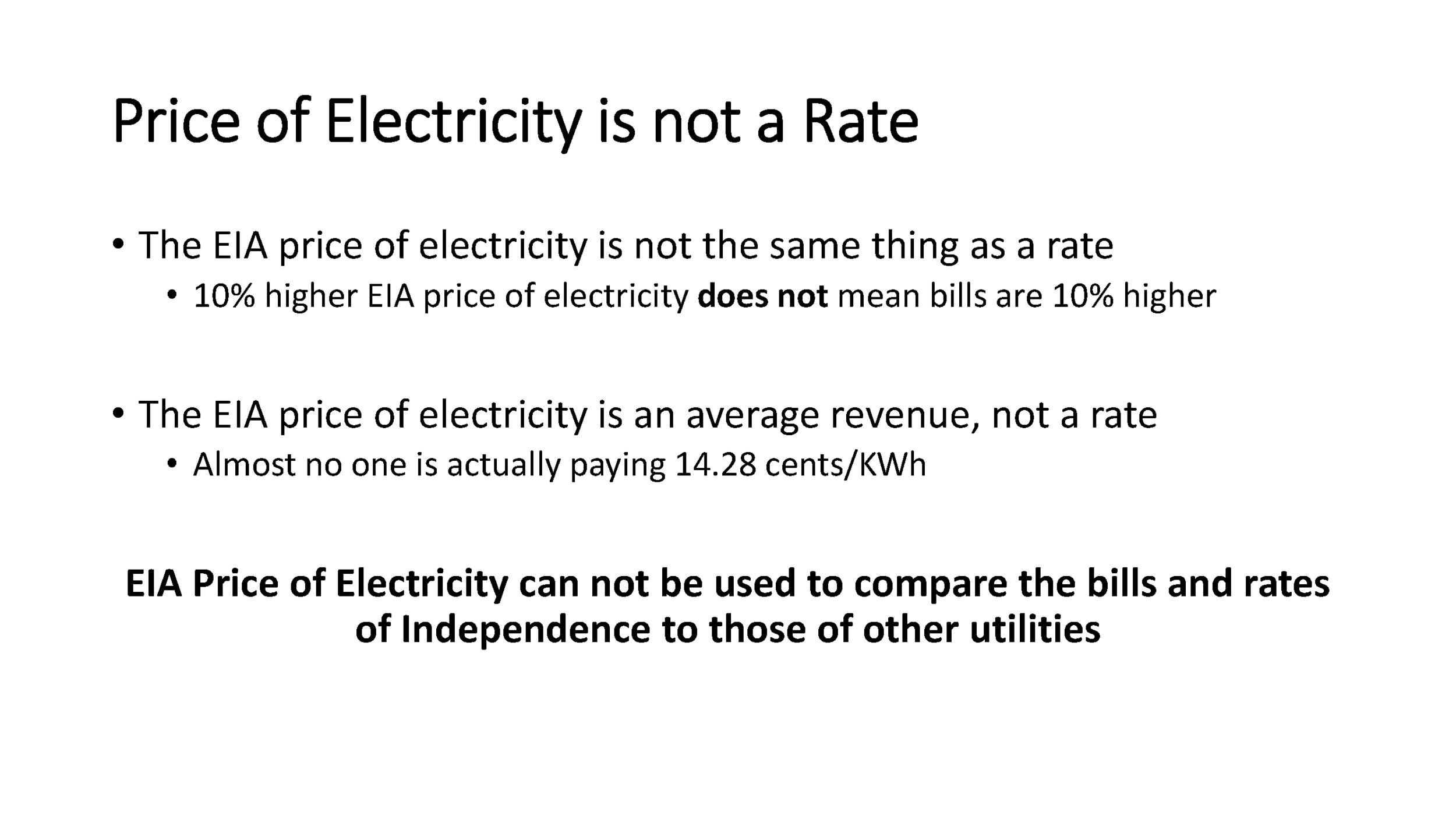
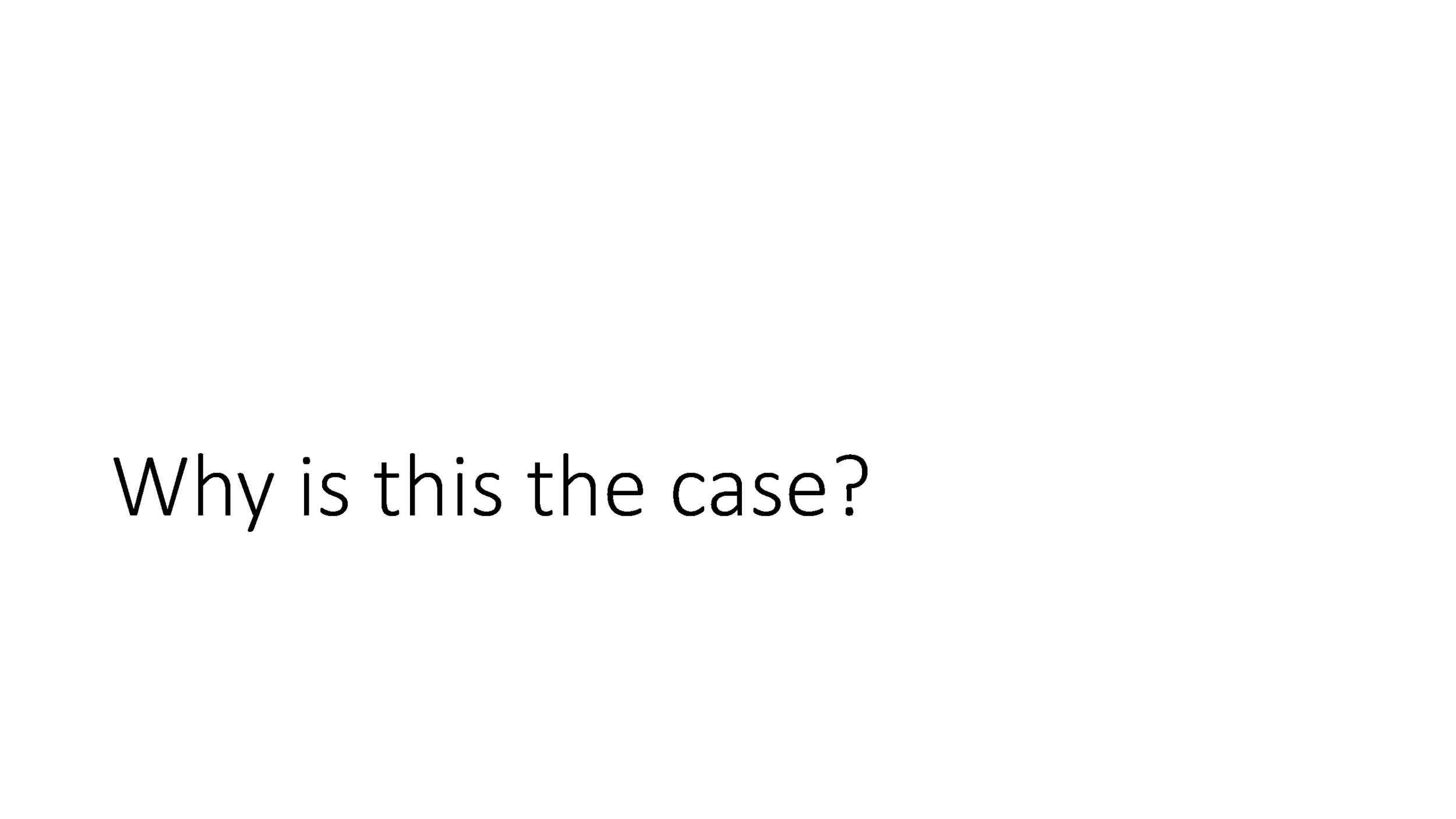
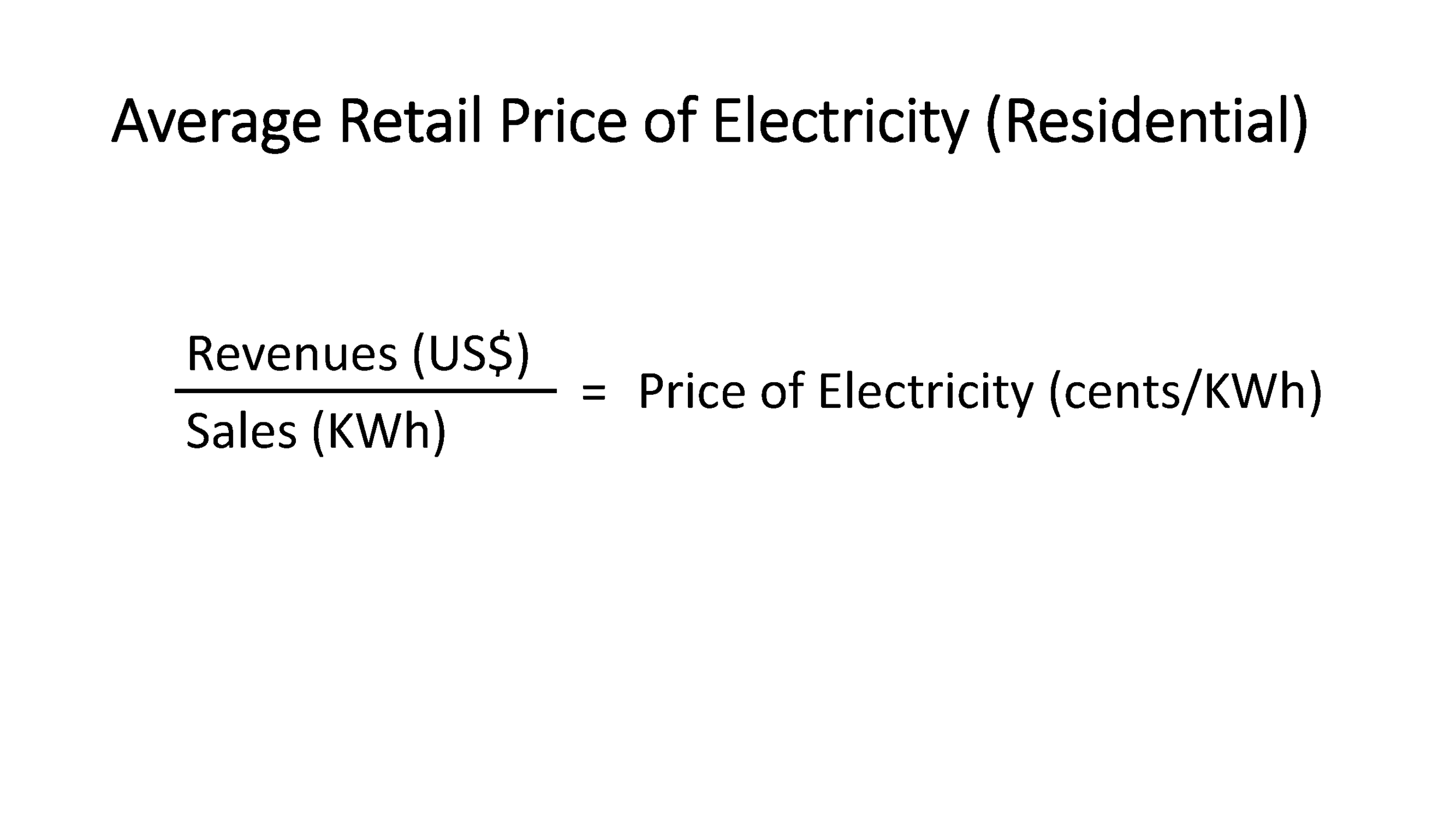
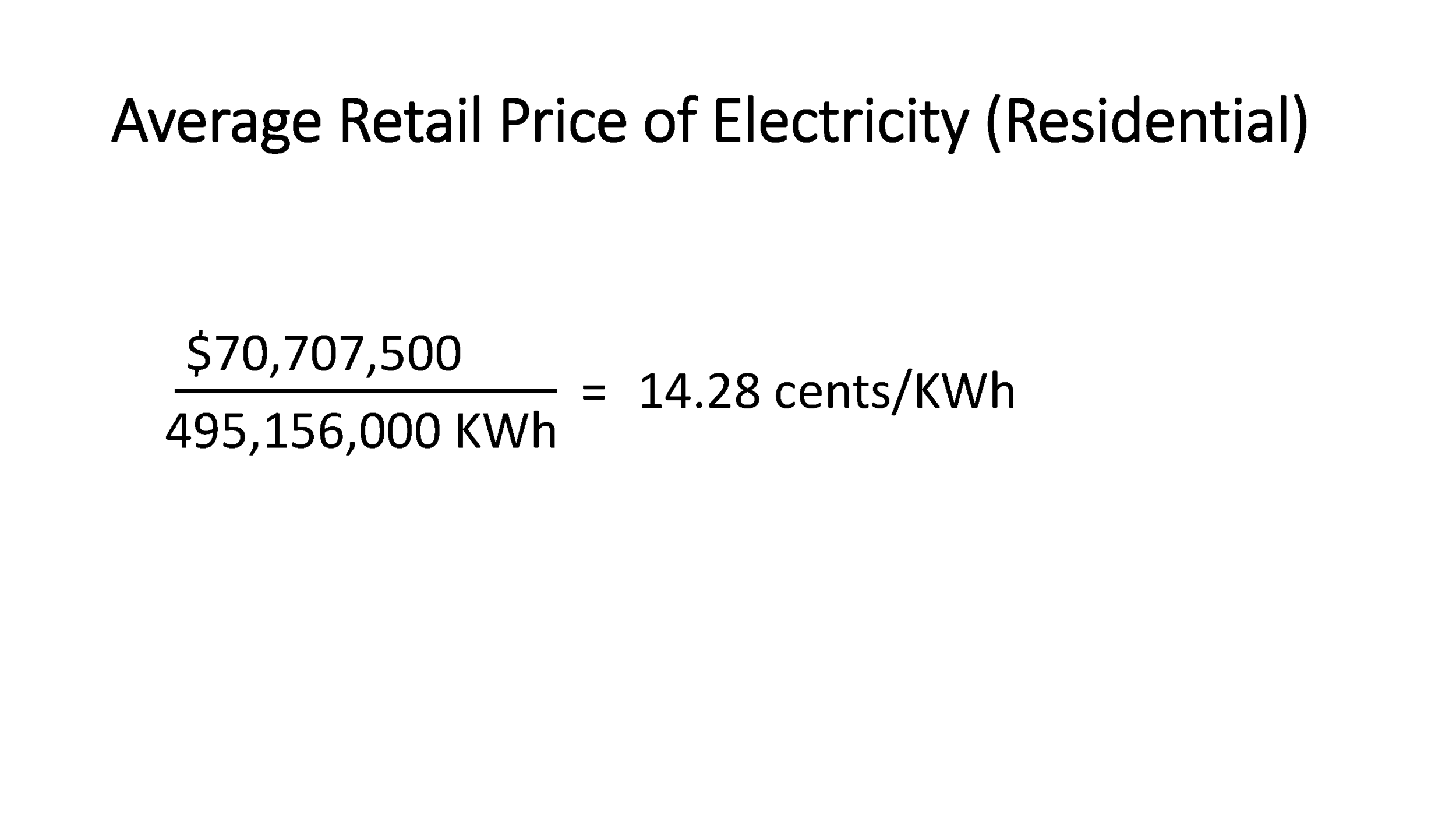
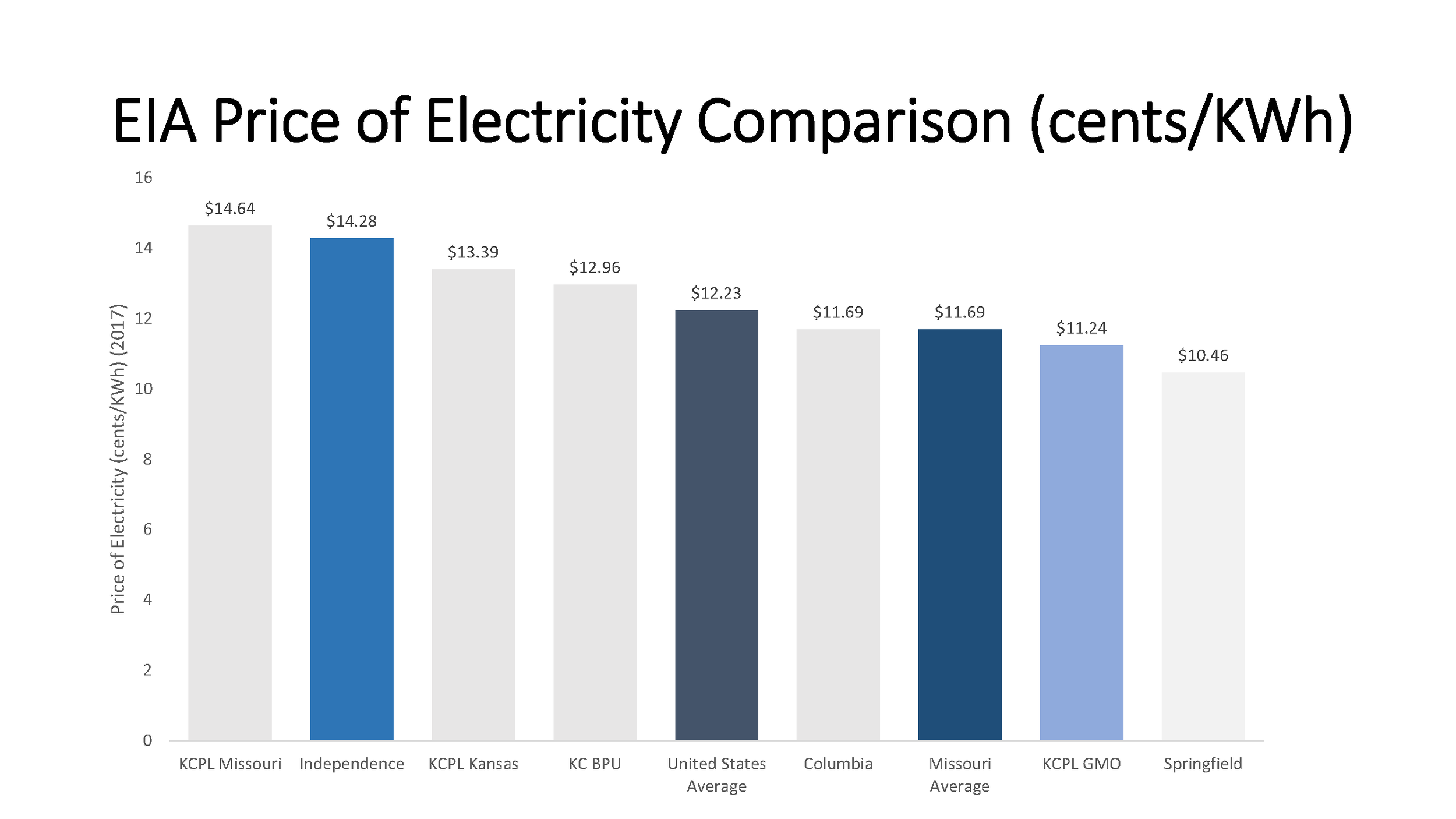

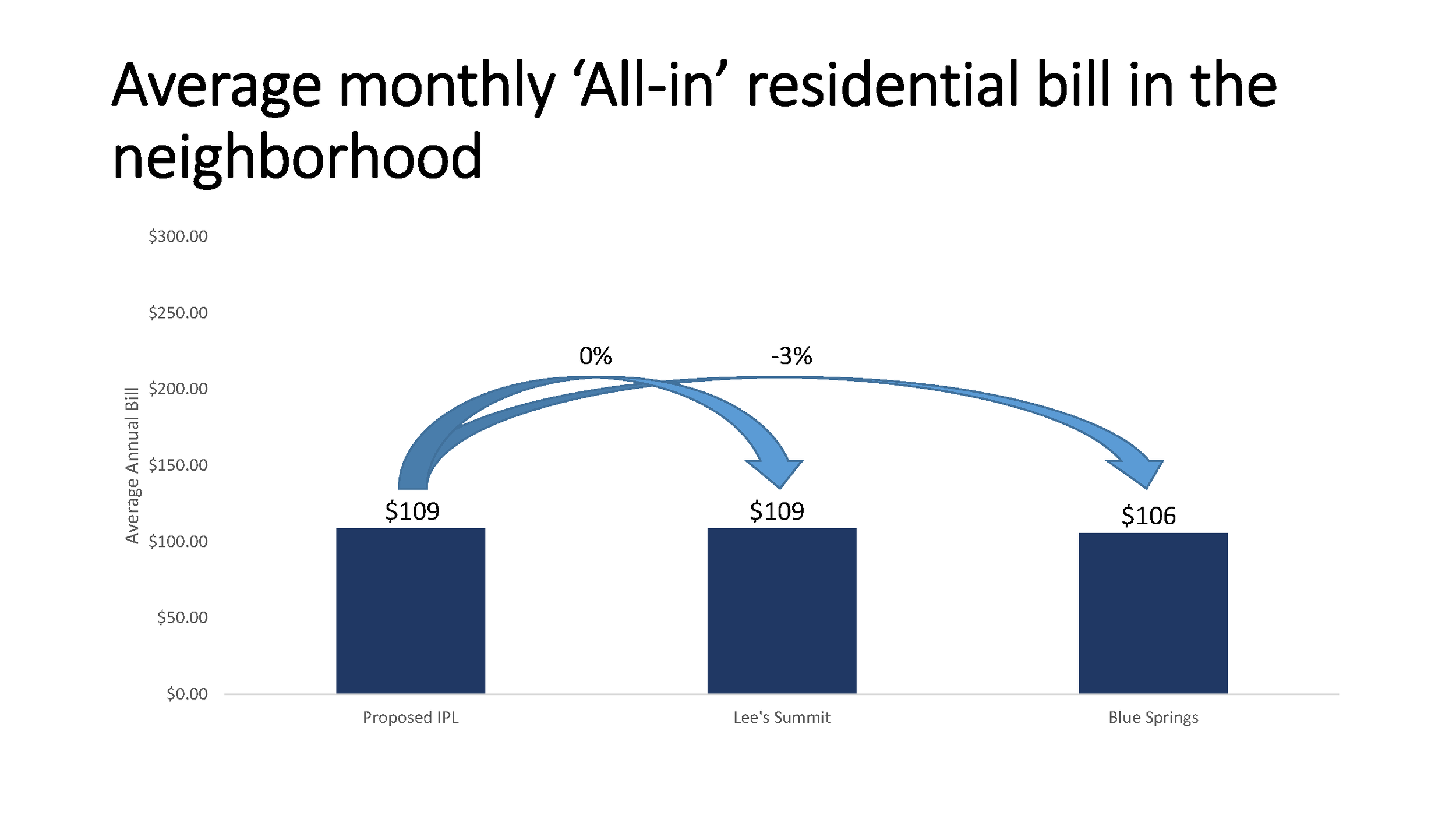
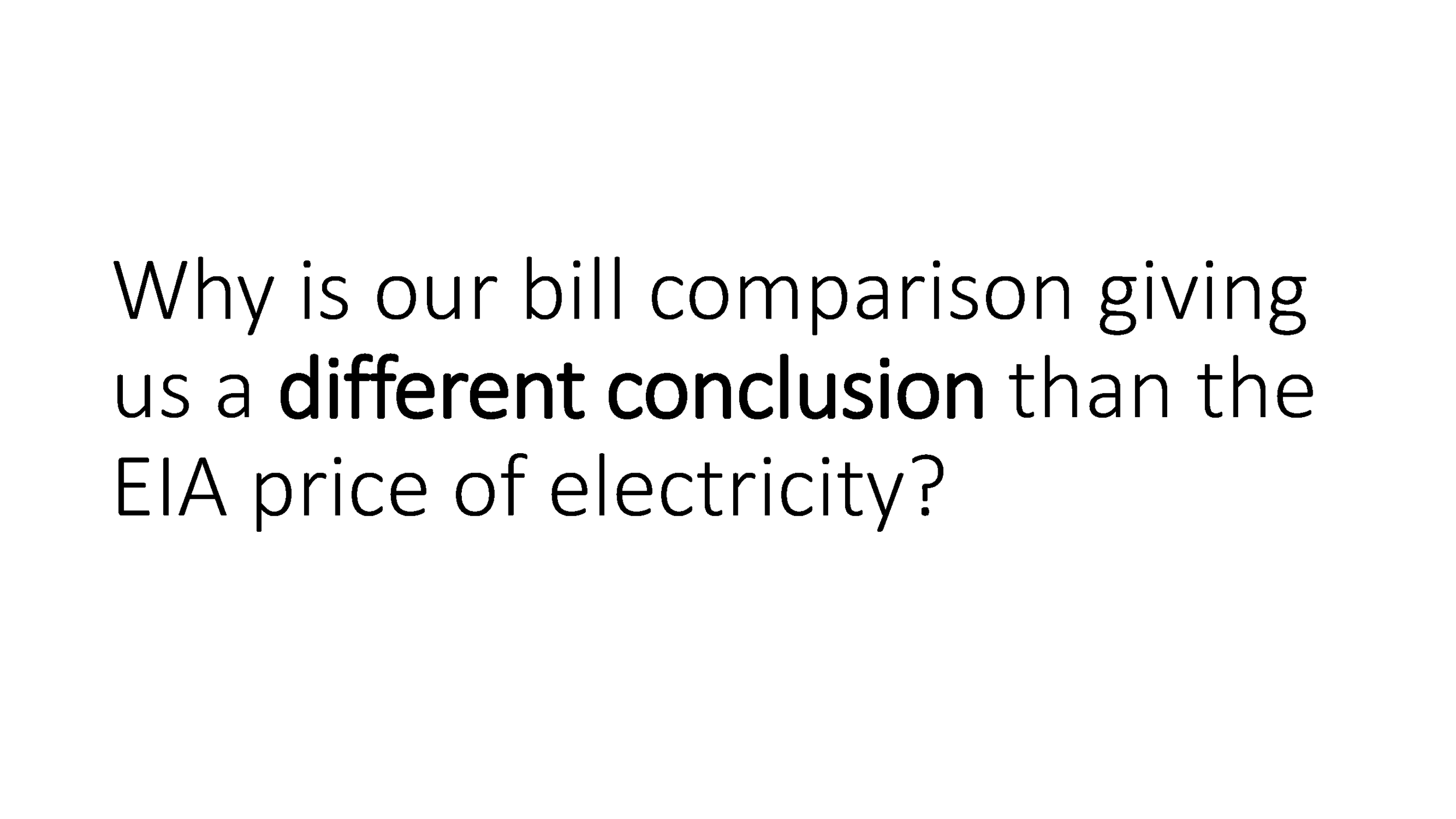
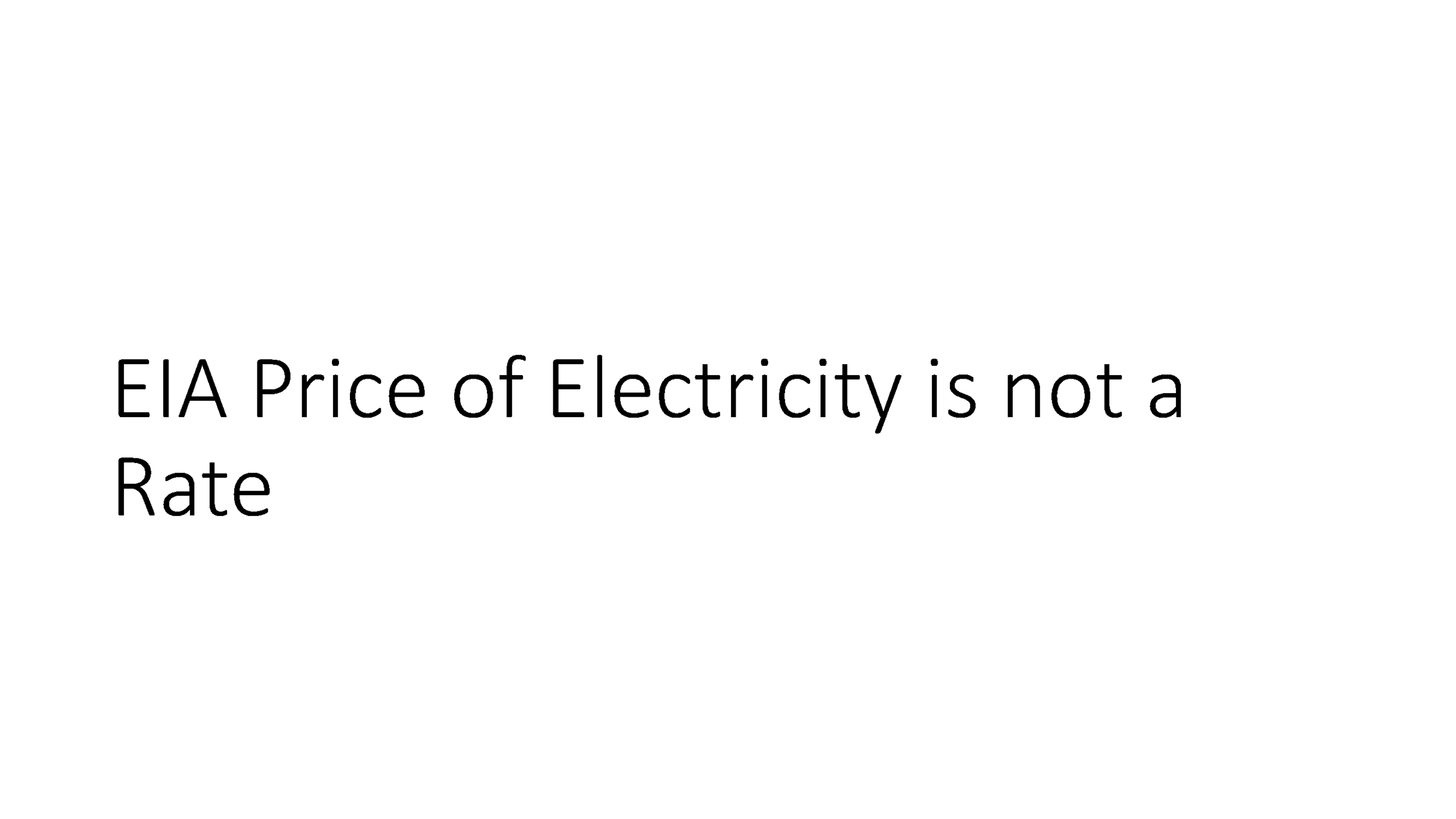
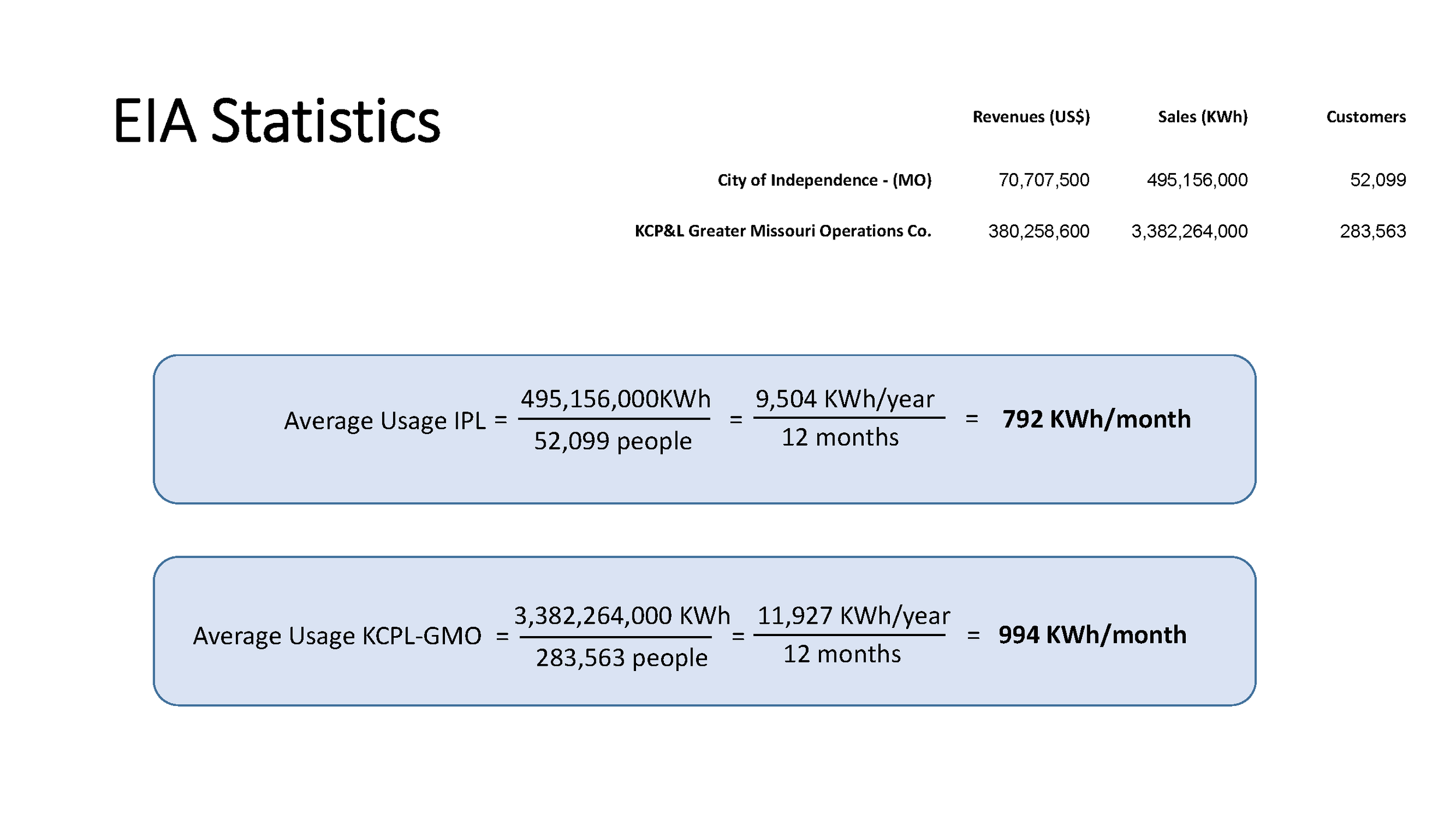
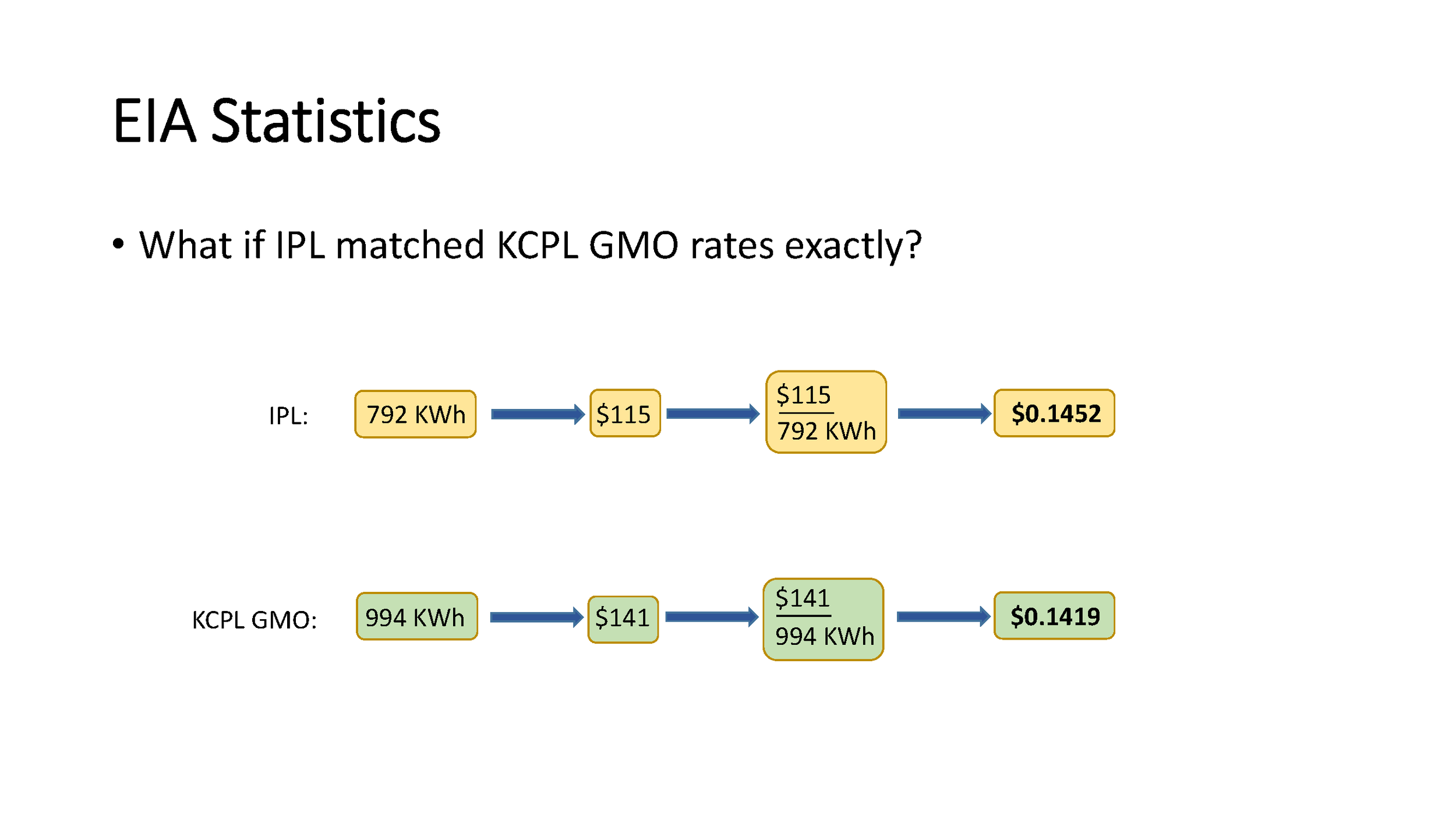
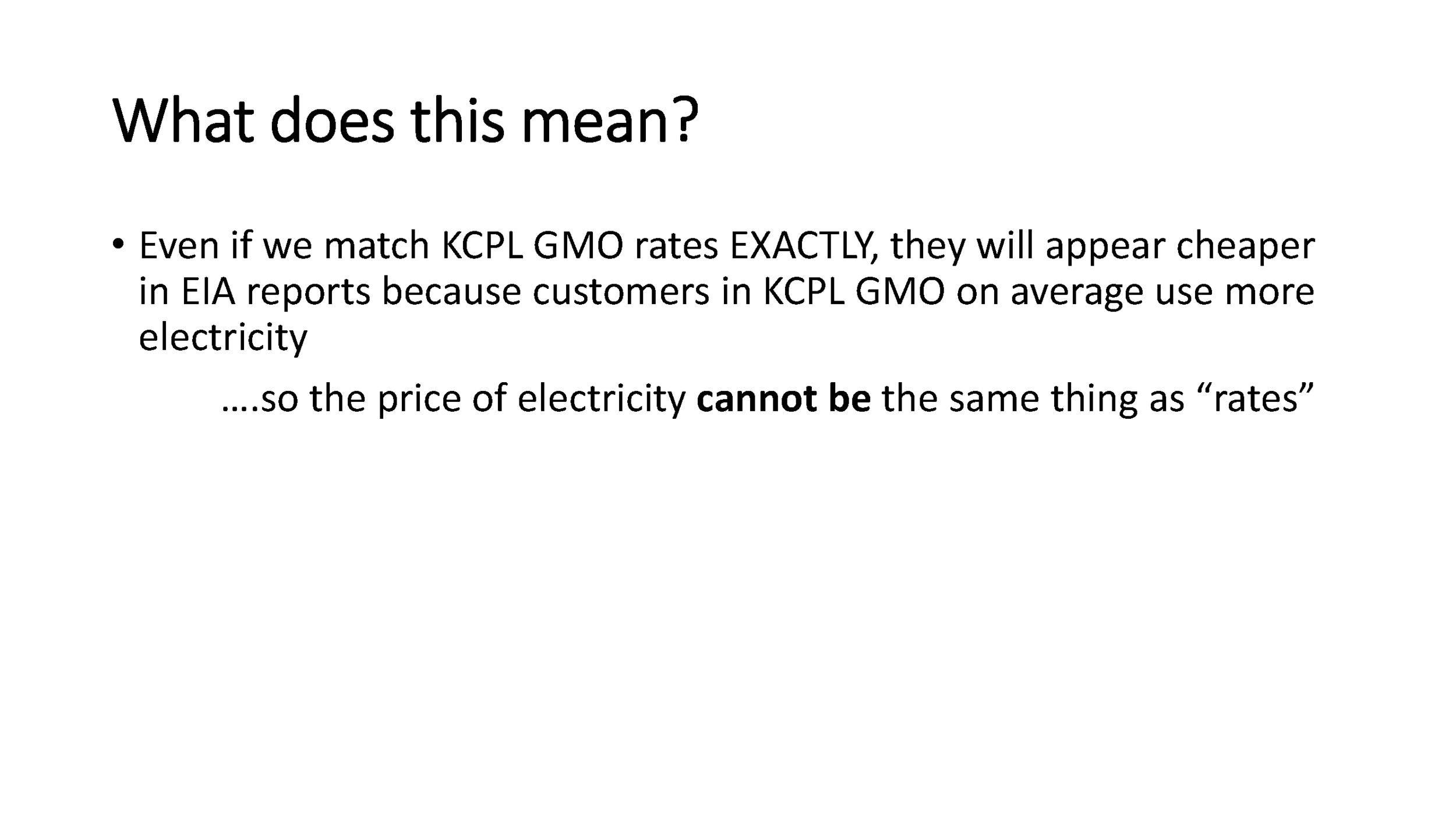

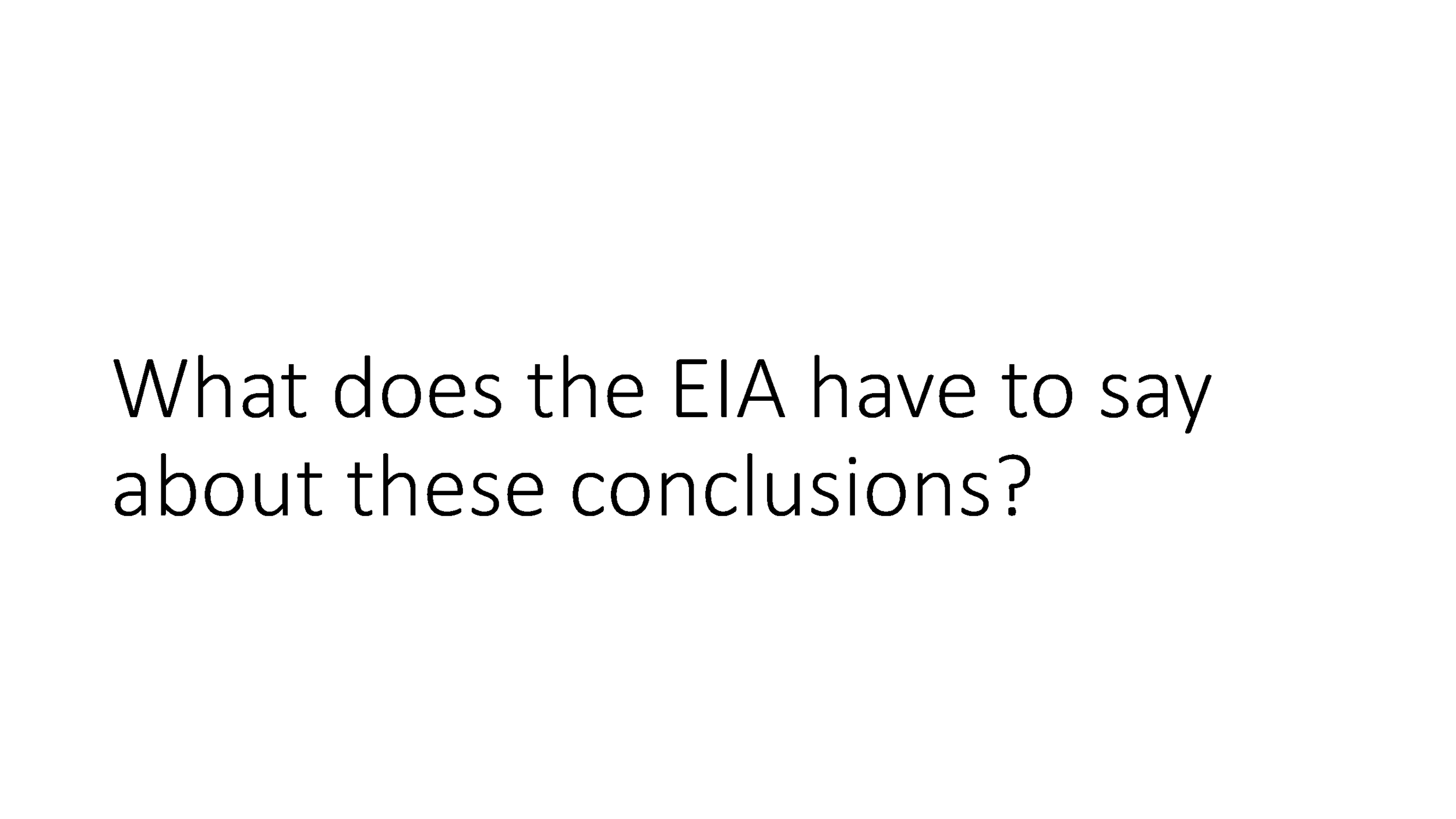
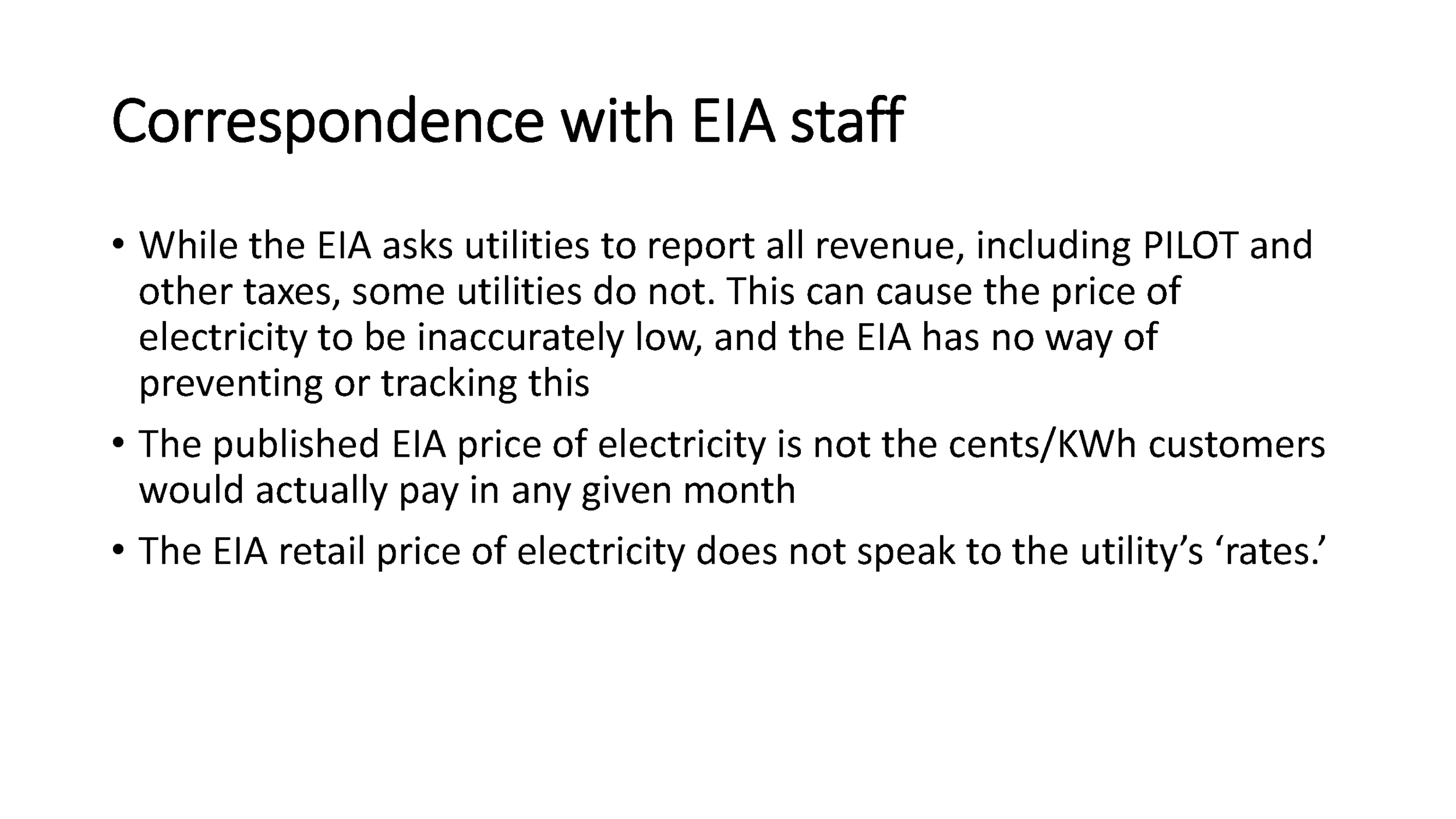

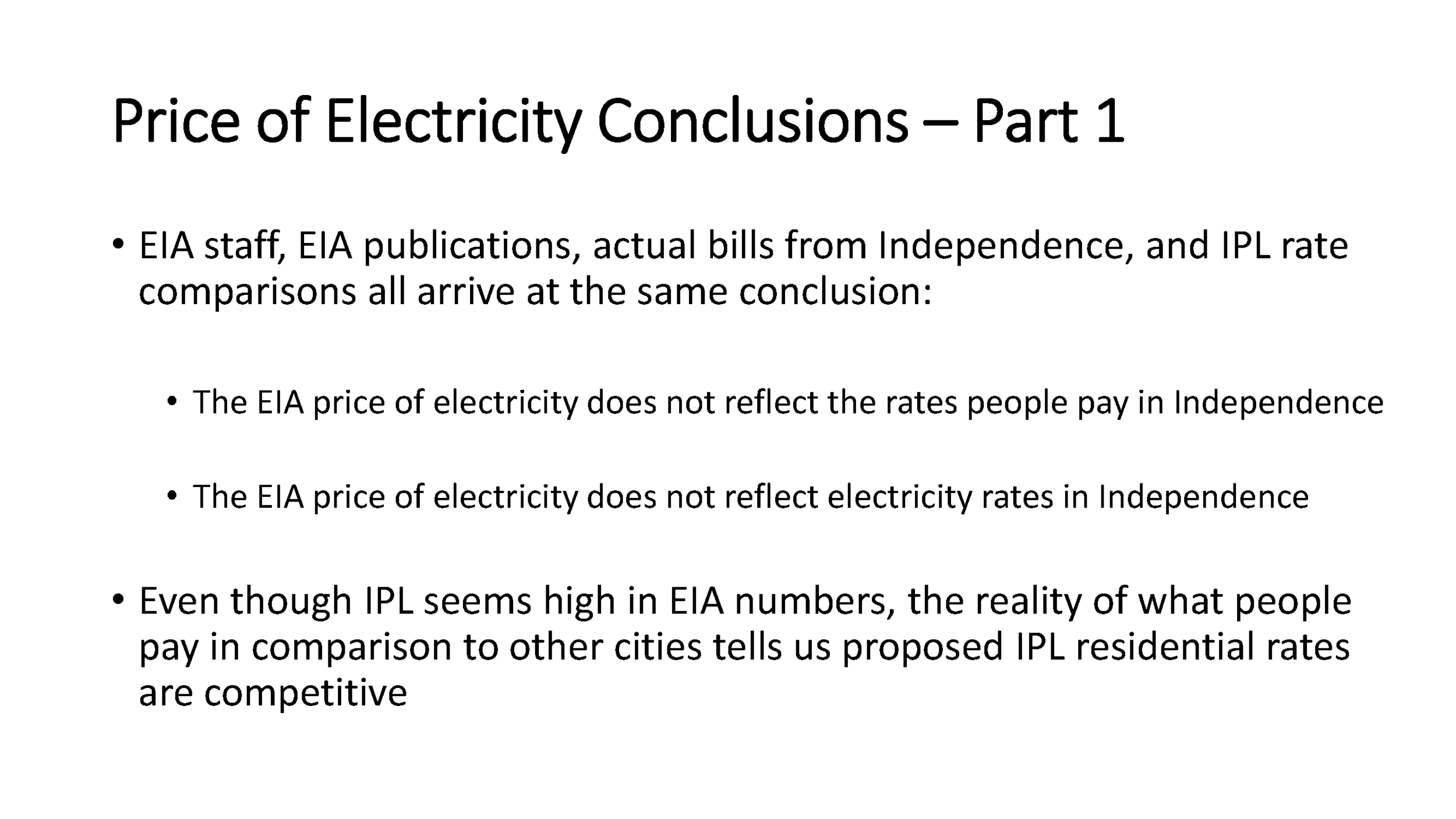
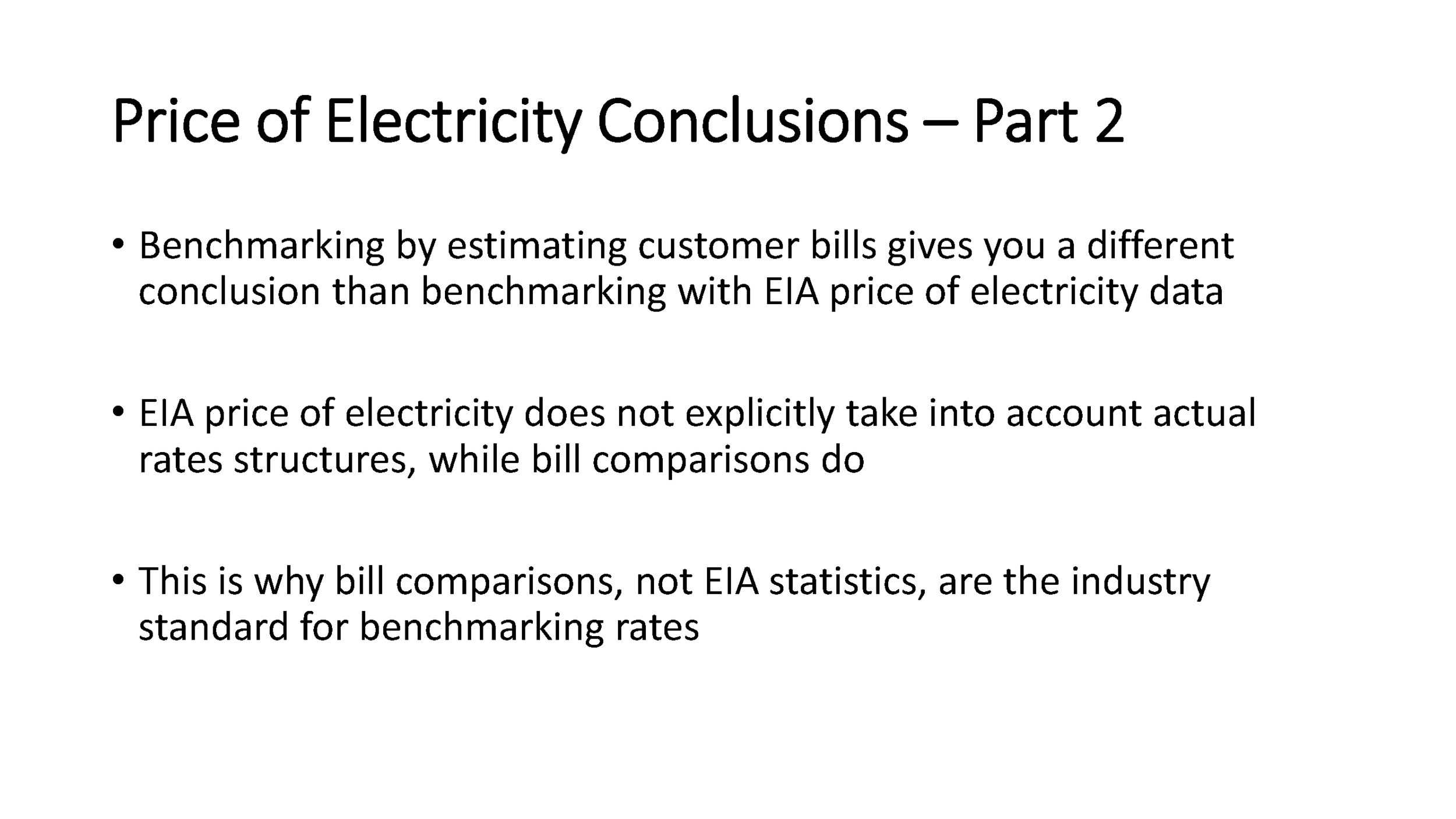
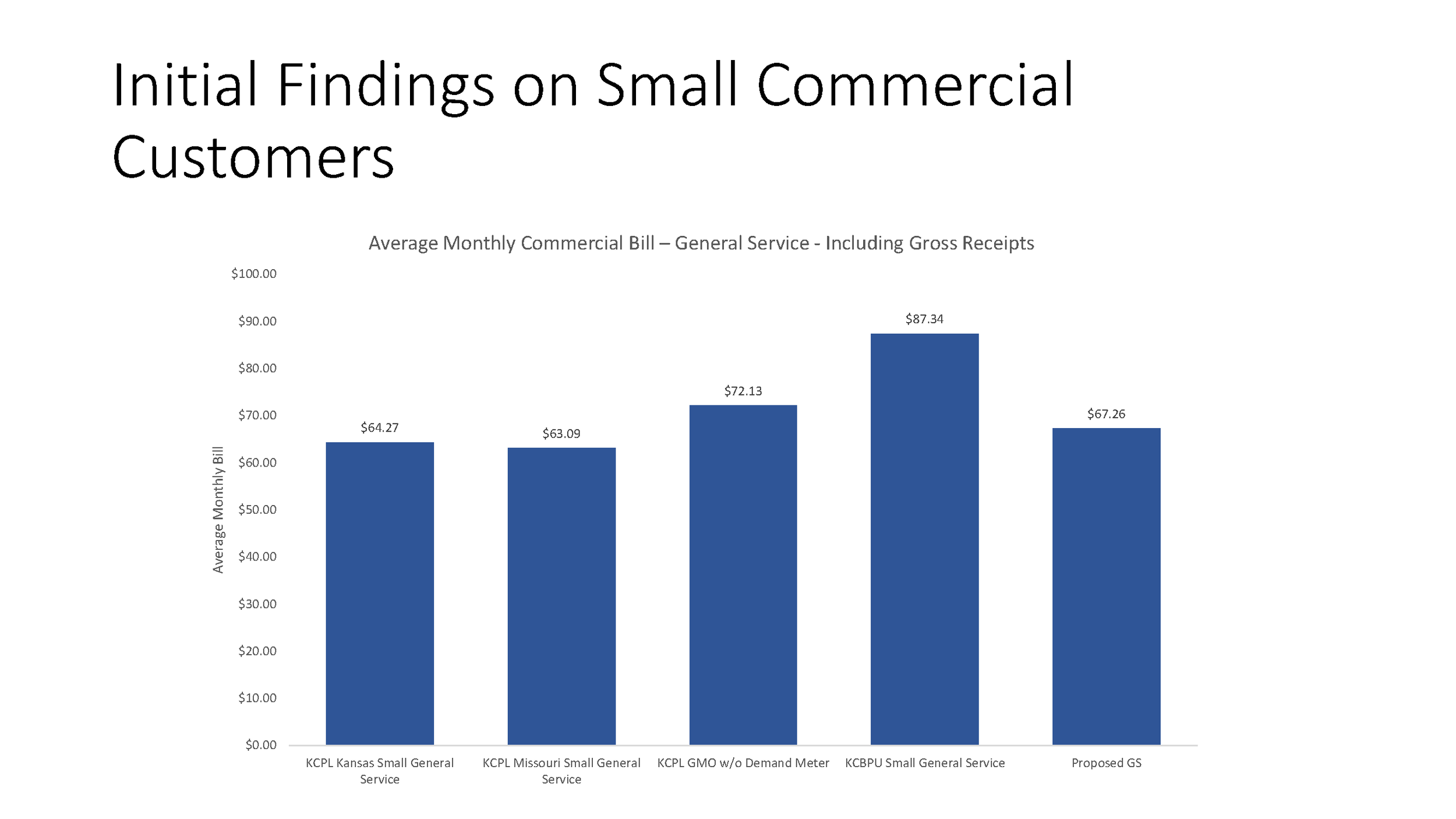


The flat energy rates would move away from charging less as more energy is used known as declining block demand charge.)
The rate study will be reviewed by the Public Utilities Advisory Board and come back to the City Council for approval later this year.
Here’s slides from the presentation from the Burns McDonnell.
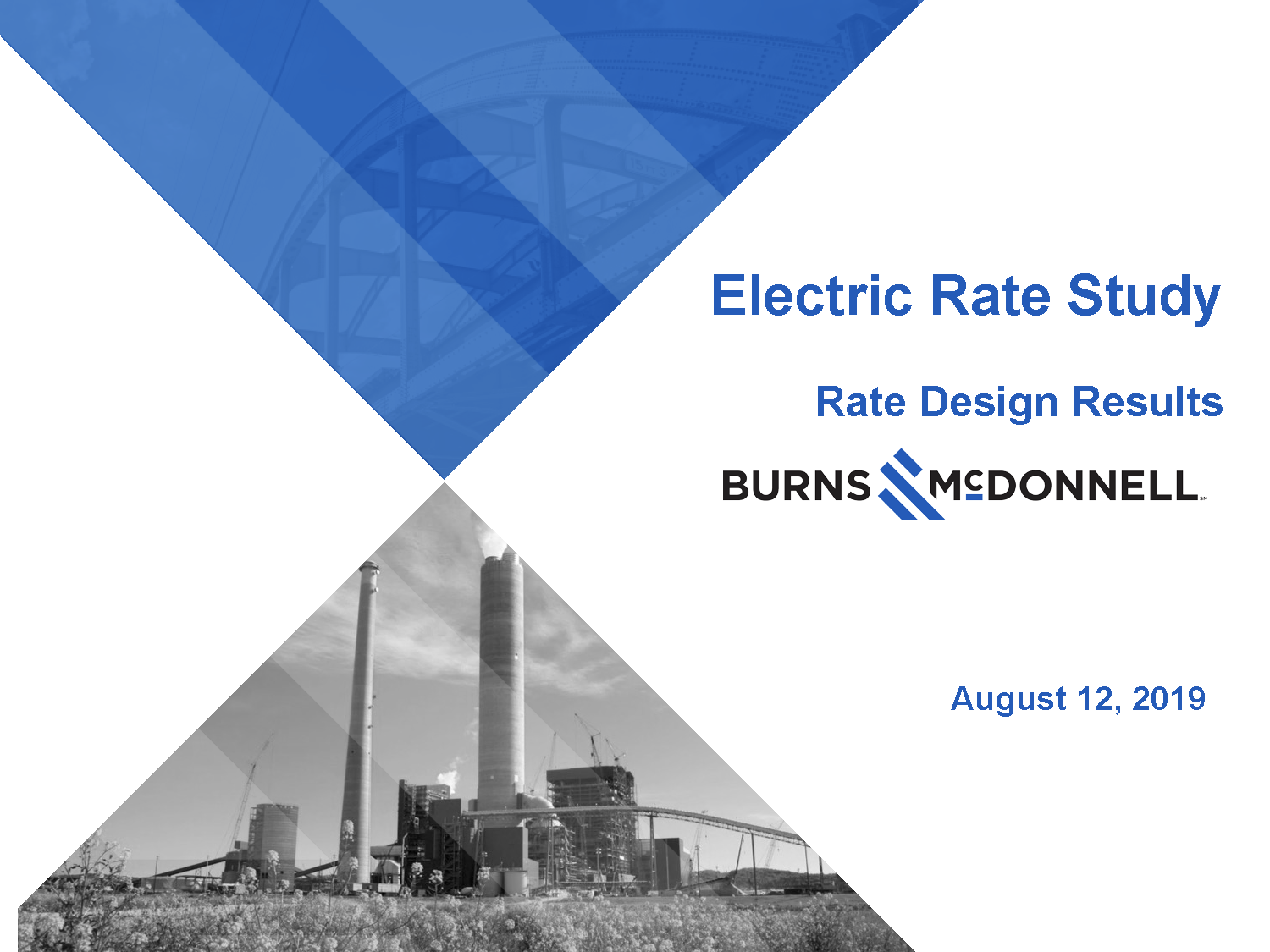
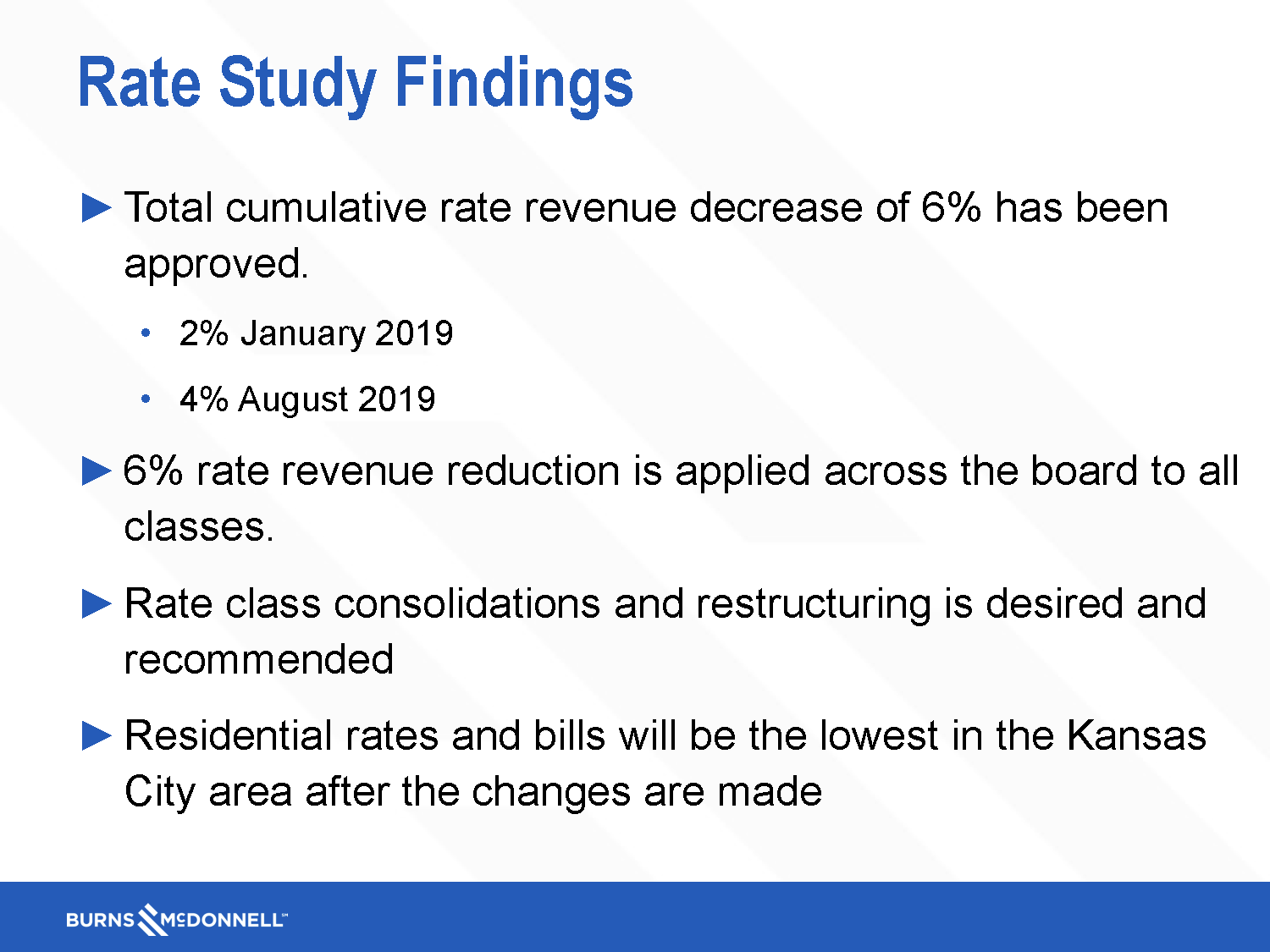
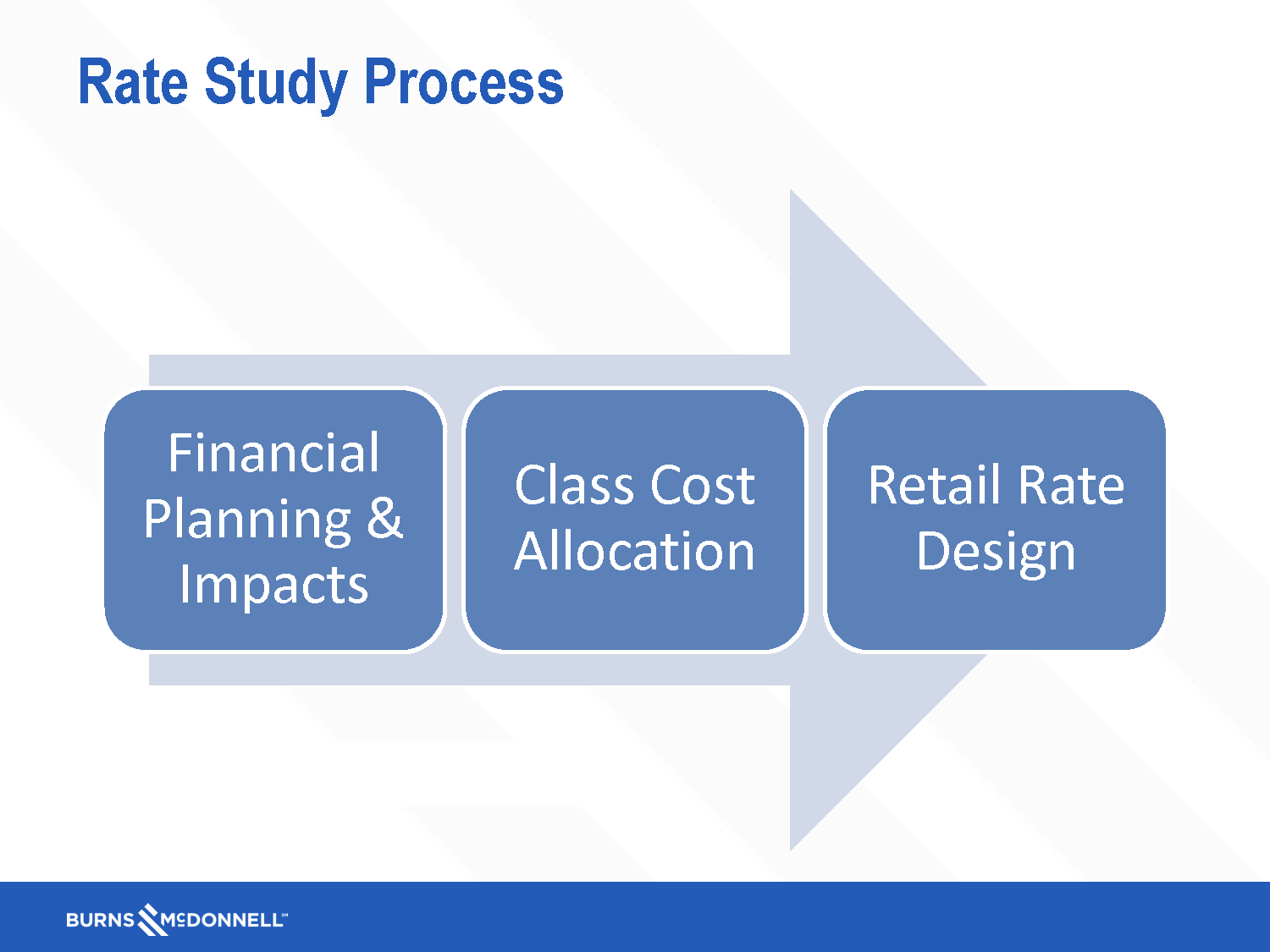
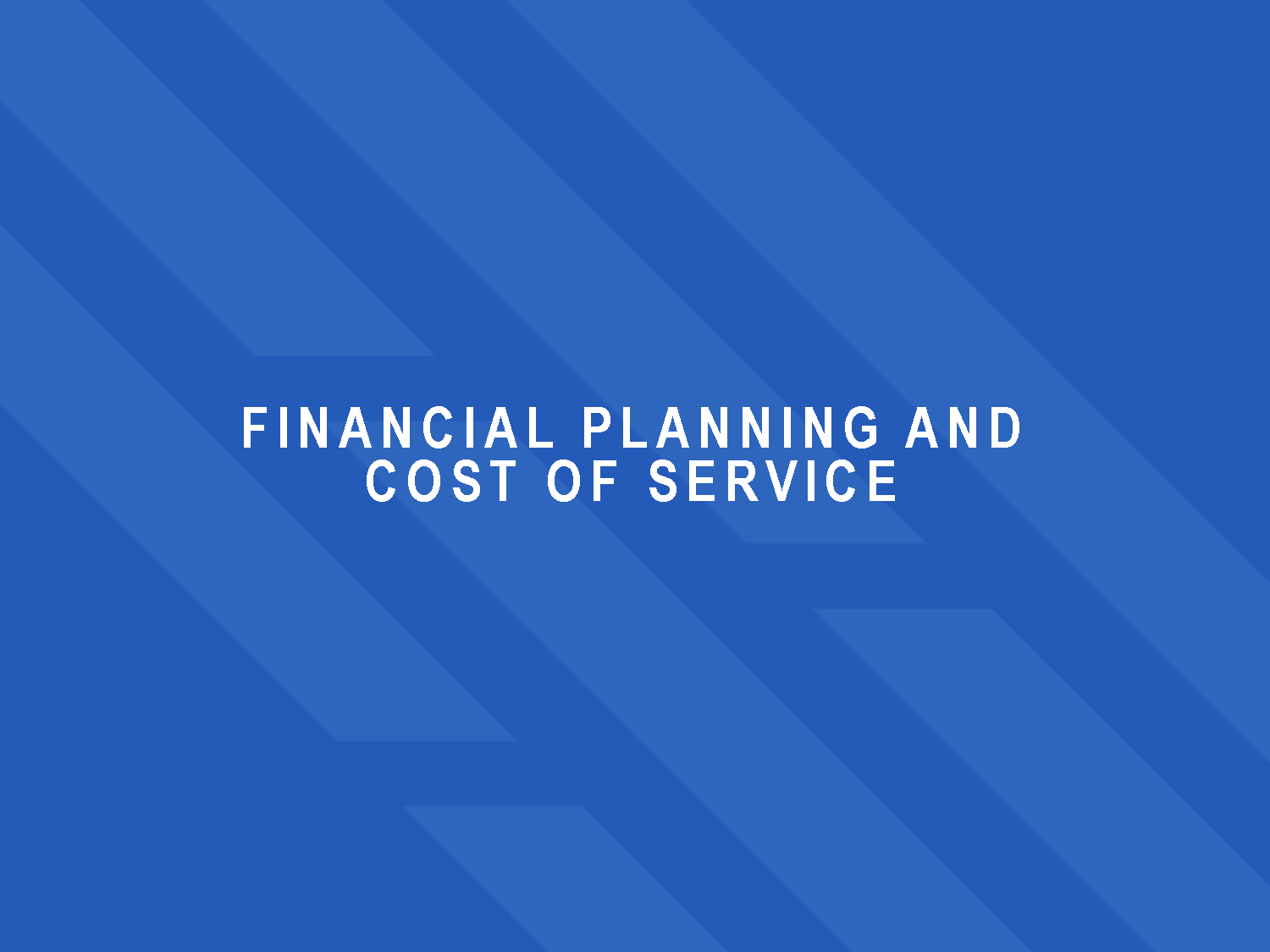
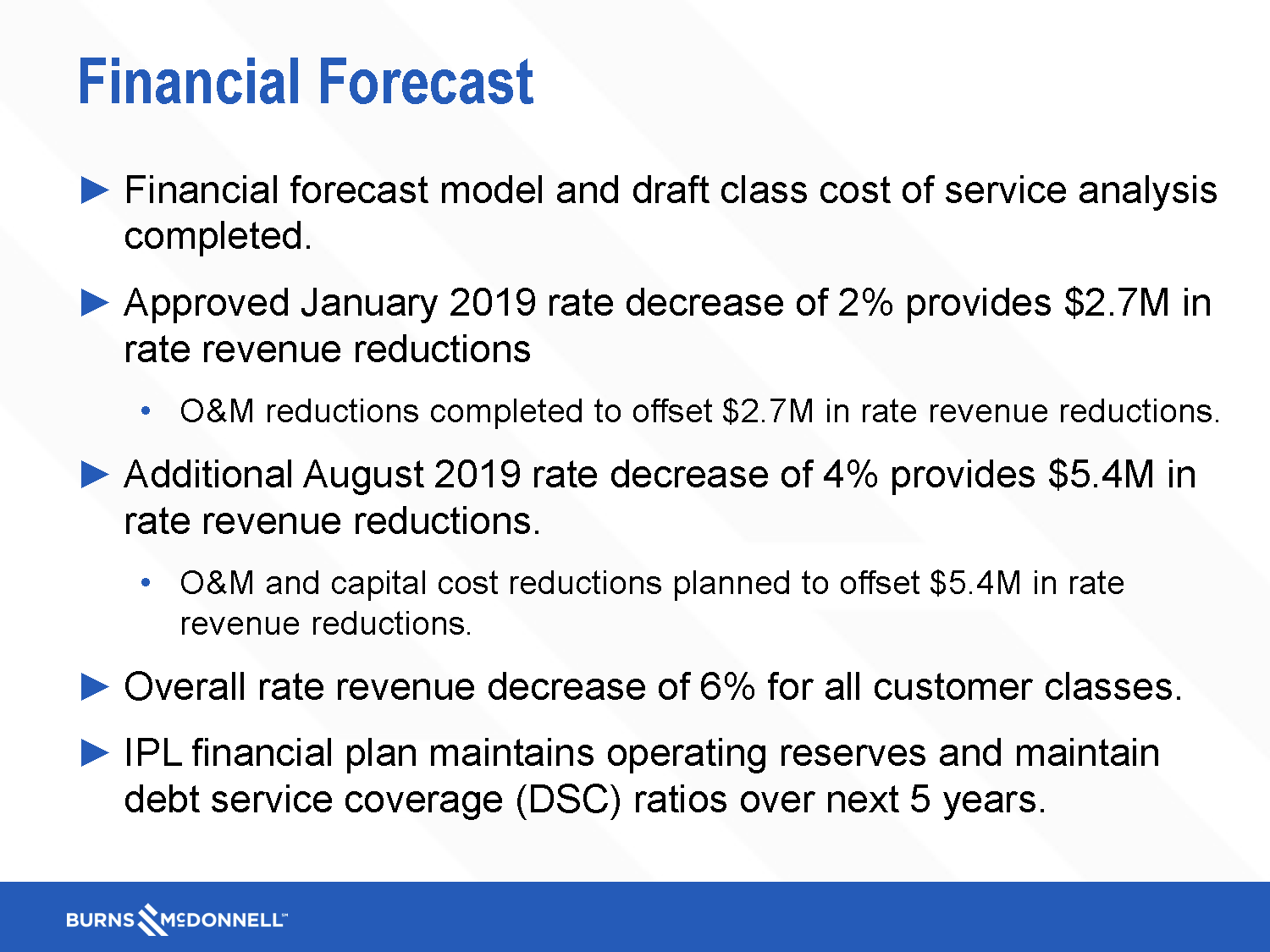
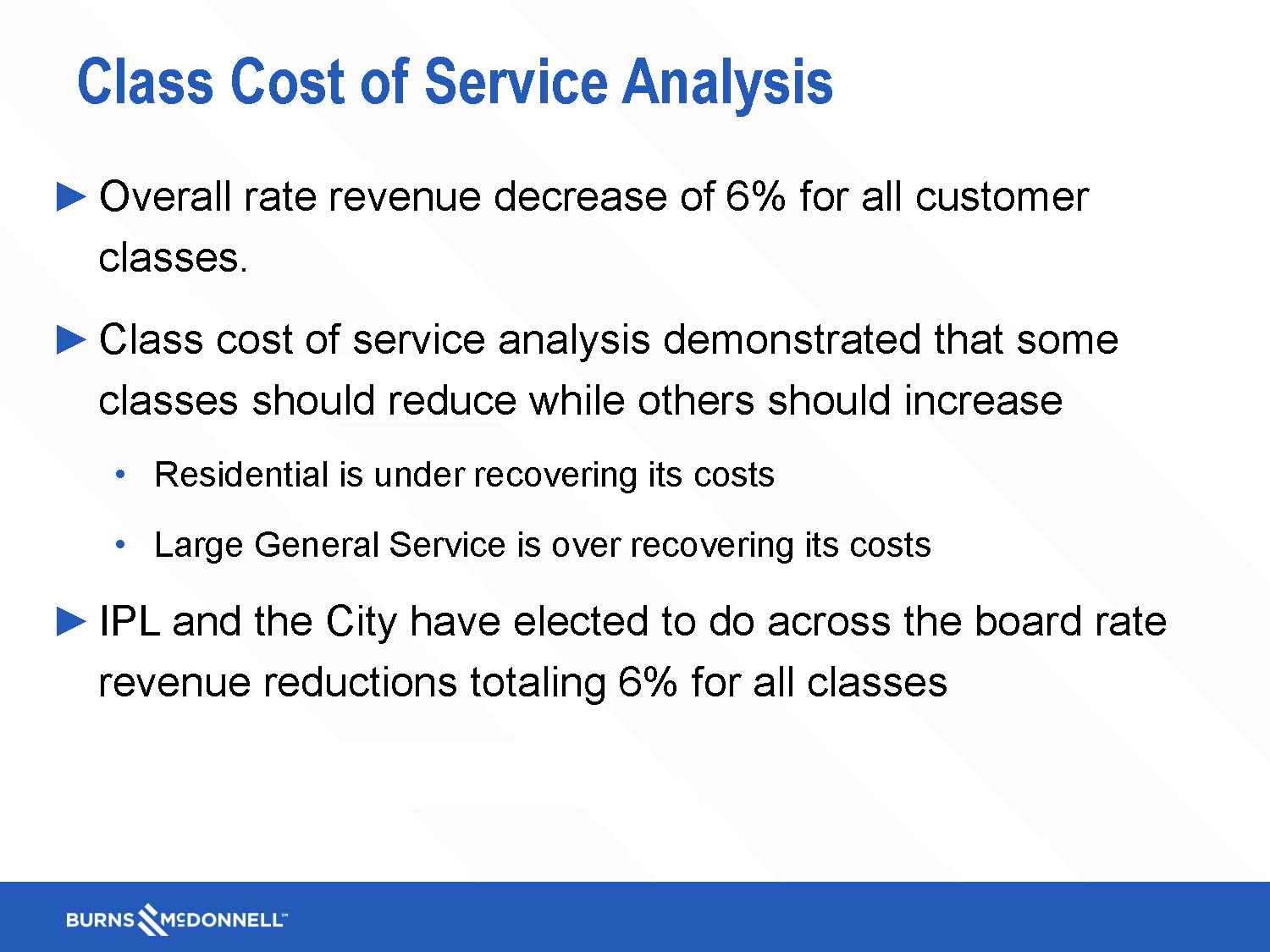

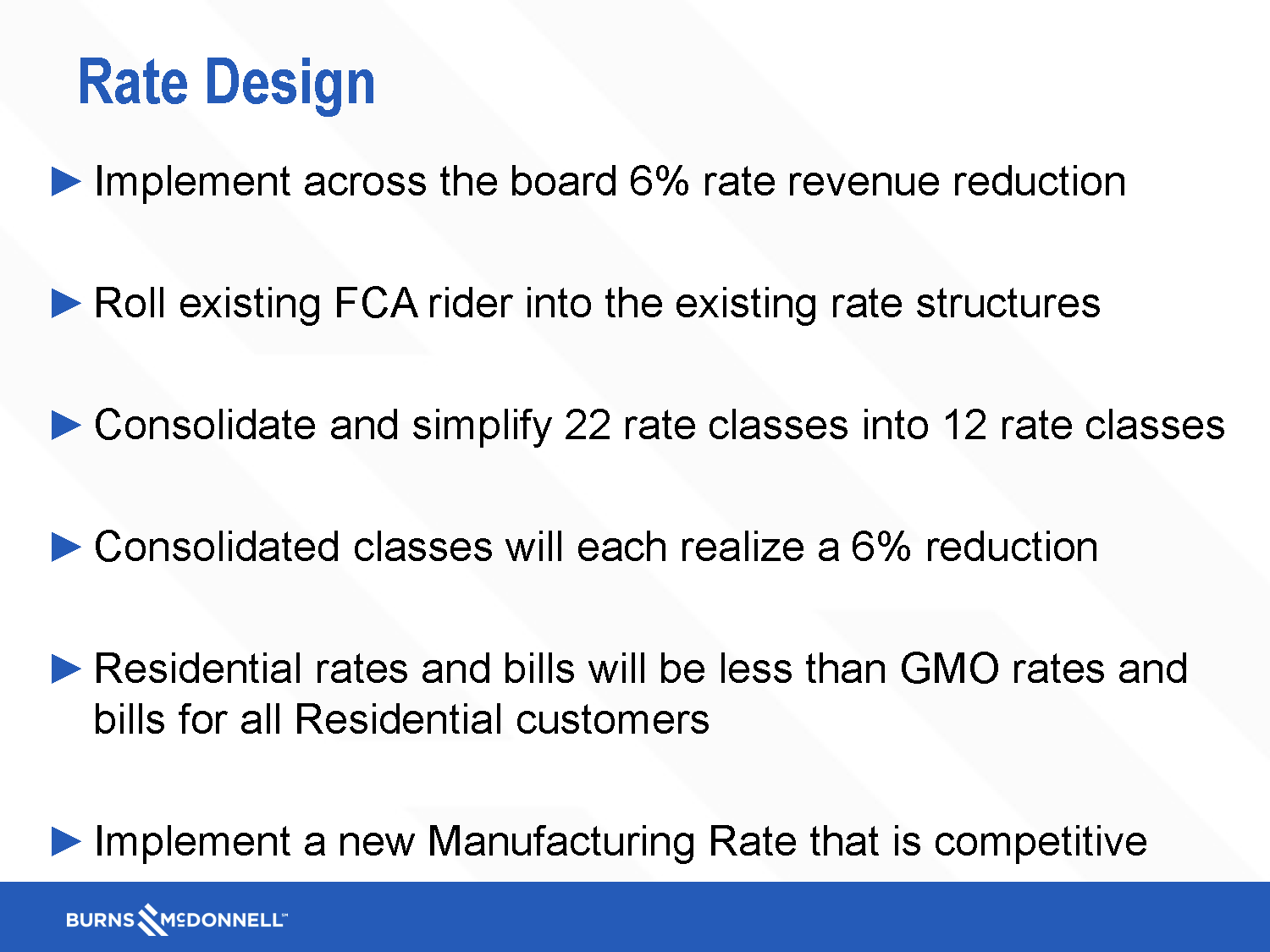
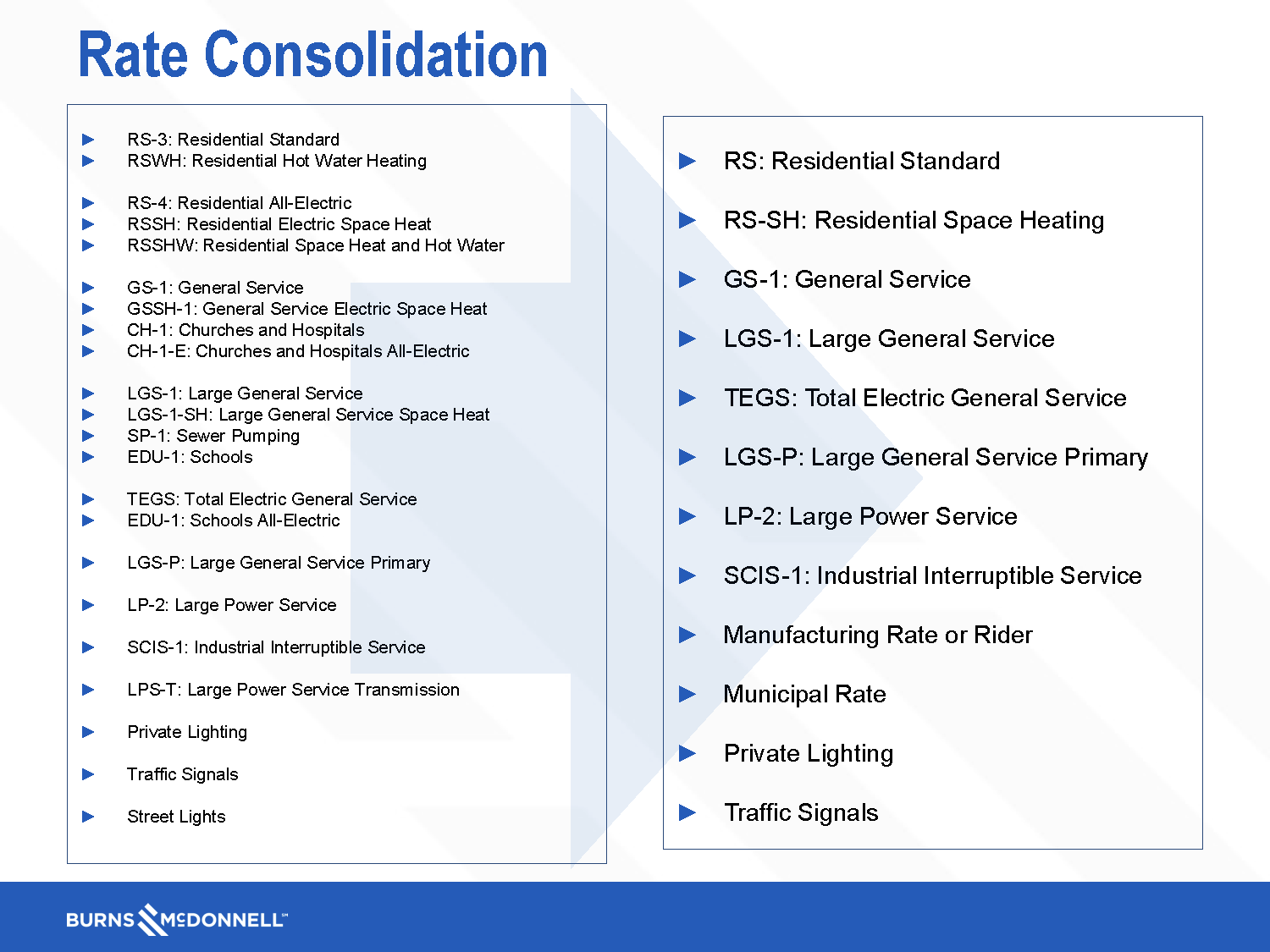
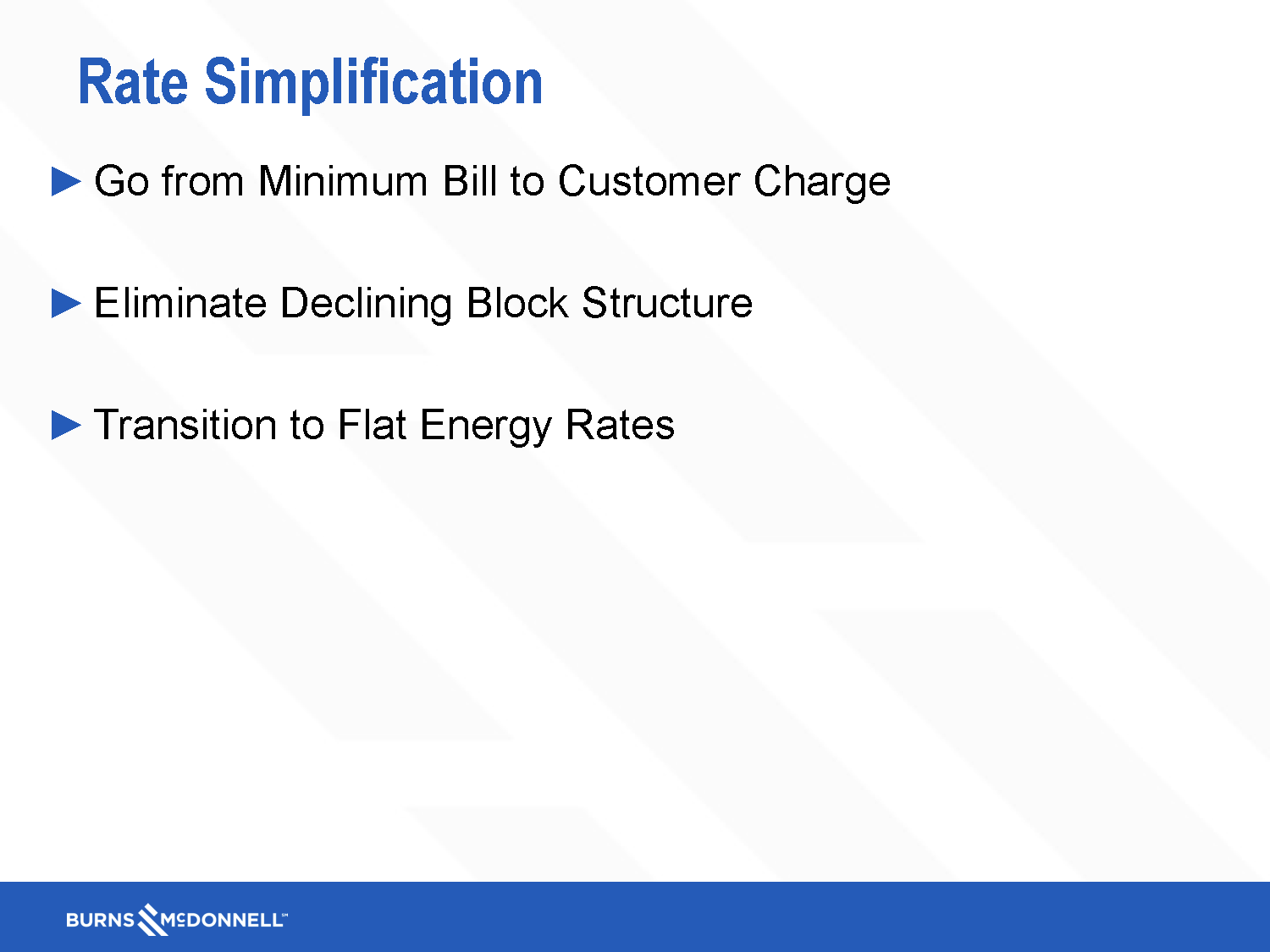
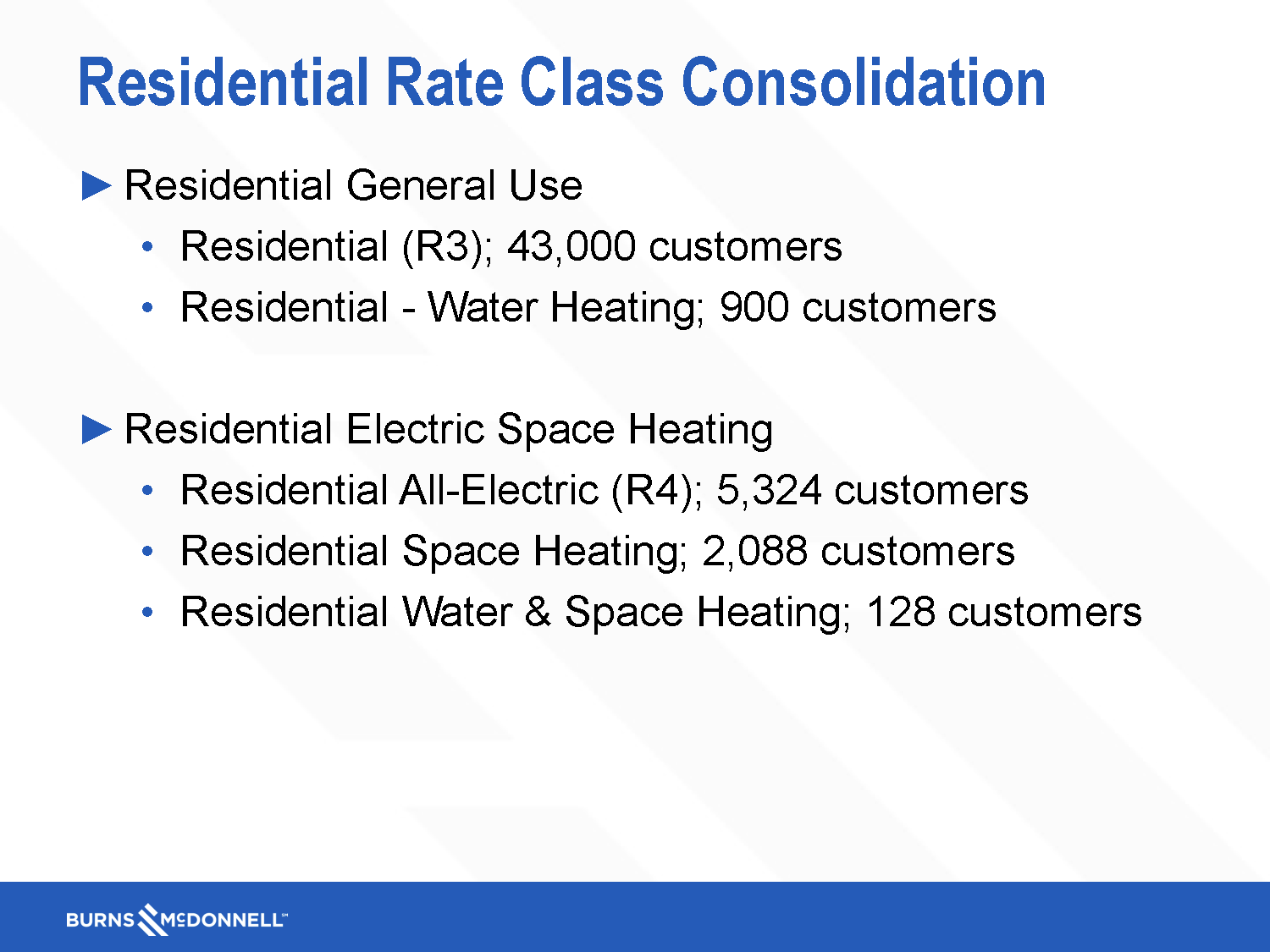
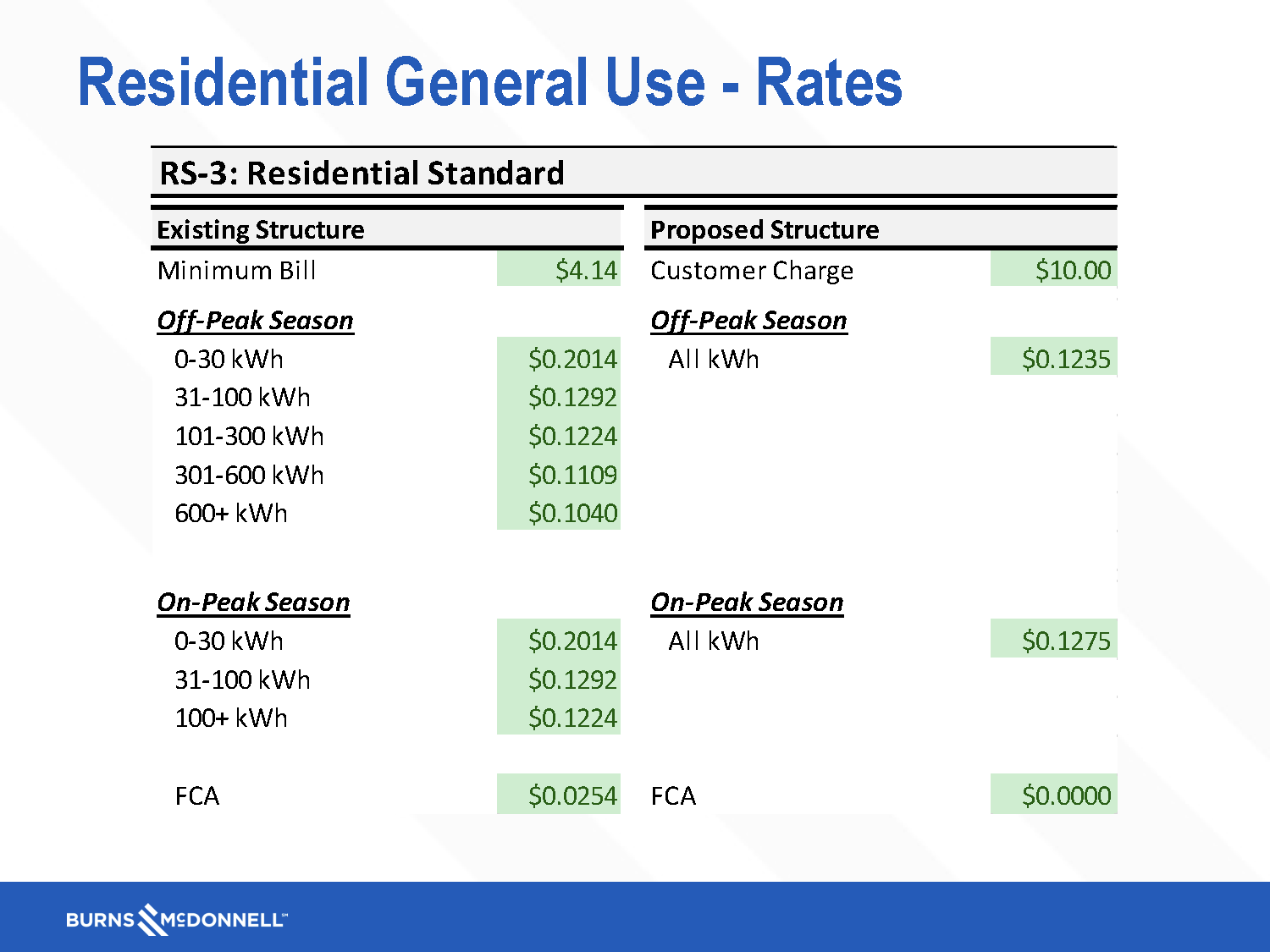
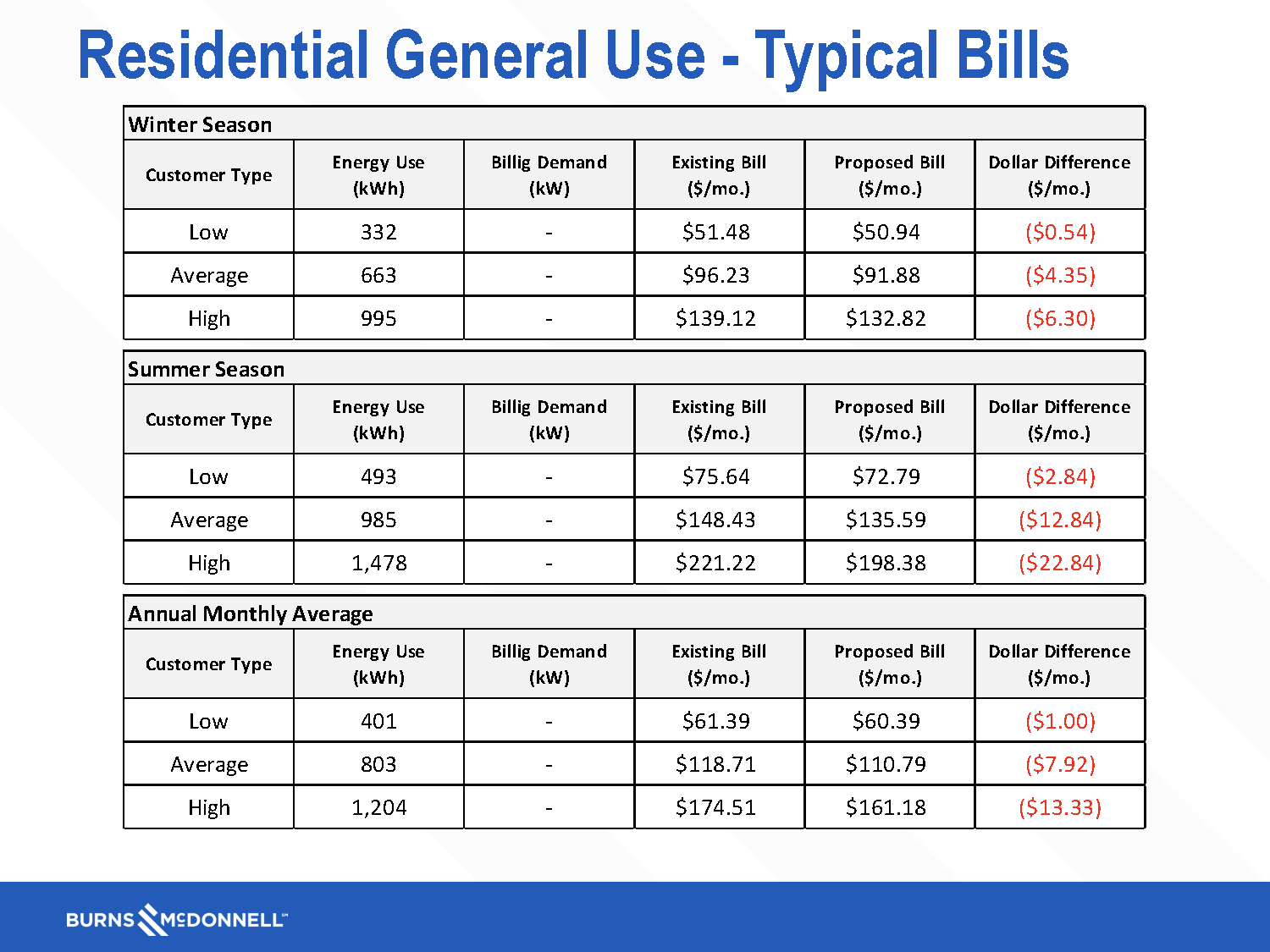
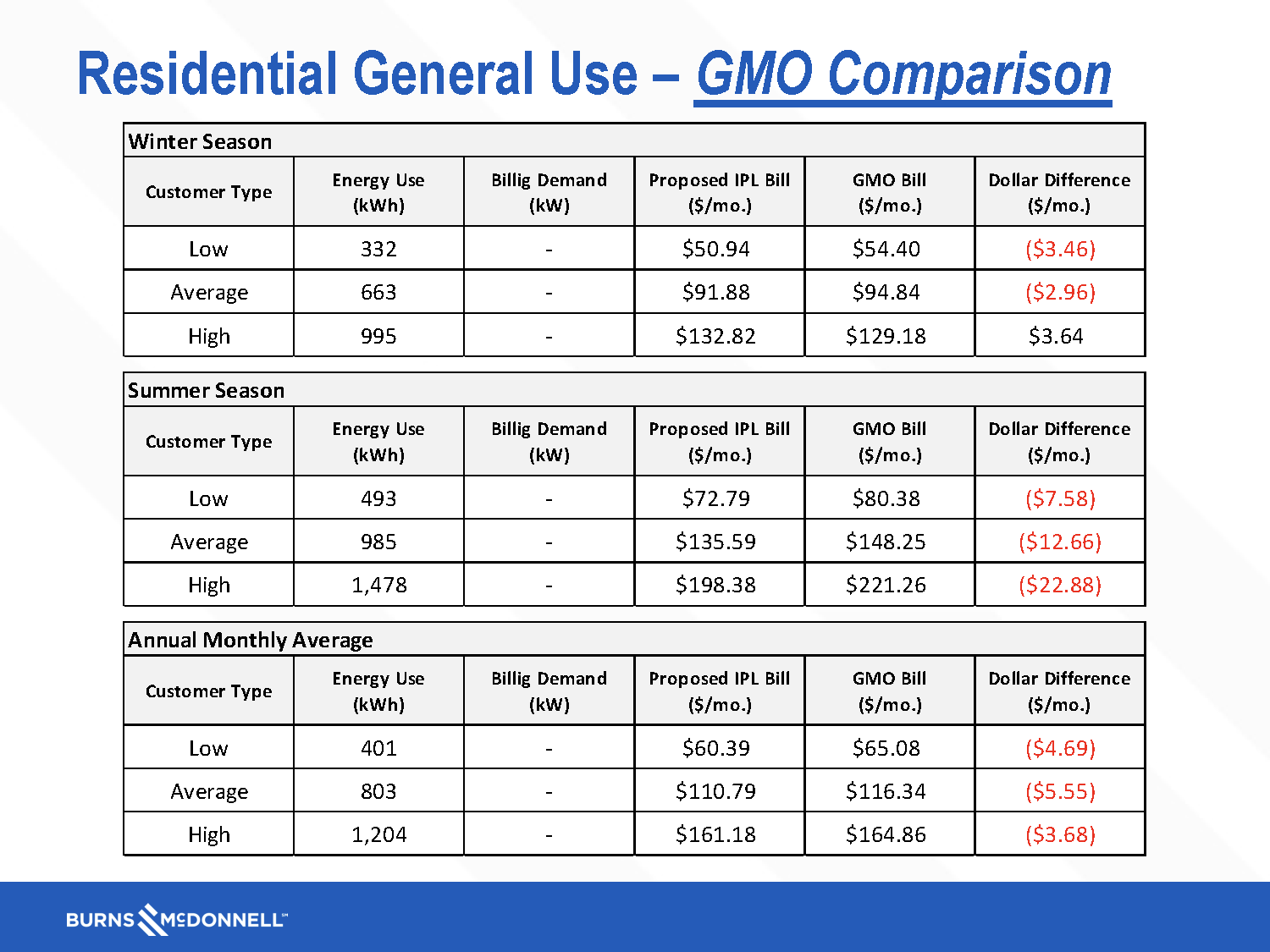


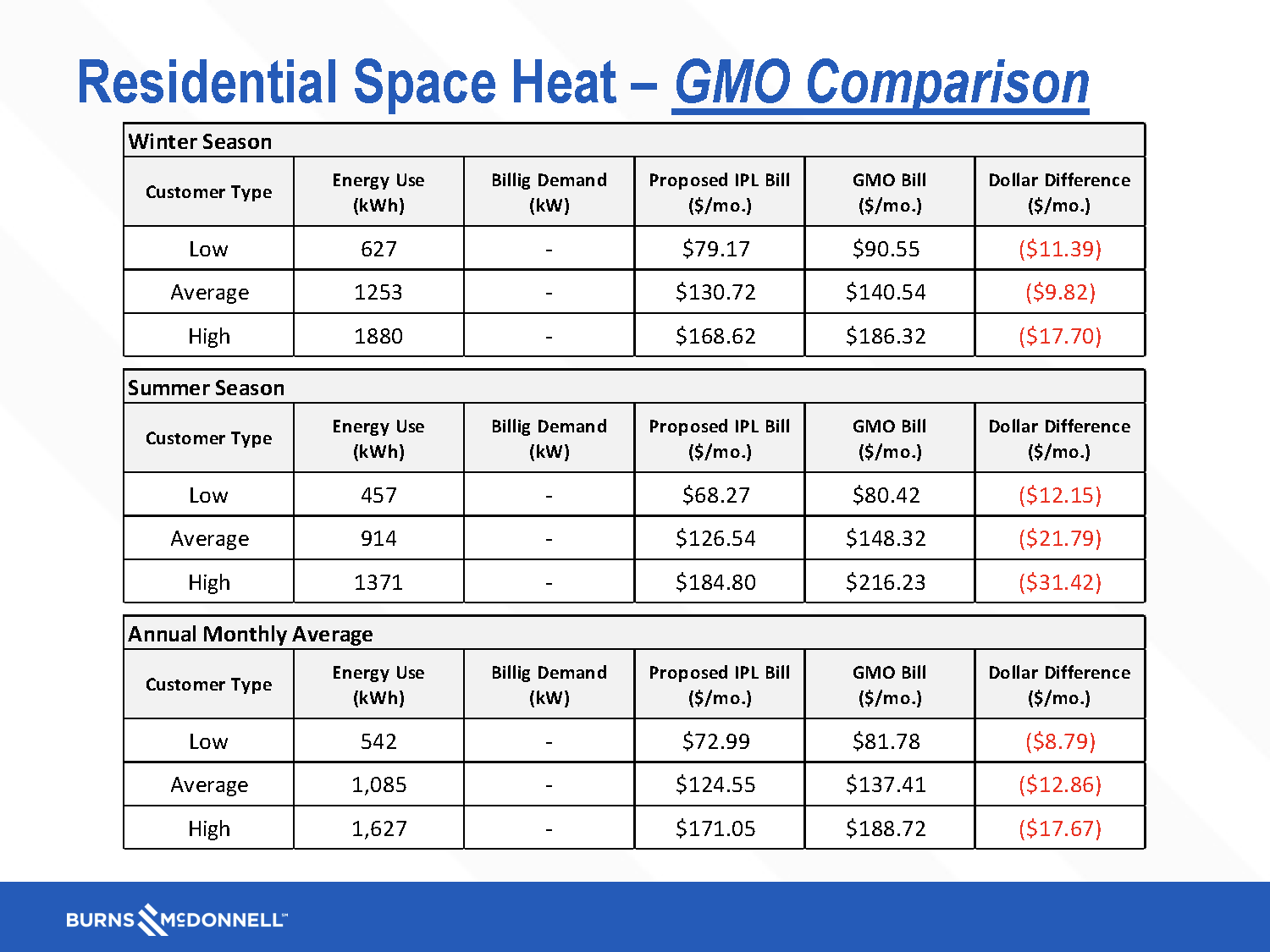



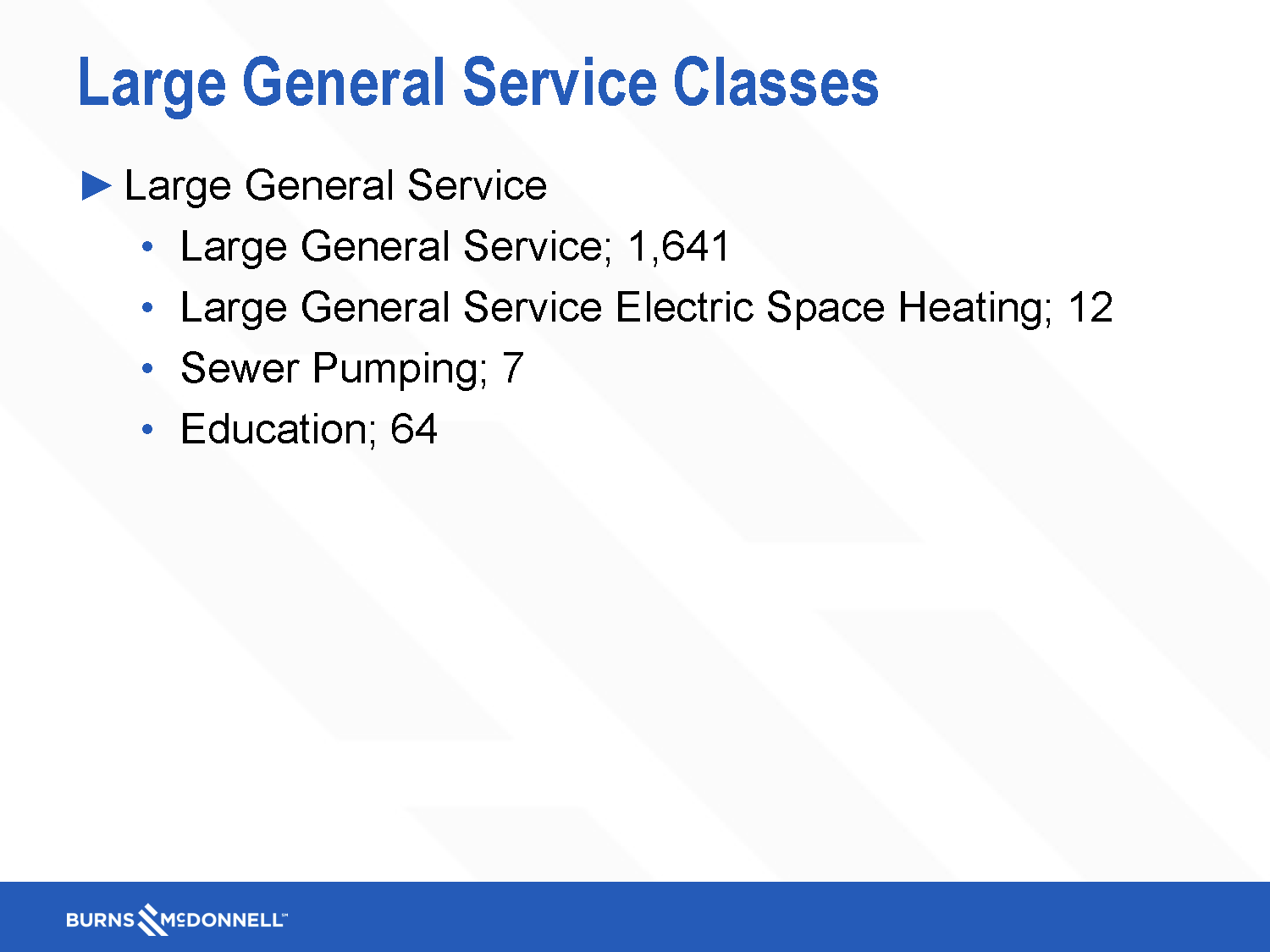

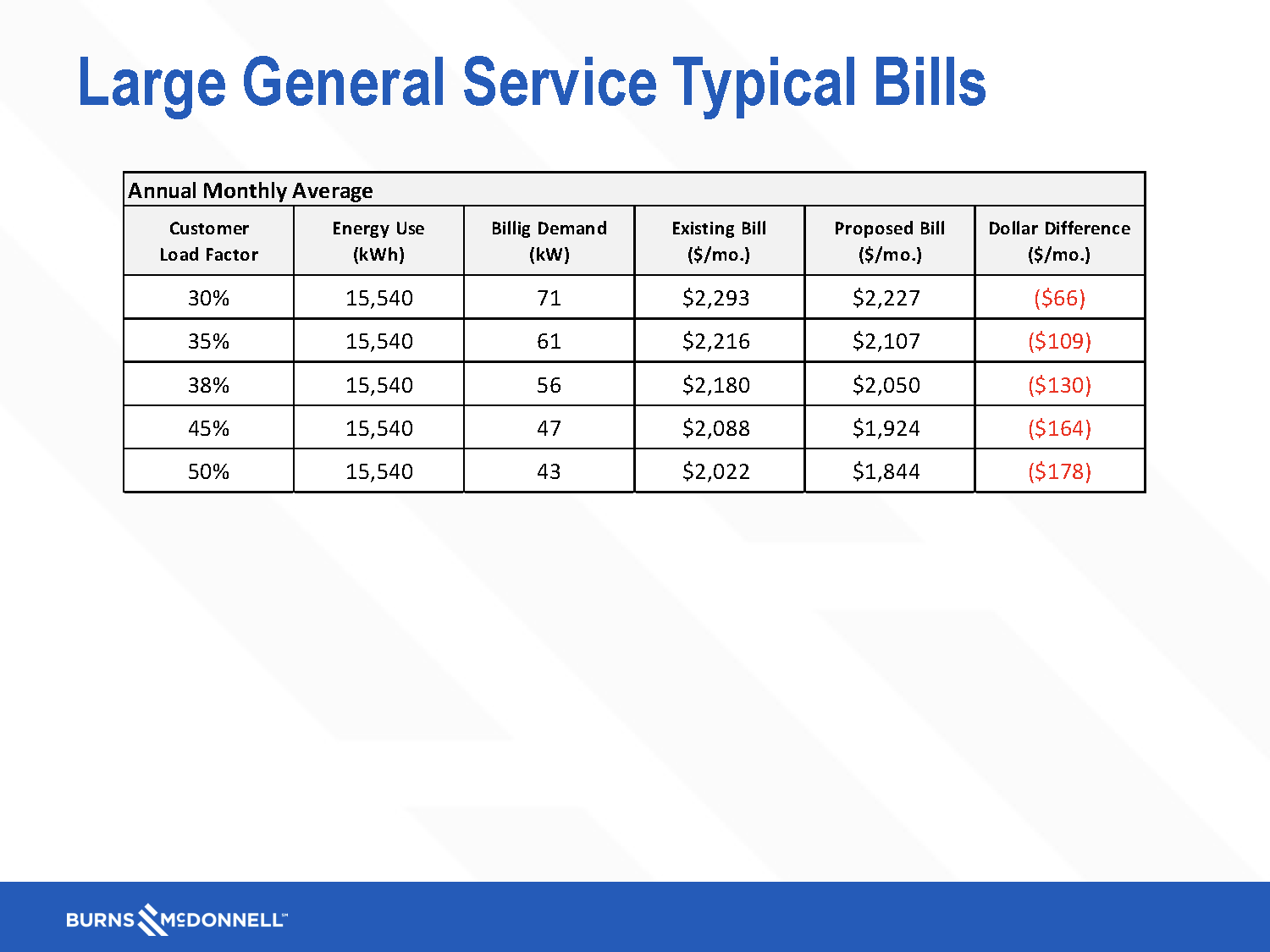
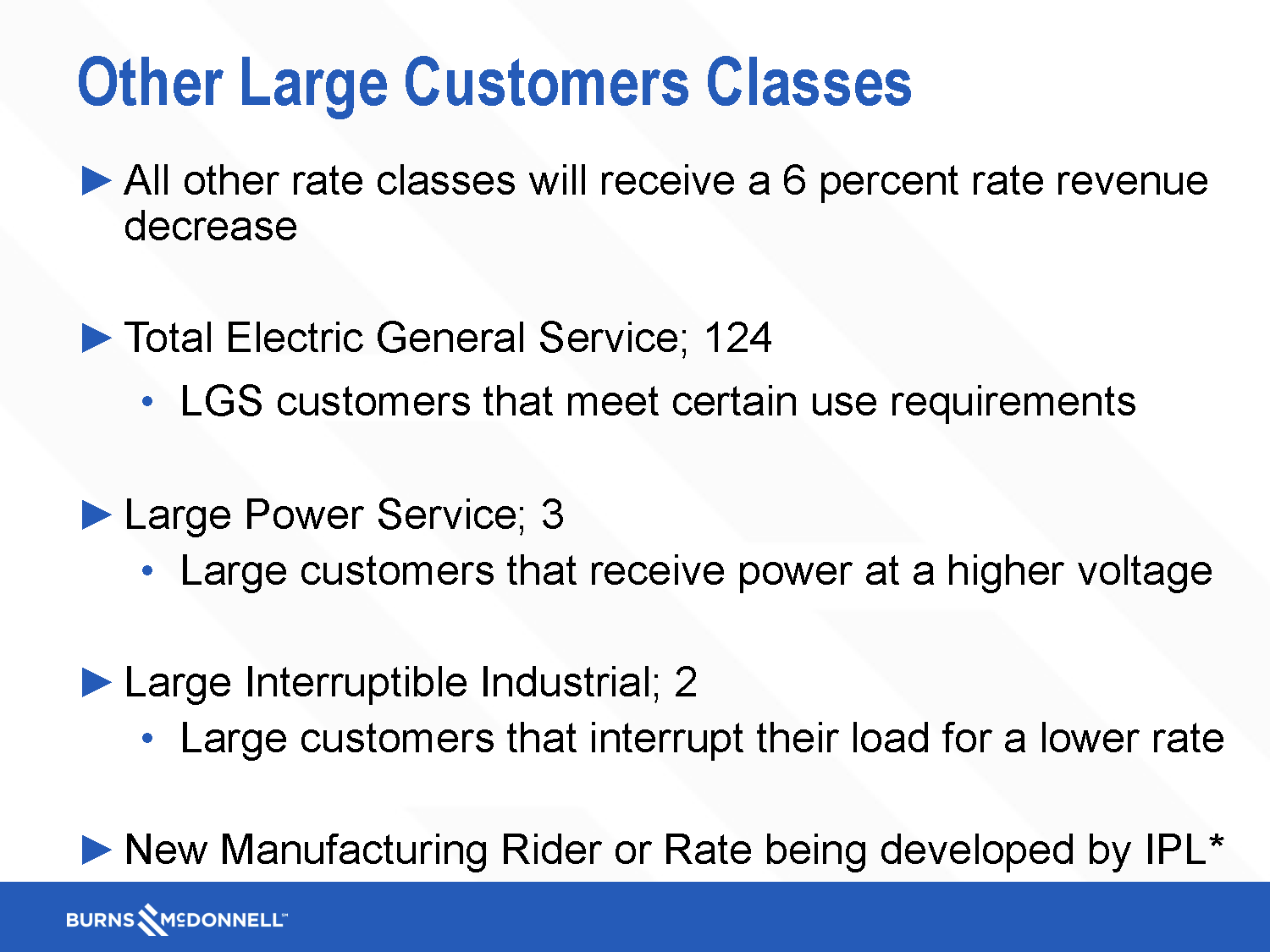



IPL rates, in general, have been higher than other area utilities including the investor-owned Kansas City Power and Light. IPL commercial and industrial rates are not competitive and IPL has a complicated rate structure.
City officials said the new residential rates would be the lowest in the region. Comparisons to rates of other municipal electric utilities were not presented.
The rate study show the average residential customer would save $7.92 compared to their current bill or approximately $95 annually. (See examples below). The potential savings depends on customer usage. Customers with low monthly usage would see potential cost reductions of $12 annually.
This rate study comes four years after an early rate study which incidentally recommended many of the same things. In September 2014, the then City Council voted unanimously to indefinitely postpone changes in IPL rates.
The 2015 rate recommendations faced opposition to changing a $4.14 minimum monthly bill to a $14.50 monthly customer charge. The current rate proposal recommends a monthly residential customer charge of $10, but the overall 6% rate reduction should lower what a residential customer actually pays.
Background information on IPL rates
City Council Approves a 4% rate reduction effective Aug. 1
The Independence City Council approved a 4% across the board electric utility rate reduction by a 6-1 vote at its May 13th meeting.
The amount was less than the three-year 10% reduction which City Council member Mike Huff, but he supported the lower amount at the meeting.
The 4% reduction is approximately $5.5 million based on projected annual IPL revenue of $137 million.
The rate reduction directs the City Manager to identify cost savings at Independence Power and Light to offset the rate reductions. The City Council debate is in the video below.
That same evening a preliminary rate study was presented by Burns McDonnell which recommended against rate reductions larger than 2%.
Updated Nov. 16, 2018 - The Public Utilities Advisory Board supports rate reduction proposal advanced by City Council Member Mike Huff.
City Council Considers IPL Rate Reductions
The Independence City Council is poised to consider actions to reduce commercial and industrial rates to make them more competitive - potentially saving the large-scale customers $3 million annually.
The effort is being led by Council member Mike Huff, a former senior manager at IPL who was elected in April.
Table from 2015 Sawvel Rate study
Huff wants the City Council to adopt the general provisions of a 2015 rate study which was tabled by the City Council.
Huff, in a media release, stated:
“The rate decrease I am proposing incorporates the Sawvel and Associates report and it is my belief that the City charter requires that the electric utility shall apply any and all annual surpluses to rate reductions. If this proposal is adopted by my Council colleagues, it will be the first time in decades, if in not the history of the City that the City Council has granted our rate payers a reduction in their utility rates.”
Huff reference is to Section 3.17 of the City Charter. (See language)
Independence City CHARTER
The proposal will be presented to the Public Utilities Advisory Board at is Nov. 15 meeting and the City Council will consider a resolution Nov. 19th.
IPL currently has few commercial and industrial customers - larger utility users which can help the overall electrical system balances generating loads and make the overall utility more competitive.
Huff, in an Examiner article, stated: “They've (industrial and commercial customers) got the biggest burden. We do this effective immediately, then (later) reduce residential rates. Everyone needs to be patient. This is the first step to making it right for the citizens.”
A current cost of service study by Burns and McDonnell is underway.
IPL provided a rate comparison in August 2017. Here’s the comparison for large general service customers and also residential.
IPL rates, in general, are higher than other area utilities including the investor-owned Kansas City Power and Light. IPL commercial and industrial rates are not competitive and IPL has a complicated rate structure.
In September 2015, the City Council voted unanimously to indefinitely postpone changes in IPL rates in September 2015 but there is growing pressure to make changes in the rates.
The 2015 rate recommendations faced opposition to changing a $4.14 minimum monthly bill to a $14.50 monthly customer charge.
The council took several months to review and better understand recommendations included a May 2015 rate study done by its long-time IPL rate consultant.
At that time, Indy Energy provided the council with several policy recommendations for consideration - including supporting rate reductions for commercial and industrial customers - during 2015 public hearings.
Others presenting included representatives from the AARP, the Natural Resources Defense Council and the Eastern Jackson County Justice Coalition.
There was broad agreement on opposing increasing the fixed customer charges as creating financial burdens on low-income, fixed income and low-energy users and discouraging energy conservation.
Others spoke in favor of developing energy efficiency programs, increasing utility assistance and more renewable energy.
The last major rate change was approved in 2008 when a series of year-to-year rate increases were approved. Read KC Star article about the 2008 rate approval.
Public Power is Suppose to Cost Less
In general, publicly owned power costs less based on national analysis by the American Public Power Association.
The APPA study shows that residential customers of investor-owned utilities paid average rates that were 14% higher than publicly-owned systems.
Currently IP&L residential rates are higher than the investor-owned Kansas City Power & Light.
Data came from 2,006 publicly owned electric utilities, 193 investor-owned utilities and 873 cooperatives from across the nation.
Other information
A benchmarking study by the Board of Public Utilities (Kansas City, KS) included cost and operating comparisons to IPL.
IPL officials differed with many of the figures in the BPU report which was done by an independent firm.








